|
|
Post by 2sneezles on Aug 27, 2017 9:40:30 GMT 10
hello our Don has an aluminium guard attached over the plywood in the front and goes half way up it looks like its always been there. did the 1948 don come out that way also does anyone have the correct colors for the outside we want to get it back to the original colors its a soft pink and creme inside
thanks
|
|
|
|
Post by Don Ricardo on Sept 11, 2017 18:46:17 GMT 10
hello our Don has an aluminium guard attached over the plywood in the front and goes half way up it looks like its always been there. did the 1948 don come out that way also does anyone have the correct colors for the outside we want to get it back to the original colors its a soft pink and creme inside thanks For anyone interested, the correct paint colours for post-War Don caravans can be found higher up this thread here. This info has just been updated because some of the original paint is no longer available or provided the incorrect shade. Don Ricardo |
|
|
|
Post by Don Ricardo on Sept 18, 2017 21:34:21 GMT 10
Hi all, Once you get immersed into how a particular caravan manufacturer built their vans you begin to notice all sorts of little variations which have occurred along the way. This evening I was looking at a couple of photos Cobber posted back in 2010, that show the scene at the first RACV caravan rally held in 1937 at Barwon Heads in Victoria: 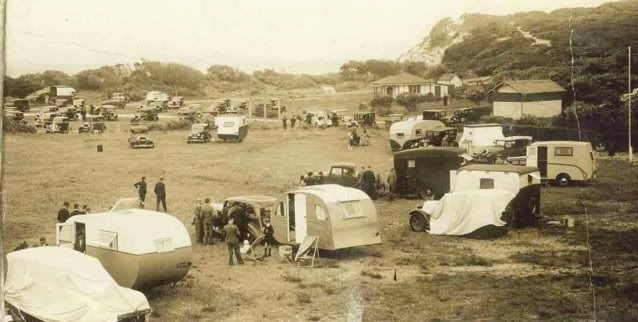 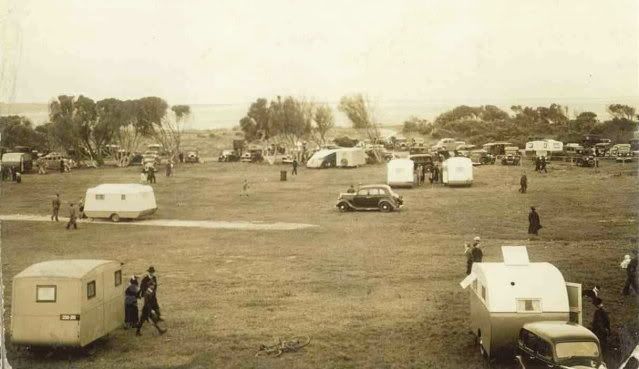 The photos are fascinating because they show a variety of the caravans that were out and about in the late 1930's, some of which we've been able to identify here. The caravans in the bottom left hand corner of the first photo, and the bottom right hand corner of the second photo are both Dons, and probably the same van, just from different ends. What suddenly struck me for the first time - even though it had been staring me in the face all along - is that the door on the caravan is hung on the left, ie it is hinged towards the front of the van. Inspection of a few more photos and adverts shows that this was apparently the norm on the "small" (10 ft 100 model and 12 ft 6 in 120 model) pre-War Dons. For example, this photo of a Don 100 taken in 1938 shows a van with its door hinged on the left - you can tell by the placement of the door handle: 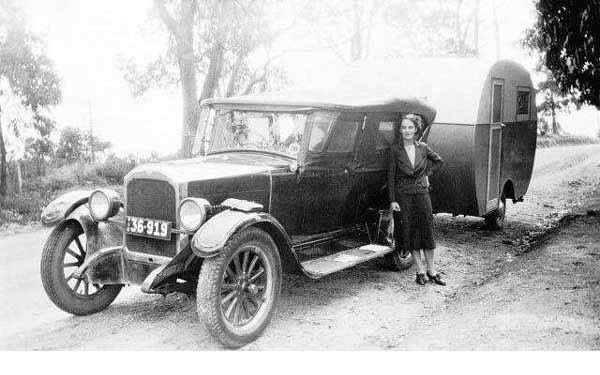 Source: Museum of Victoria 'Biggest Photo Album - Record No MM 003158 Source: Museum of Victoria 'Biggest Photo Album - Record No MM 003158
museumvictoria.com.au/bfa/view_single.asp?qNum=MM%20003158Similarly this photo published in Table Talk on Thursday, 28 October 1937 (p 55) shows a 12 ft Don 120 with the door hinged on the left: 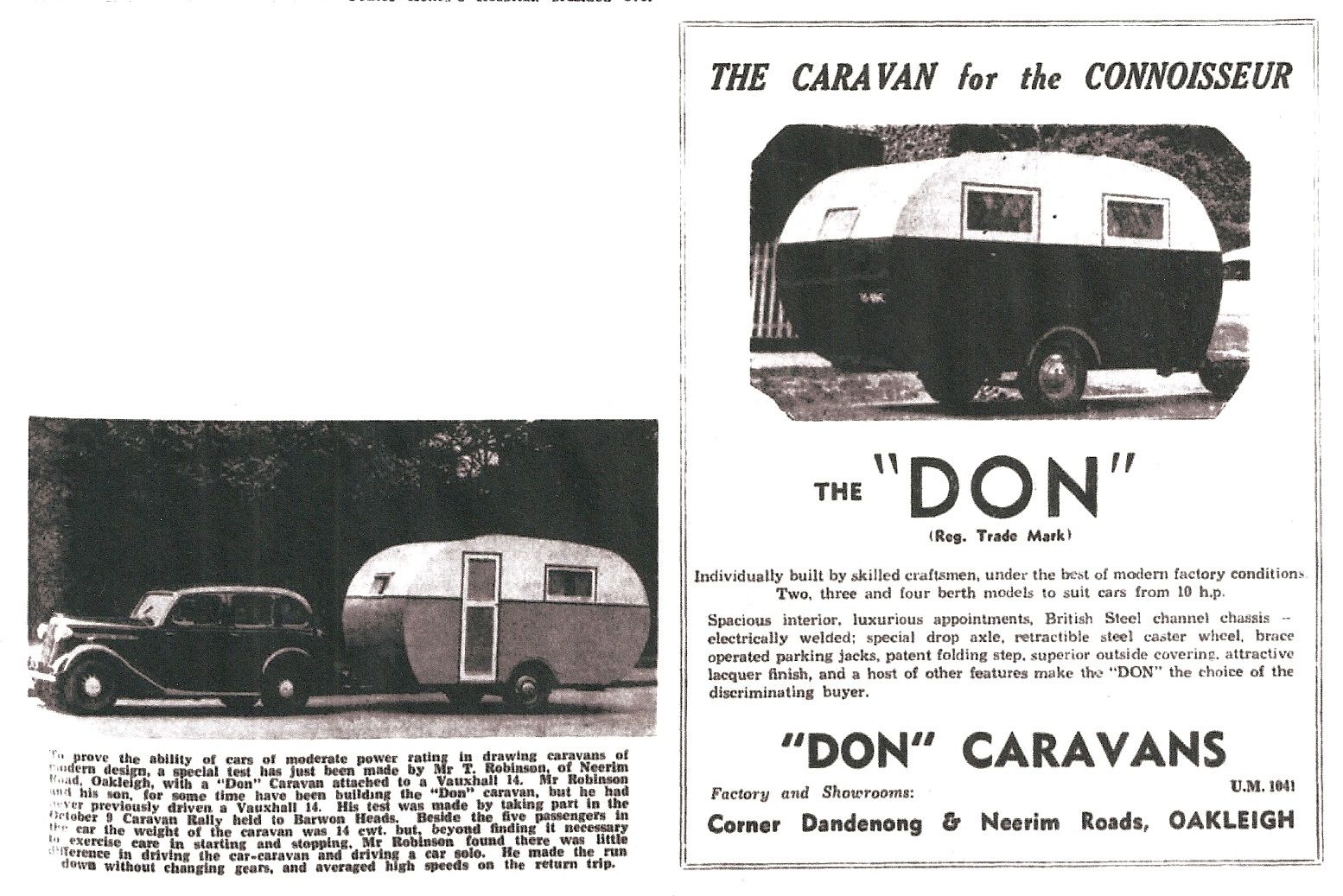 (Source: National Library of Australia trove.nla.gov.au/ndp/imageservice/nla.news-page17692432 ) However, at some point after World War II, the small Don began to hang the doors of the "small" caravans on the right hand side. The change happened somewhere between serial number 213 (which has a left hanging door) and serial number 257, shown below with a right hanging door as indicated by the placement of the door handle (the objects at the top and bottom left of the door appear to be additional non-standard catches): 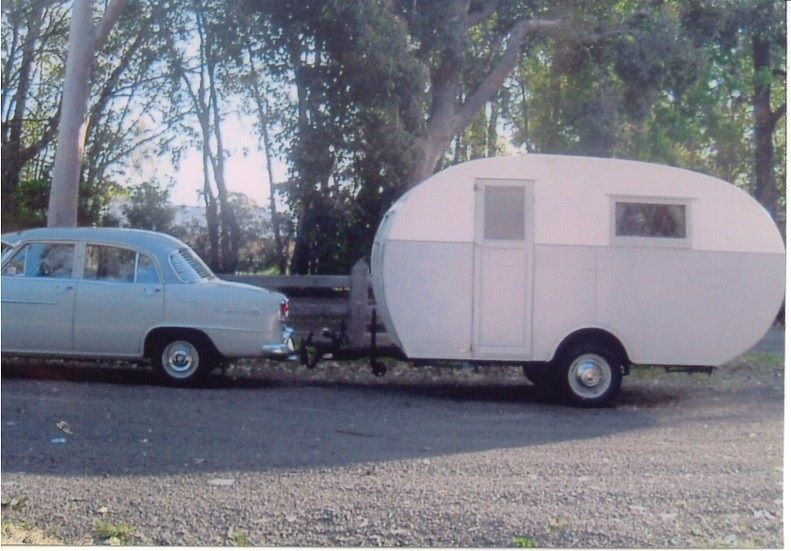 As far as I have been able to discover, the larger 14 ft Don 140 was always built with right hanging doors, like our 1949 caravan, seen here in some atmospheric mist at Bruthen in East Gippsland: 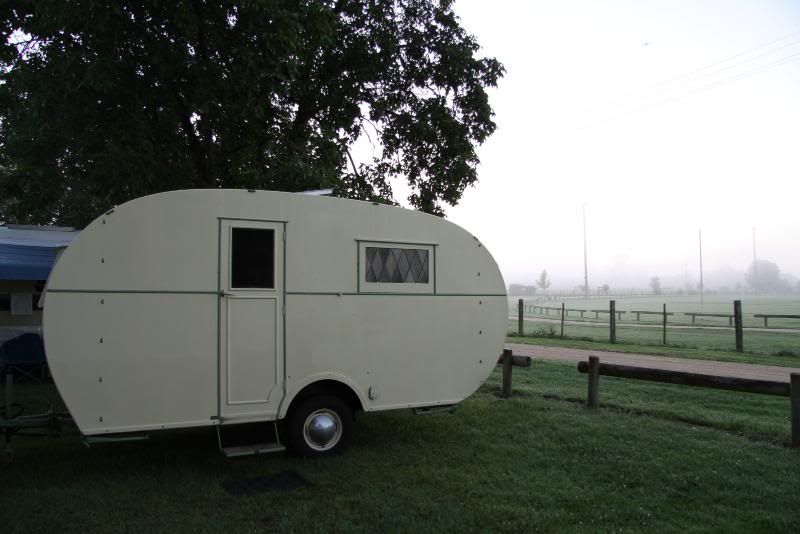 Interestingly, Don Caravans' post-War publicity even up until the early 50's showed their caravans with the door hung on the left, like this advert showing a Don 120 from the 1951 Winser caravan manual posted higher up this thread by Cobber: 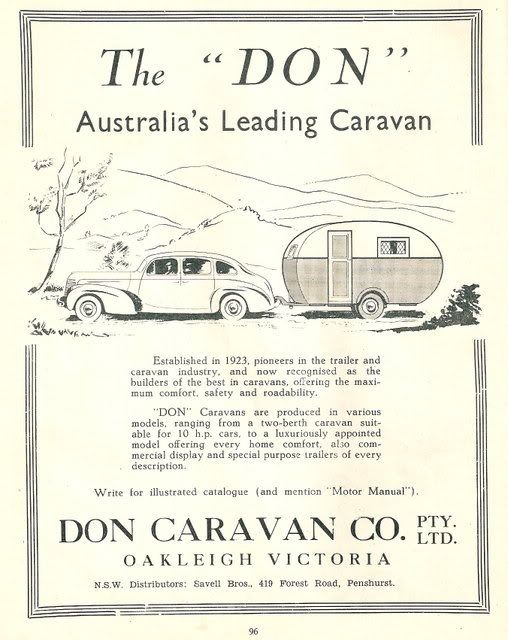 Just one of those little lanes off the main road of caravan history.    There was a change in the shape of the door on the 140 model too, but I'll pick that up in another post. Don Ricardo |
|
|
|
Post by Don Ricardo on Nov 27, 2017 11:53:35 GMT 10
Hi all, An interesting photo posted by Collin Allott on the Old Darwin Facebook page on 3 May 2017 here, showing a Don 100 on a train going...where? 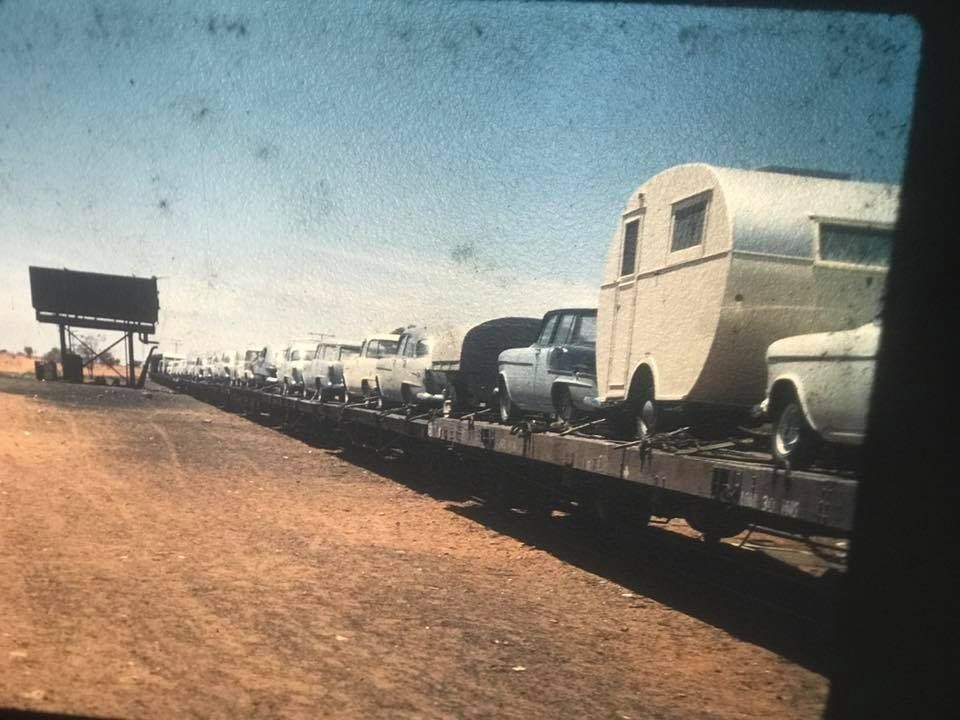 Collin Allott posted a lot of photos from Darwin on the 'Old Darwin' Facebook page on the same day, and another poster has annotated the photo as "An oldie coming into Darwin on the rail". Most, if not all, of the vehicles you can see appear to be FC Holdens, suggesting that the photo was taken between 1958 and 1960 when the FC model was in production, and that the vehicles were a consignment of new Holdens heading from the GM-H factory in Adelaide to Darwin...but... As it happens there wasn't a full rail link between Adelaide and Darwin between 1958 and 1960. The Southern Line from Adelaide only went north as far as Alice Springs, and the Northern Line from Darwin only extended south as far as Birdum, leaving a close to 1,000 km gap in between. So would vehicles have been trucked overland from Alice Springs to Birdum? Seems a bit doubtful to me, but perhaps. I think it is more likely that goods to be sent to Darwin from southern seaboard cities would have been sent by ship. Anyone know? An interesting photo in any case. Don Ricardo |
|
|
|
Post by Don Ricardo on Dec 7, 2017 22:15:46 GMT 10
Hi all, Back in March 2011, Stooy introduced us here to his Don 140, serial number 718, which had been purchased almost new by his grandfather around 1953. An interesting feature of Stooy's van is that it has two aluminium framed front windows... 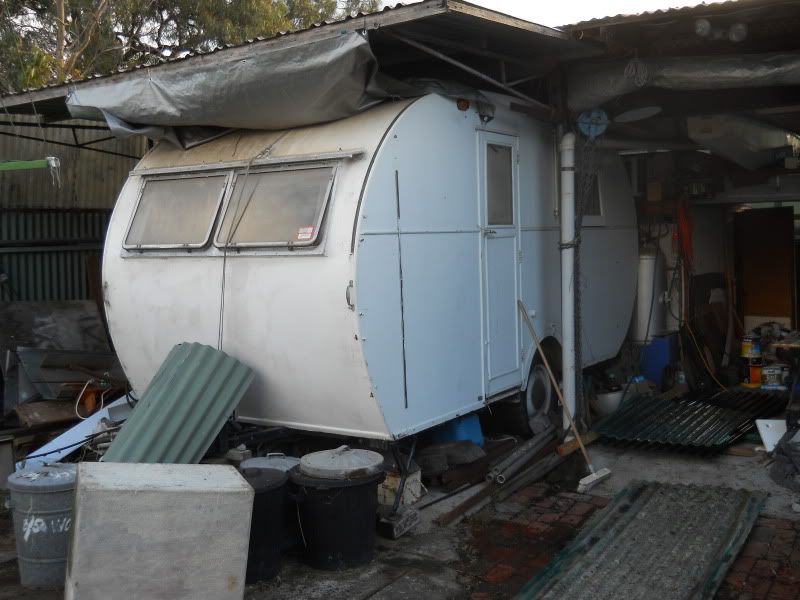 ...so that makes it a bit different to the normal single, timber-framed, leadlight windows usually seen in pre-1956 Dons, as shown here: 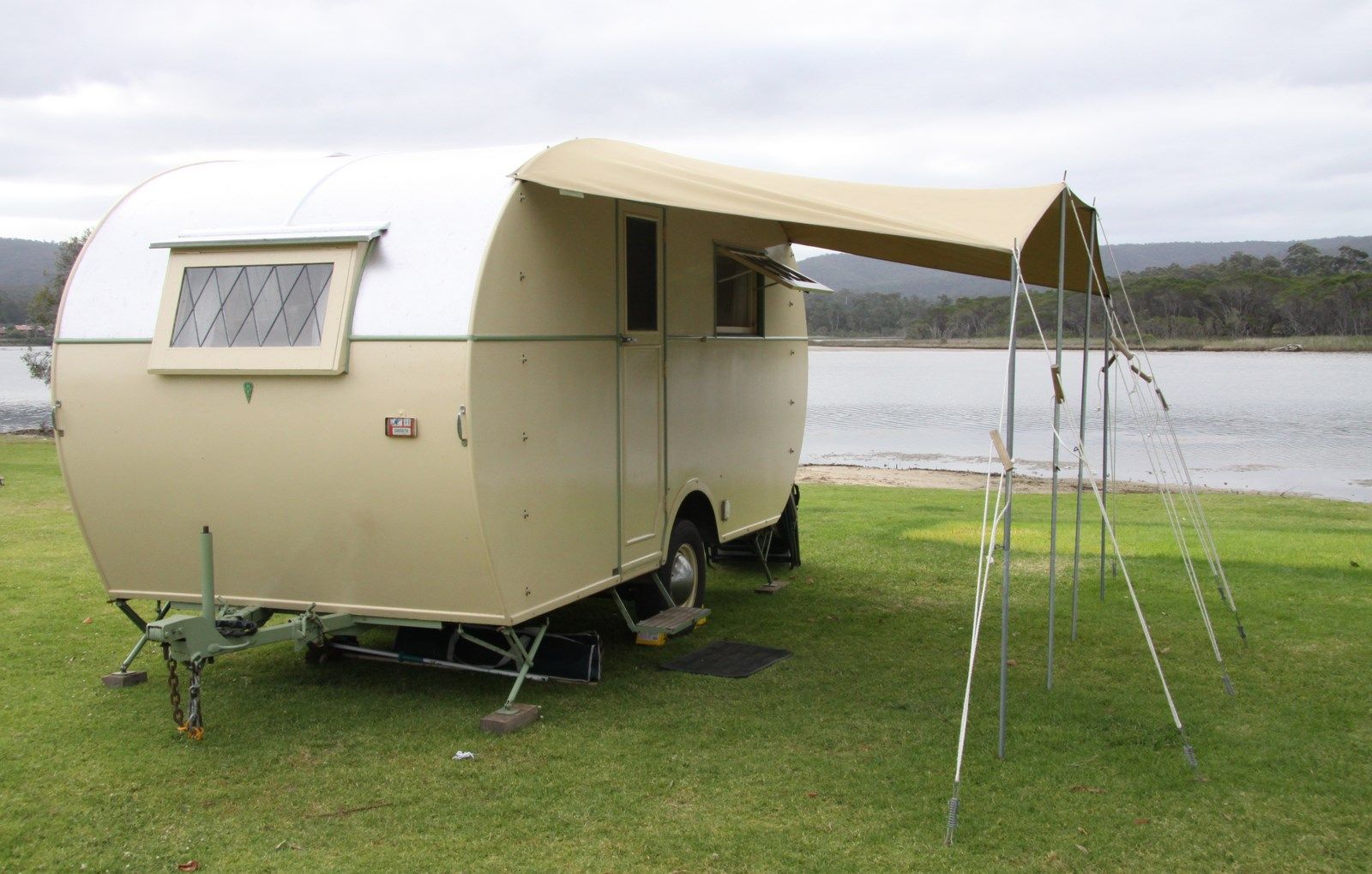 Over time Stooy has provided us with a couple of photos of his van on the move. This one is the van being towed back to his place from his grandfather's in 2016: 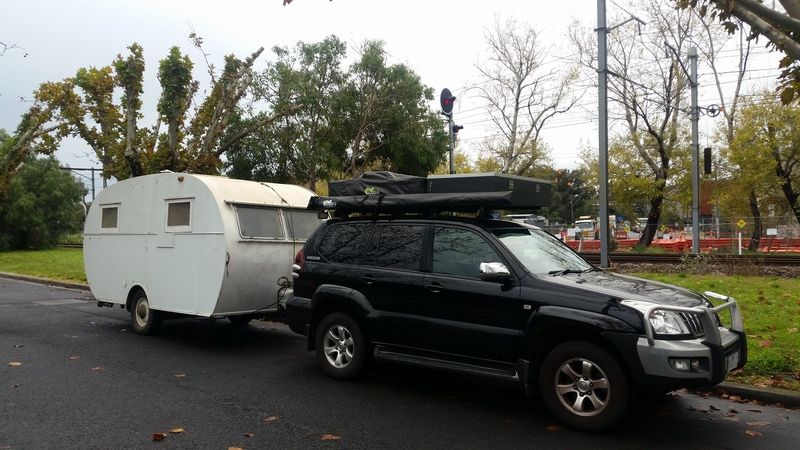 And on a trip to Mt Tarrengower Hill Climb a few months later: 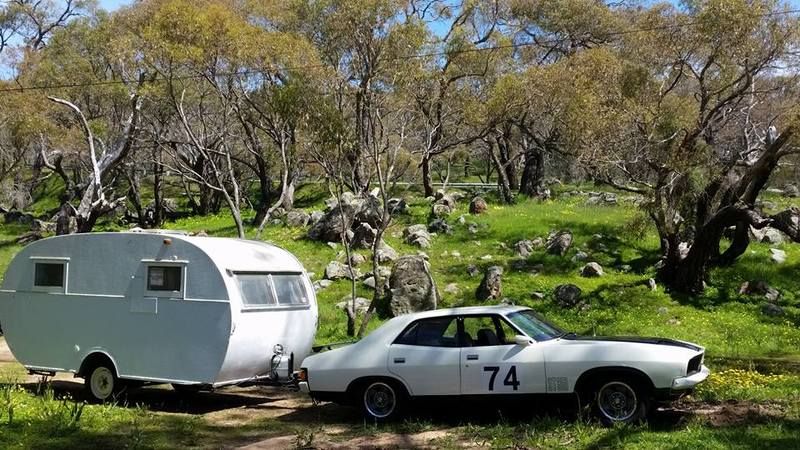 In his initial post, Stooy told us that: "The van was purchased one year old by my grandfather from Don in Oakleigh. We understand it to be the first Don fitted with full width front aluminum windows.
It was used a lot by the family since it was purchased, particularly at Blairgowrie where it went every summer for over 50 years." He also told us that: "My grandad remembers that this was one of two vans built with these windows. It was originally ordered by someone else but the gentleman decided he didn't want it once it was complete, so Grandad bought it.
It spent some time at Greenacres {a caravan park owned by Don Robinson} after it was purchased to help with the purchase cost.
The internal fly screens (from memory) hinge at the bottom and are retained by a rotating steel clip at the top.
Also my uncle was telling me today the devices which hold the windows open are an early type of mechanical strut with an overcentre spring in them."What is intriguing about the front windows in Stooy's van is that we know that Don Robinson who built Don caravans was not really open to change or modifying his designs - what you saw in the show room is what you got. Don didn't introduce metal framed (steel or aluminium) windows in their vans until 1956 when they were used in the brand new luxury 150 model. So what to think of this van of Stooy's with such a radical design departure for a Don caravan in the early 50's? Earlier this year, Wal Robinson (nephew of Don Robinson) and I arranged a visit to see Stooy's van. Here are Stooy and Wal in front of the caravan: 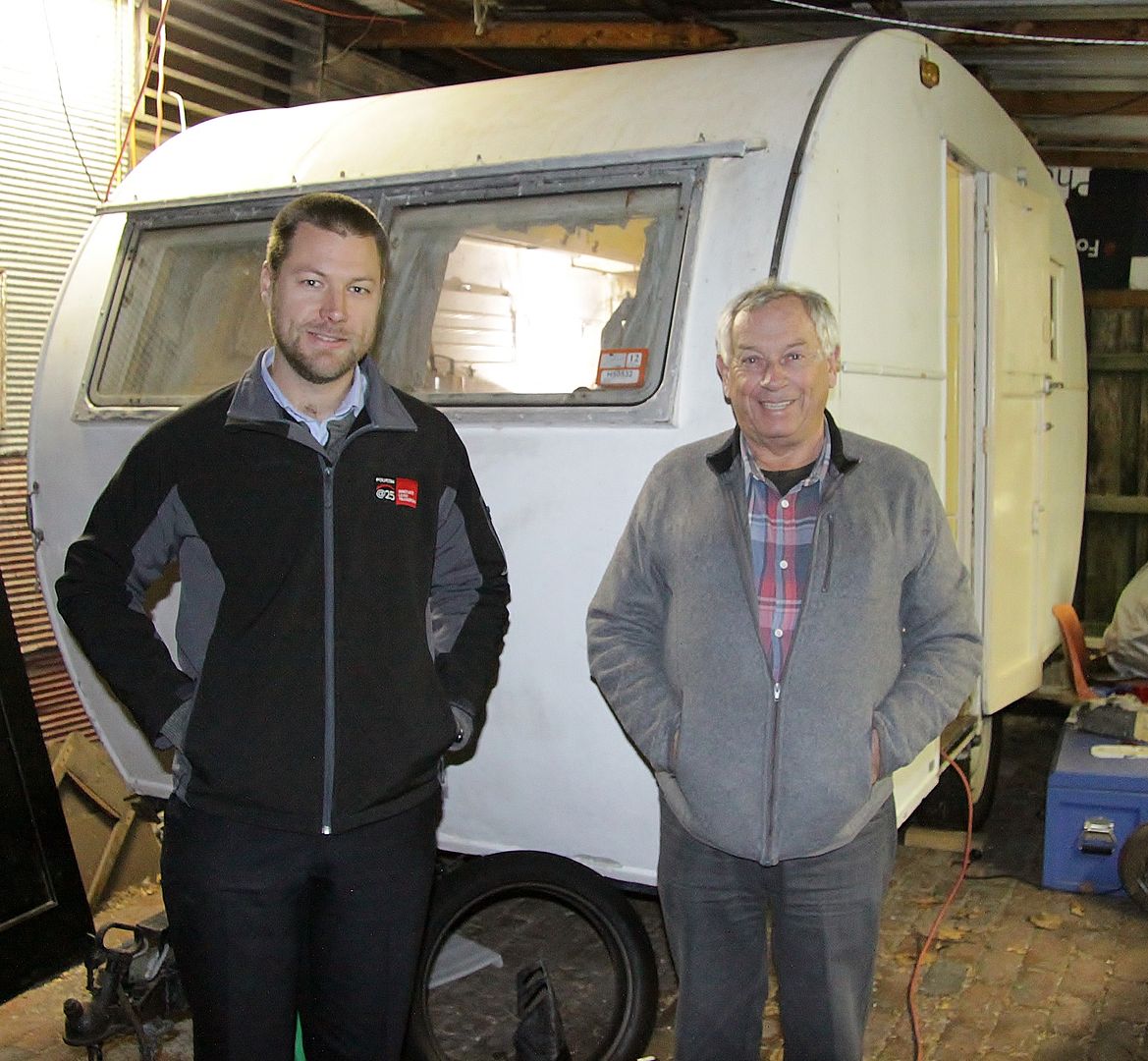 We spent quite a bit of time examining the front windows in detail: 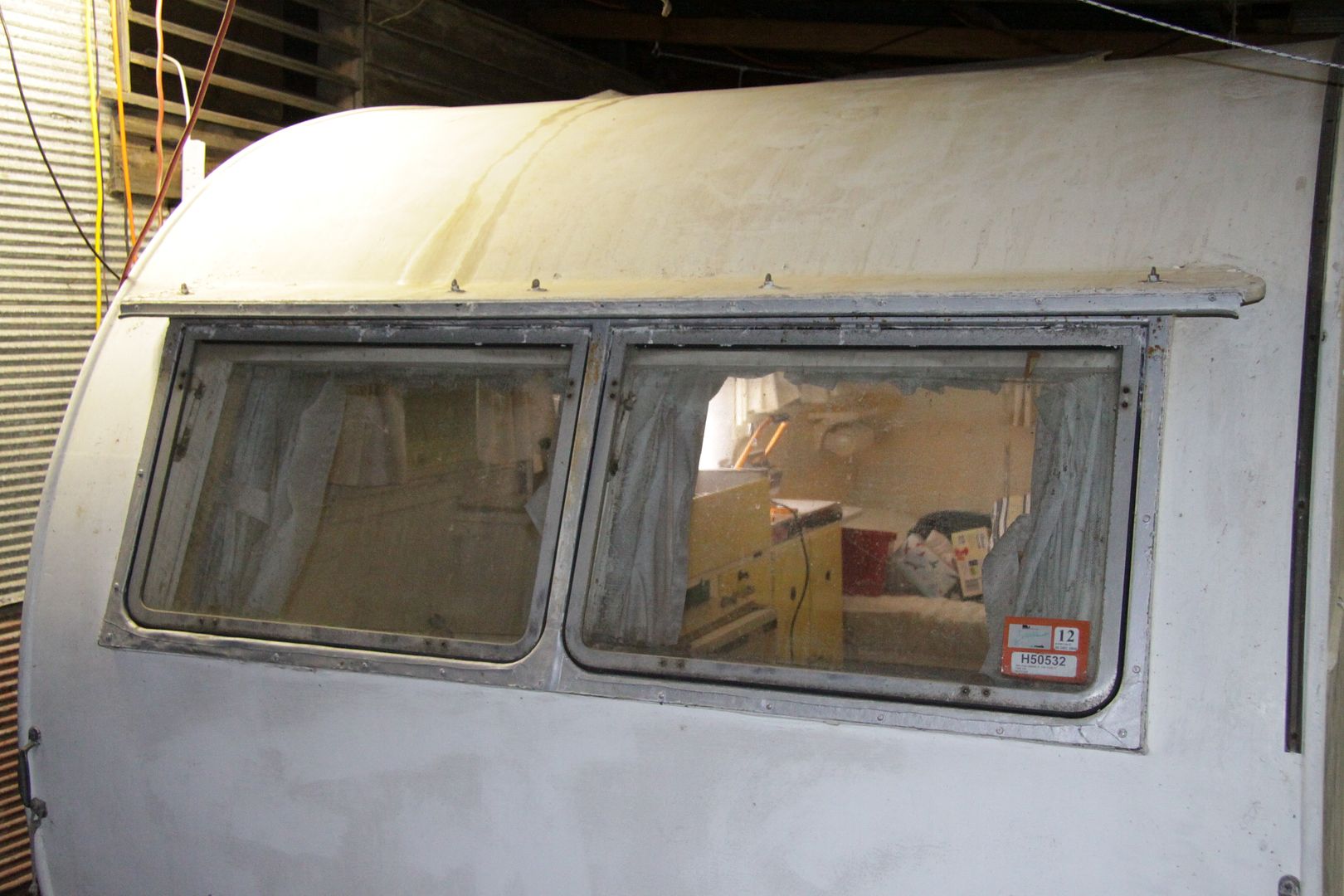 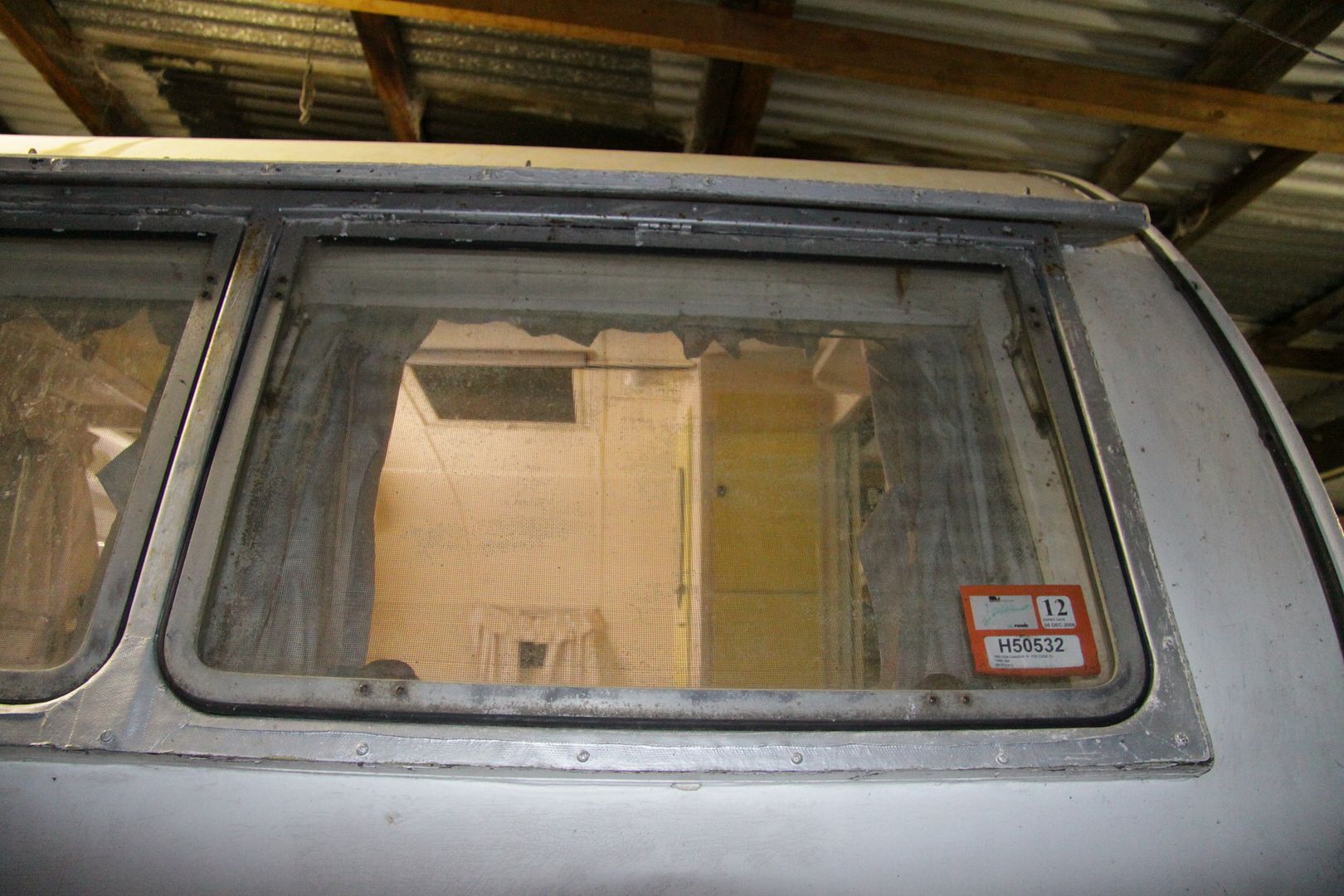 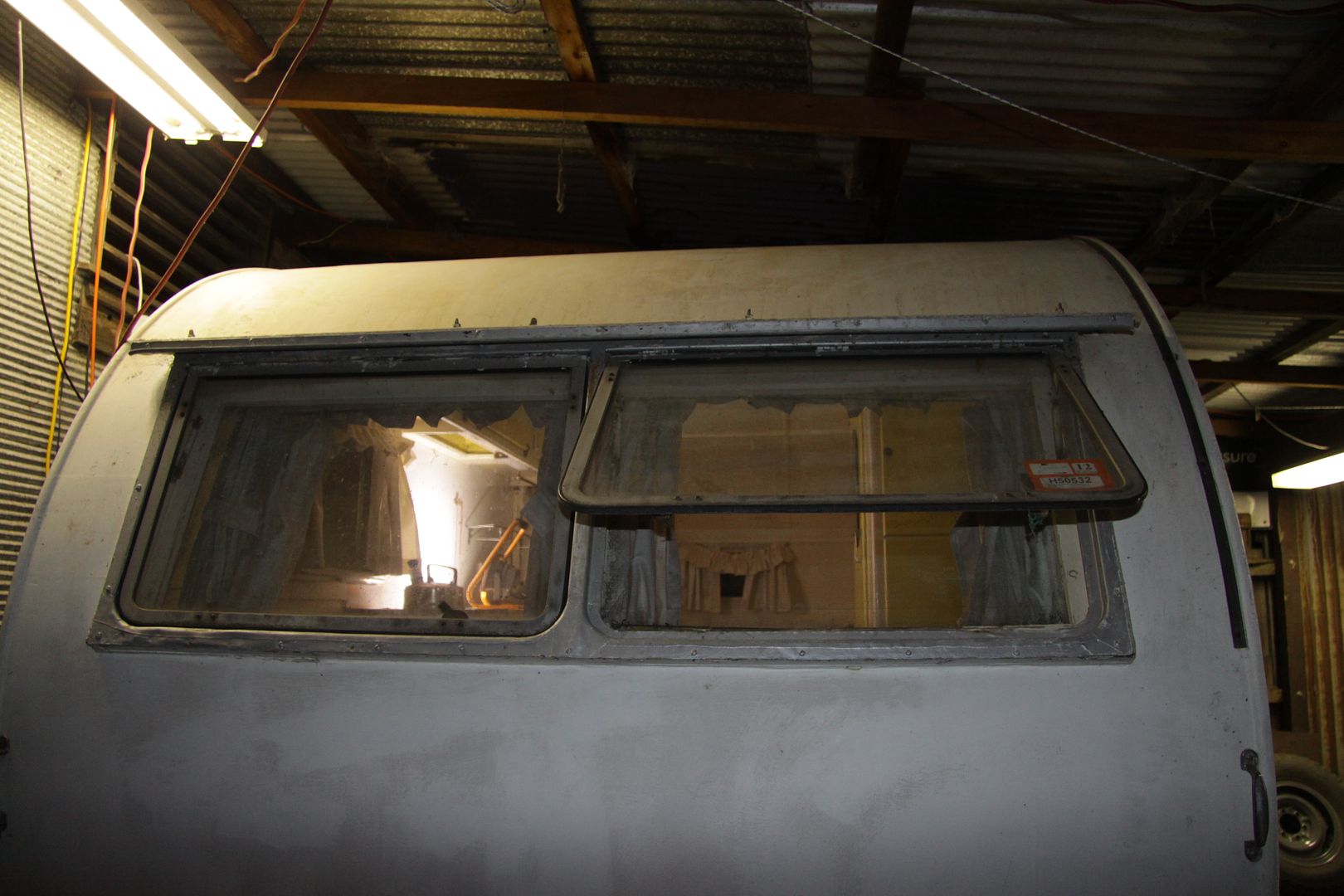 The window catches can be seen in the photo below. They appear to consist of a ring and a tongue, with the tongue swinging around to engage the frame of the window when closed. (I didn't actually look carefully enough at this aspect when visting Stooy.): 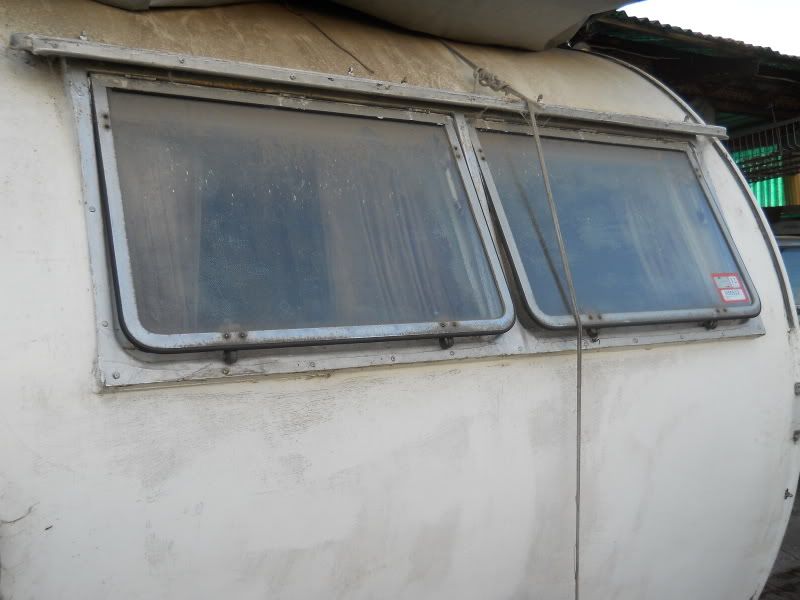 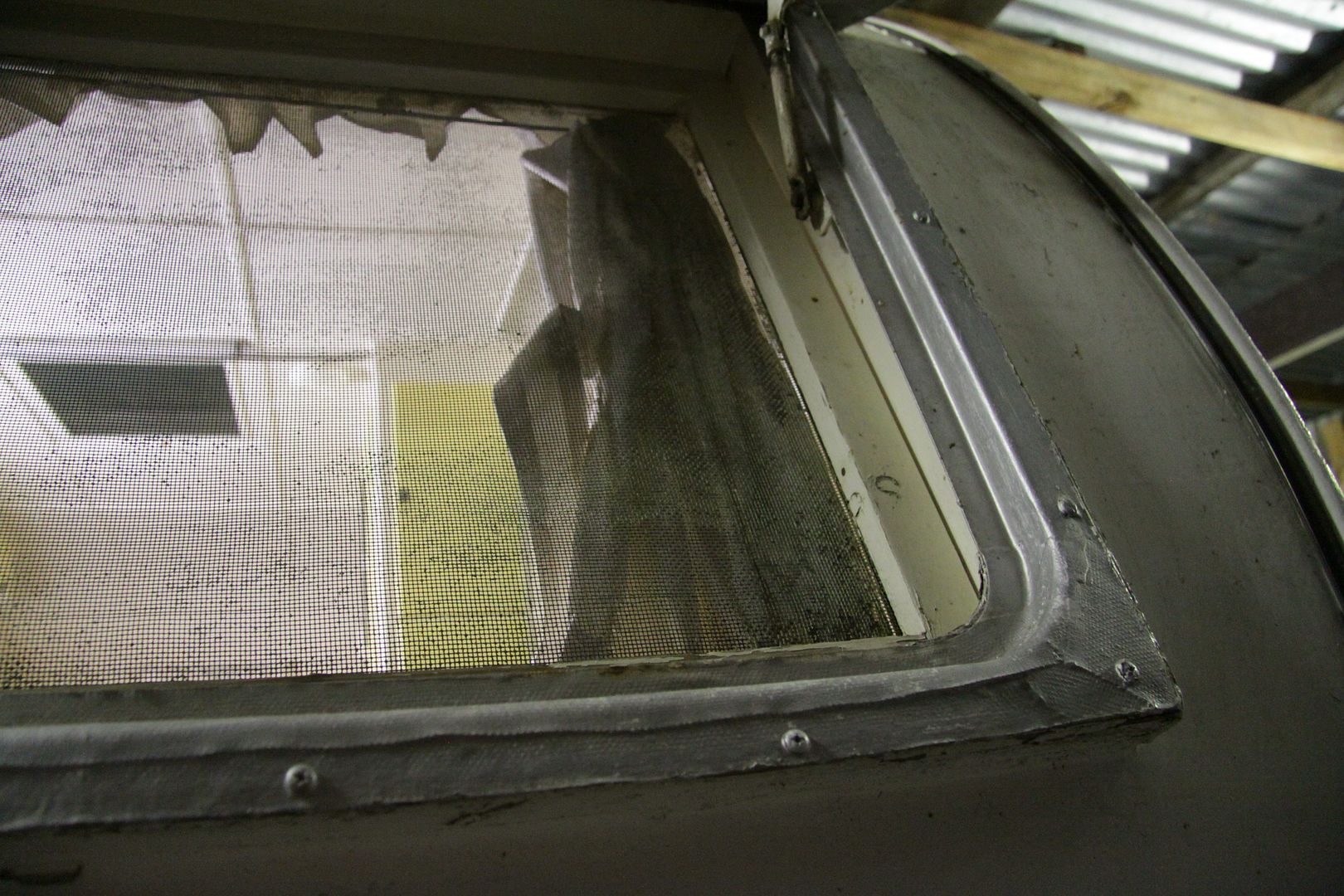 The mechanical strut described by Stooy in his comment above: 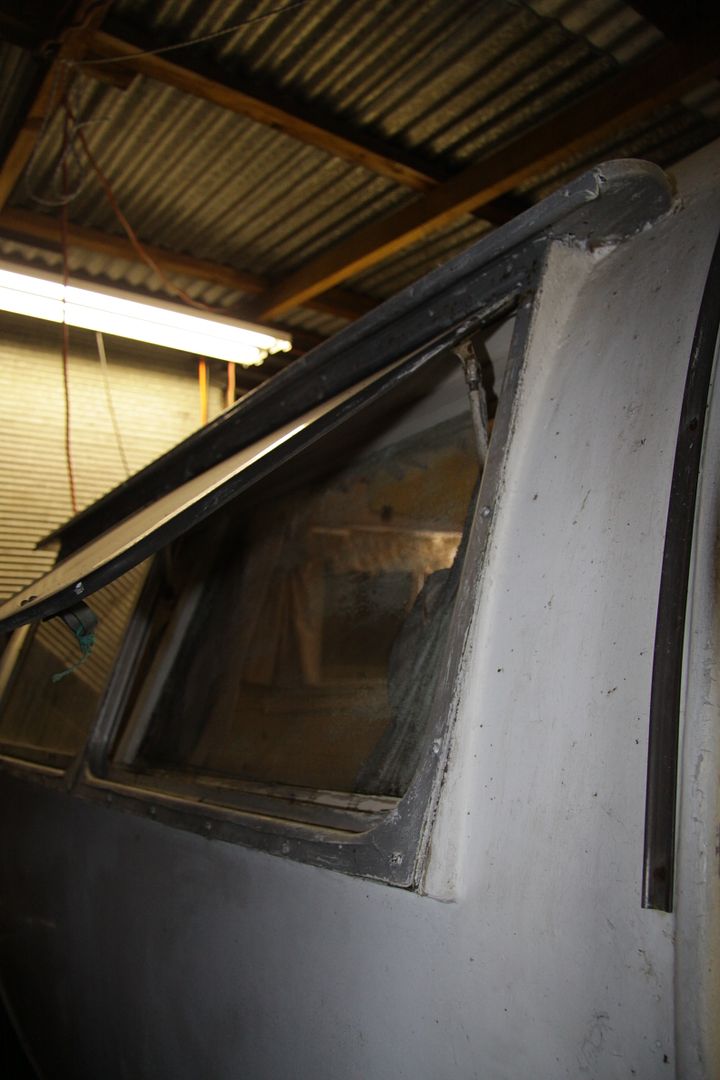 While the aluminium windows are themselves very different to the normal timber windows, we were interested to see that they had been installed in the front wall in the same way, and using the same technique as the timber windows. In addition, the drip ledge above the window, although obviously longer than normal to cover the two windows, was constructed, finished and installed in the same way as the ledge above the normal timber window, and utilised the same gutter on the edge of the ledge. The ledge and the gutter can be seen in the photo immediately above. Looking at the windows from inside the van: 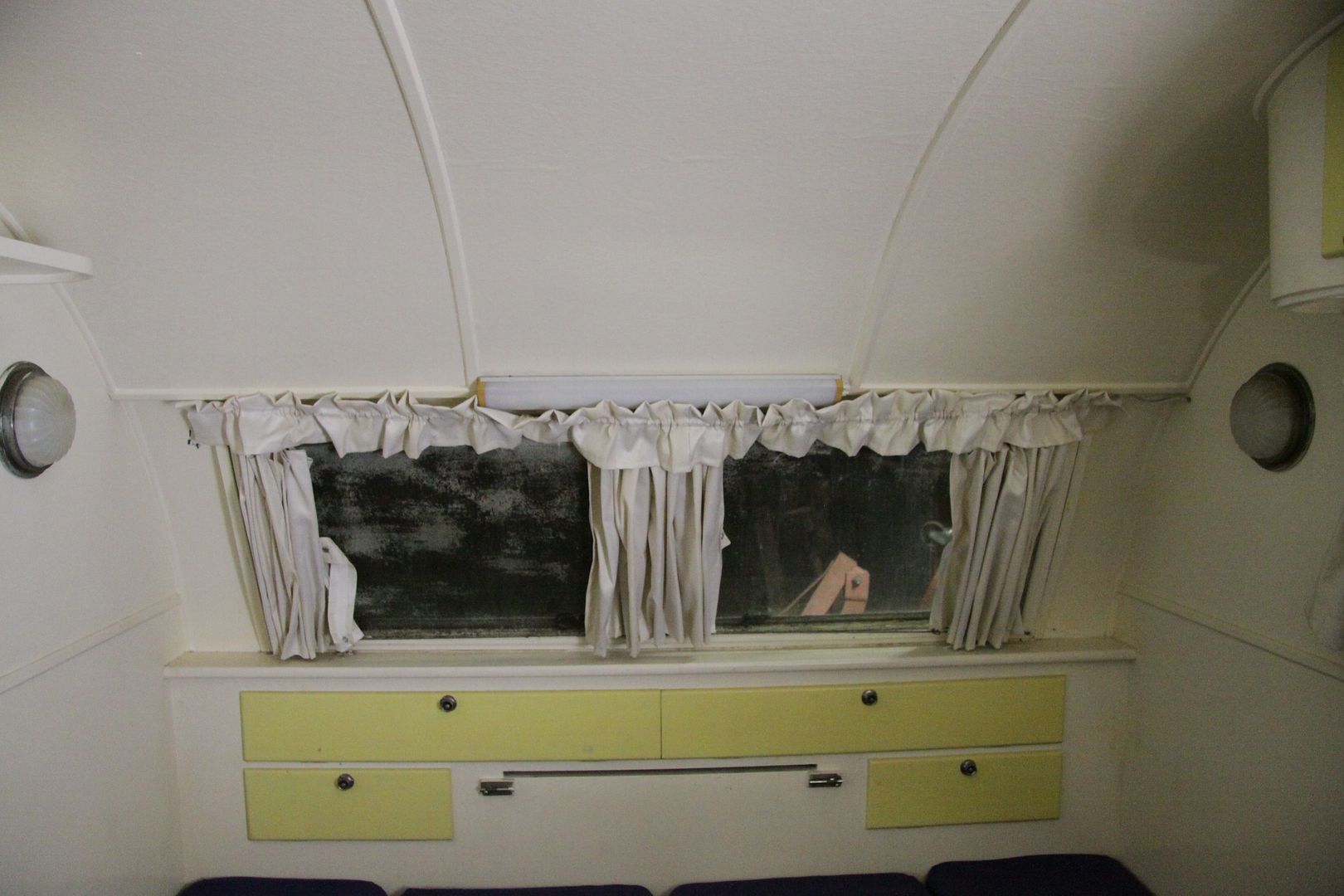 So the aluminium windows appeared to have been installed according to the normal Don manner, which pointed to them being the genuine Don article. However, Stooy's grandfather had made a number of modifications to the van over time, including replacing the original wall lights with dome lights, as can be seen in the photo above... ...replacing the leadlight in the side and rear windows with plain glass...  ...replacing the icebox with a fridge, and the original lino on the floor with cork tiles...  ...laminating the surfaces in the galley with laminex, and replacing the original gravity fed tank above the sink with a below floor tank and pump-style tap... 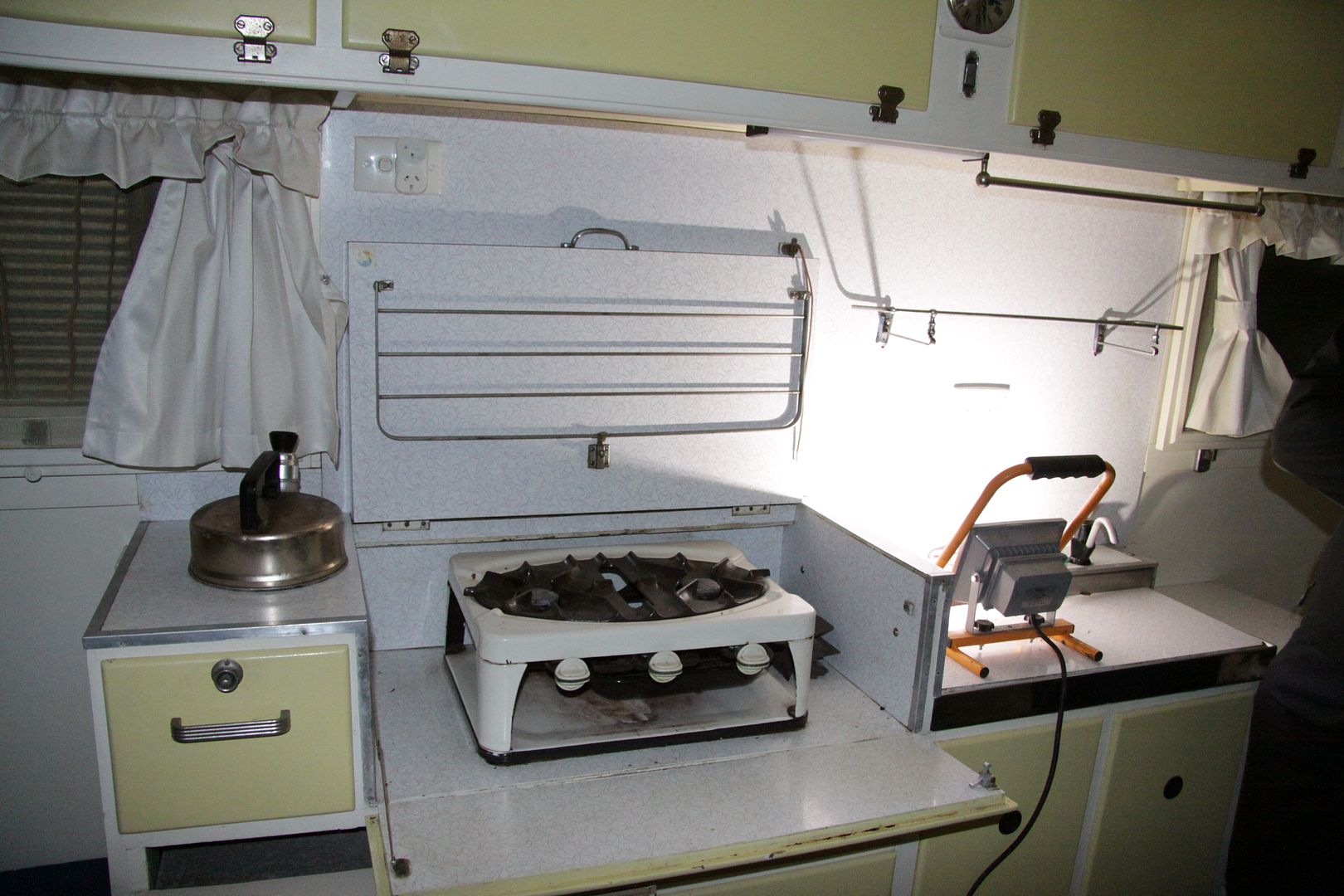 ...replacing the original Don tow hitch... 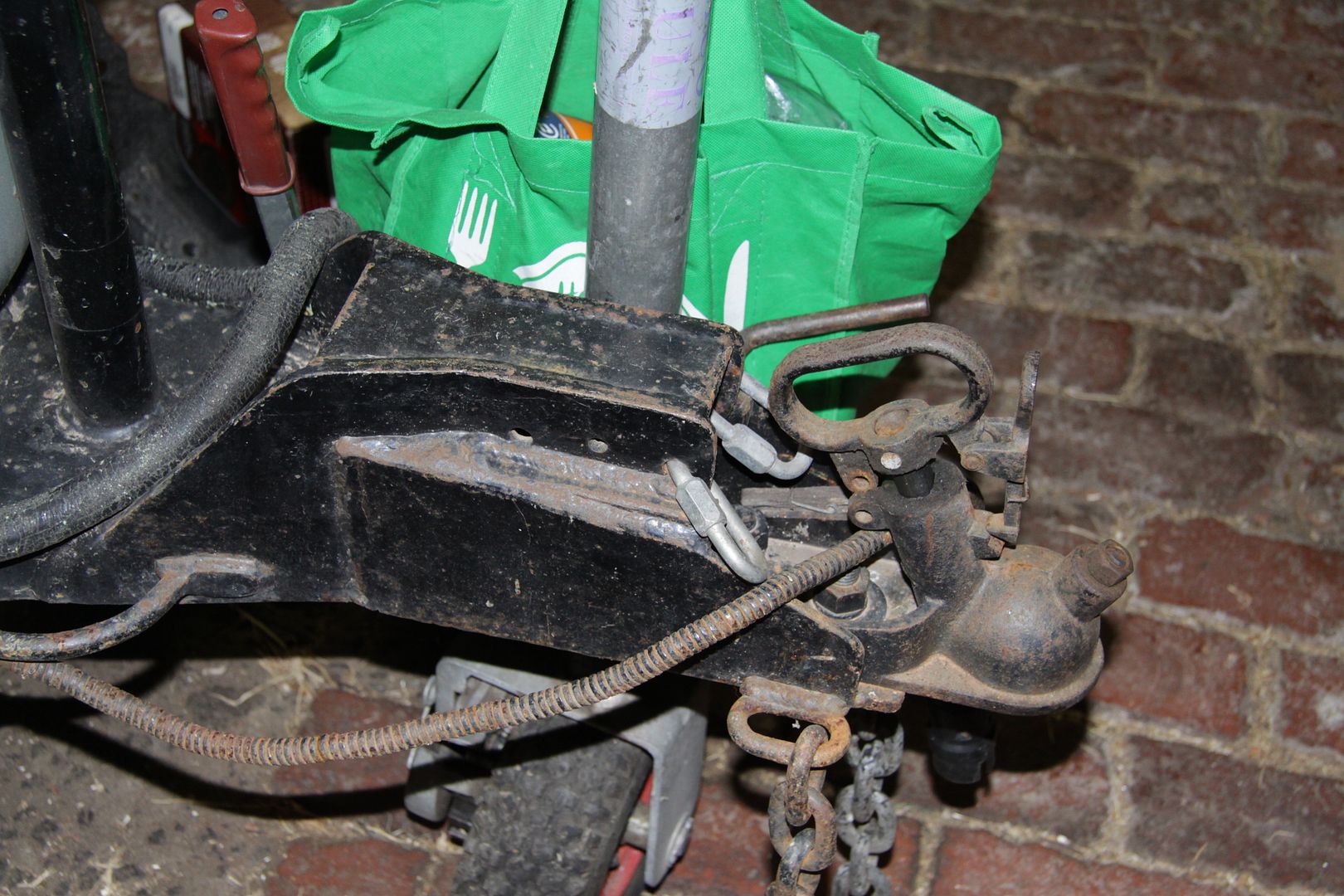 ...and fibreglassing the external roof. Given the extent of the modifications I did quietly harbour the thought (with apologies to Stooy) that the windows may have also been one of Stooy's grandfather's modifications, rather than having been factory fitted... But then Wal executed the coup de grace by producing some photos recently received from his cousin, showing a Don 140 caravan belonging for a time to one of Wal's uncles: 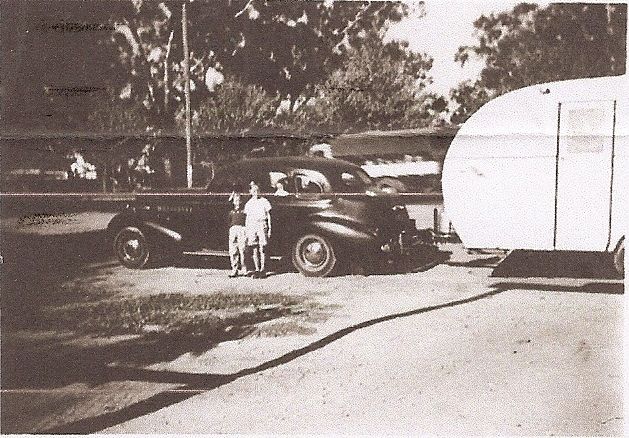 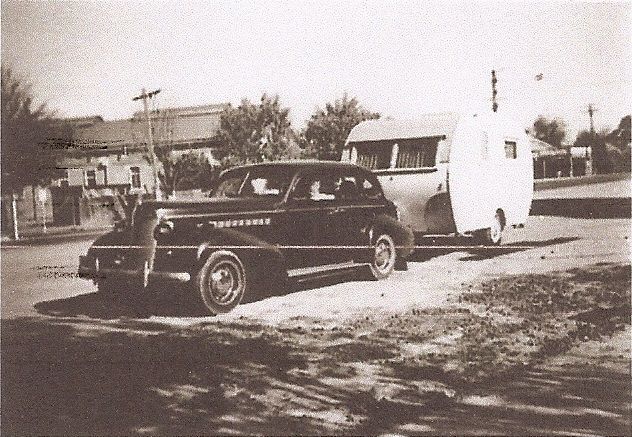 And there you are, another Don 140 with the two aluminium framed windows! Wal, Stooy and I spent a bit of time talking about dates, just to reassure ourselves that we weren't looking at the same van. However, Stooy's grandfather had bought his van around 1953 and had had it in his possession ever after, whereas the photos of the van belonging to Wal's uncle dated to around 1959, so clearly they couldn't be the same caravan. This seems to confirm Stooy's grandfather's memory that there were two Dons built with double aluminium windows, and that the windows were factory fitted, although apparently they weren't a regular Don option. Incidentally, Wal's uncle later replaced his Don 140 with an early model Cadet seen in the photo below: 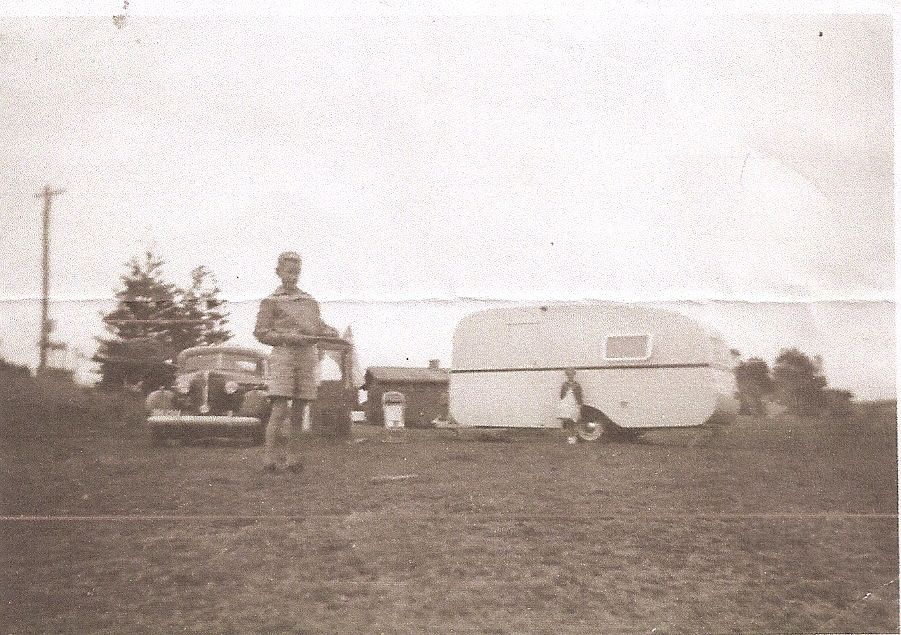 Stooy's van provides another interesting thread in the Don Caravan story. Don Ricardo |
|
|
|
Post by sportsman 1 on Dec 8, 2017 9:27:38 GMT 10
Just shows there is always something out there to throw us a curve ball!
My understanding was that aluminium windows were first used in 1955, it seems a bit of a stretch that Don used them in 1953 and nobody else did until 2 years later.
The initial thought was the van was bought by Stooy's grandfather around 1953, is it possible the date of 1953 could have been 1955? Does this theory fit in with when Don no 718 would have been built?
Leigh.
|
|
|
|
Post by Don Ricardo on Dec 11, 2017 20:01:30 GMT 10
Hi Sportsman1, A couple of good questions you've asked there!    I can answer one of them definitely, and that is that the serial number of 718 for Stooy's van is from around 1953. By 1955 the serial numbers were up around 900 and then by mid-1956 up over 1000. We know that for sure. The other question about when aluminium windows were introduced is a bit more up in the air. You are right that aluminium framed windows were introduced fairly generally around 1956. But there were several manufacturers who introduced them in 1954, and a couple even earlier. Jennison for example was experimenting with aluminium cladding in 1948, and introduced aluminium windows at least as early as 1953, possibly even a year or so earlier. Forum member Jennison's Jennison Pathfinder caravan is an example of a Jennison with aluminium windows built in 1953. There's more info on the introduction of aluminium windows here. So all that means that it is possible that Don could have installed aluminium windows in a couple of their caravans in 1953. Maybe they were trialling them, or testing public reaction? Or maybe they just had a couple of insistent customers who knew what was possible and overcame Don Robinson's objections? The other possibility is that the aluminium framed windows were retrofitted to the two Dons by the factory at a later date. However, Stooy's grandfather is quite certain that he bought his van with the windows in place a year or so after it was built (later in 1953 or 1954), so I think we need to accept that's the case unless we come across any contradictory evidence. On that basis, the aluminium windows in Stooy's van are another example of early adoption of that feature. Interesting though, eh? Don Ricardo |
|
|
|
Post by wazejames on Apr 14, 2018 21:35:04 GMT 10
|
|
|
|
Post by Don Ricardo on Sept 12, 2018 20:14:23 GMT 10
Hi all, A couple of months ago I was able to fulfill a long held dream! Together with Wal and Anna Robinson, I was privileged to visit Neil Walsh who is the owner of the Don caravan with the serial number of 30. A variety of events - including the VV Nationals in Wangaratta, an overseas trip, forum administration, oh and work    - have meant I haven't had the time to tell you about the visit earlier. But it was definitely one of the highlights of my 'vintage caravanner' life. Don number 30 is a 12 foot caravan (120 model), and was built in 1936, only a few years after the establishment of the Don caravan business in 1934. At this point it is the only Don caravan in existence that we know for certain was built prior to World War II. The story of the Walsh's Don was told in a Caravan World article in 1993, which you can read in the post commencing this thread. It was fascinating to see Number 30, both to see how many features remained constant throughout the production of the leadlight window Dons up until 1956, and how many features changed or developed over time. (Answer: Not many of the latter!) Number 30 is stored in the back of a shed surrounded by a lot of other equipment, so it was not possible to get a photo of the whole van, so I'll start the 'show and tell' with a photo of the caravan from the Caravan World article referred to above: 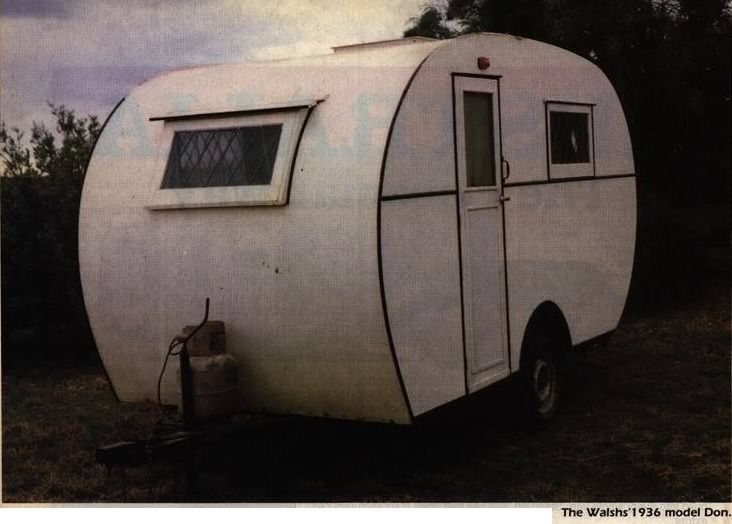 Neil Walsh (left) and Wal Robinson standing beside Number 30: 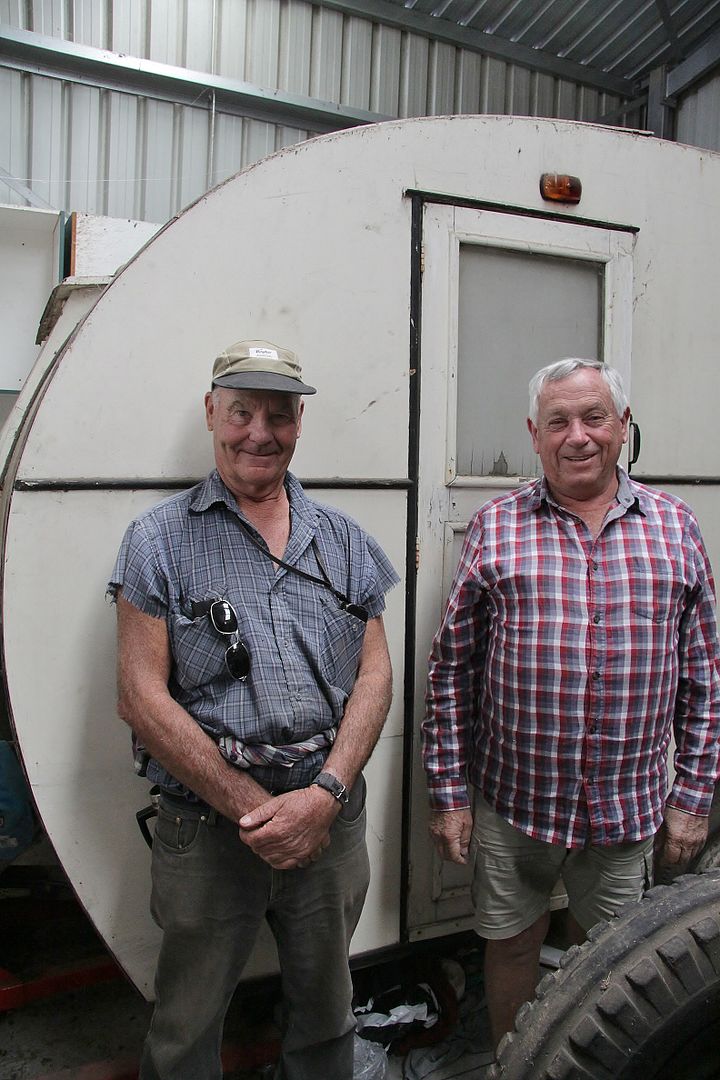 As many of you know, Wal is the nephew of Don Robinson, founder and designer of Don caravans. Wal and his wife Anna are friends of the forum, and attend quite a few vintage caravan events. Wal's father Syd, as a boy, holidayed with Neil's grandfather in Number 30. Syd also later worked in the Don Caravans business, and sold some subsequent Don caravans to the Walsh family. The serial number plate confirming that the van is number 30: 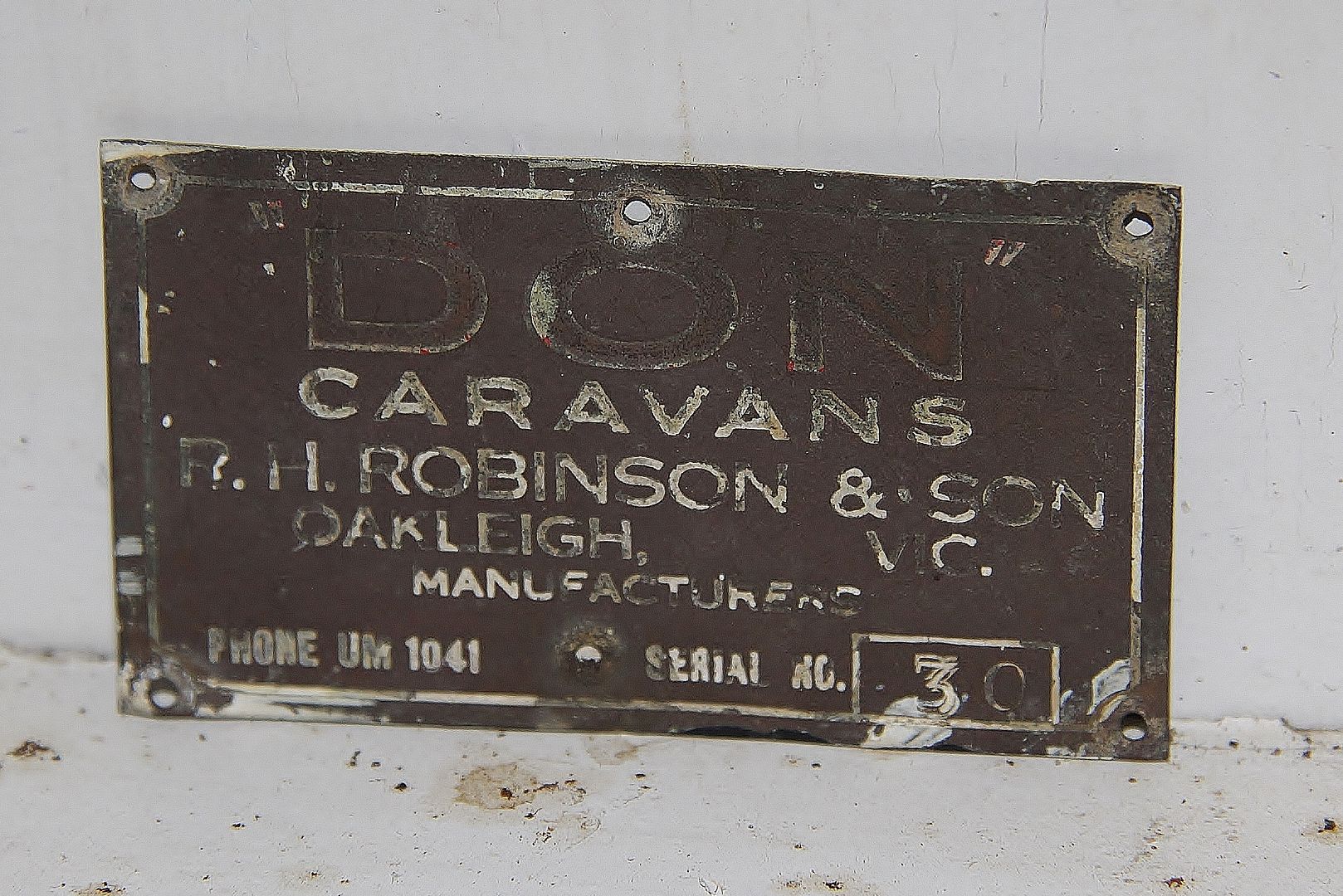 Note that the plate says ' "Don" Caravans ' and indicates that the manufacturers were 'R H Robinson & Son'. Later on the serial number plates just referred to the 'Don Caravan Company'. The outside of the van: 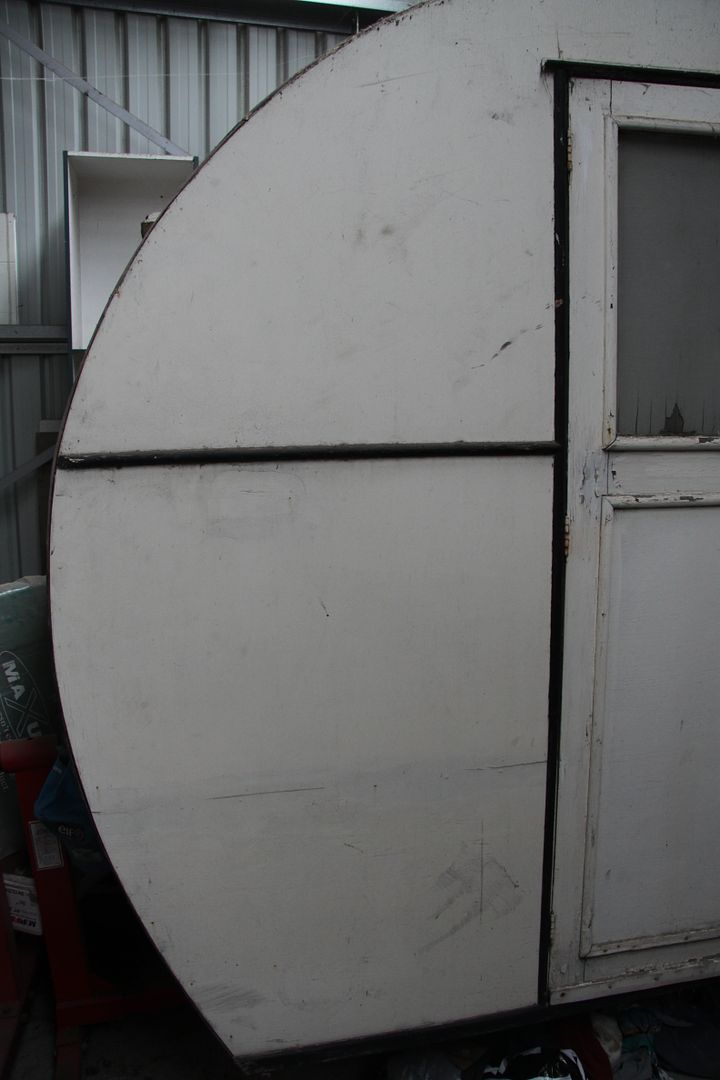 Note that the door is hinged on the left, as it appears all pre-WW II 10 ft and 12 ft vans were. Later vans - commencing somewhere between serial numbers 213 and 257 - began to be hinged on the right. 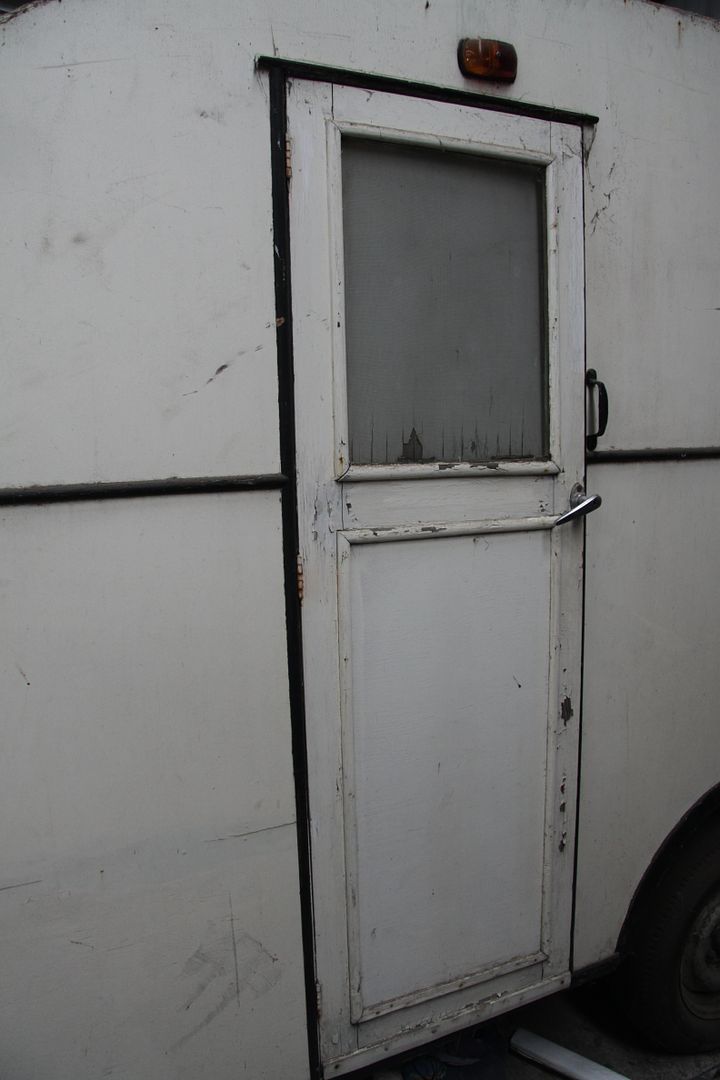 The side windows, as seen below, were glazed with smaller panes of glass than were later post-WW II vans - 31 panes of glass and smaller diamond shapes compared to 16 panes on post-WW II Dons: 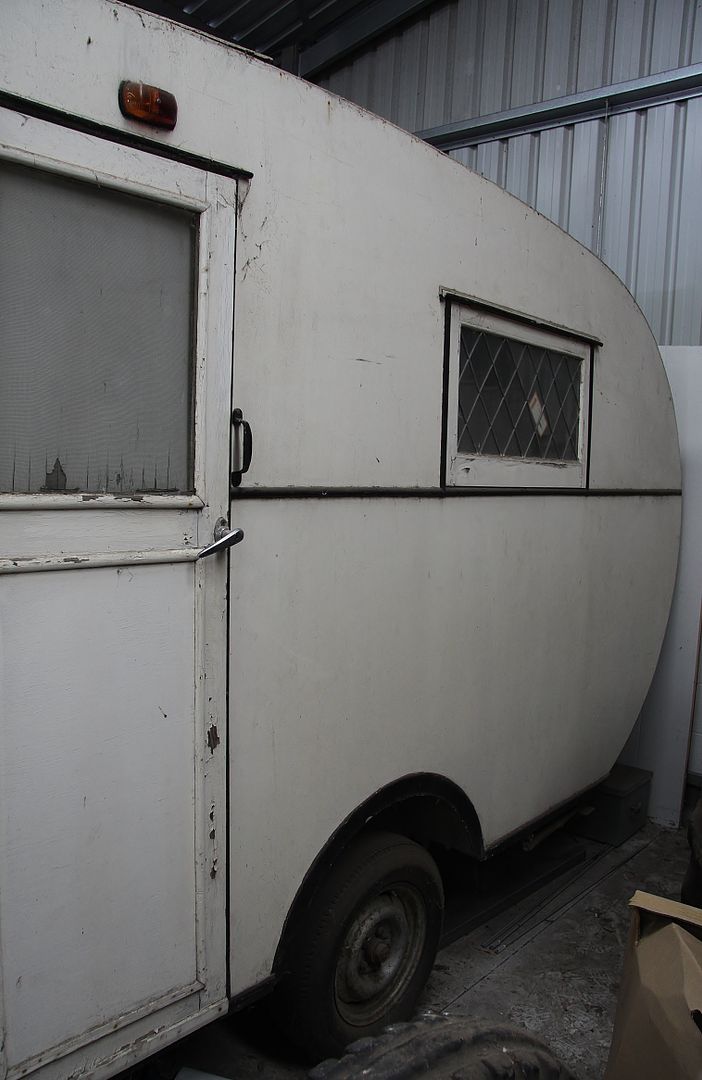 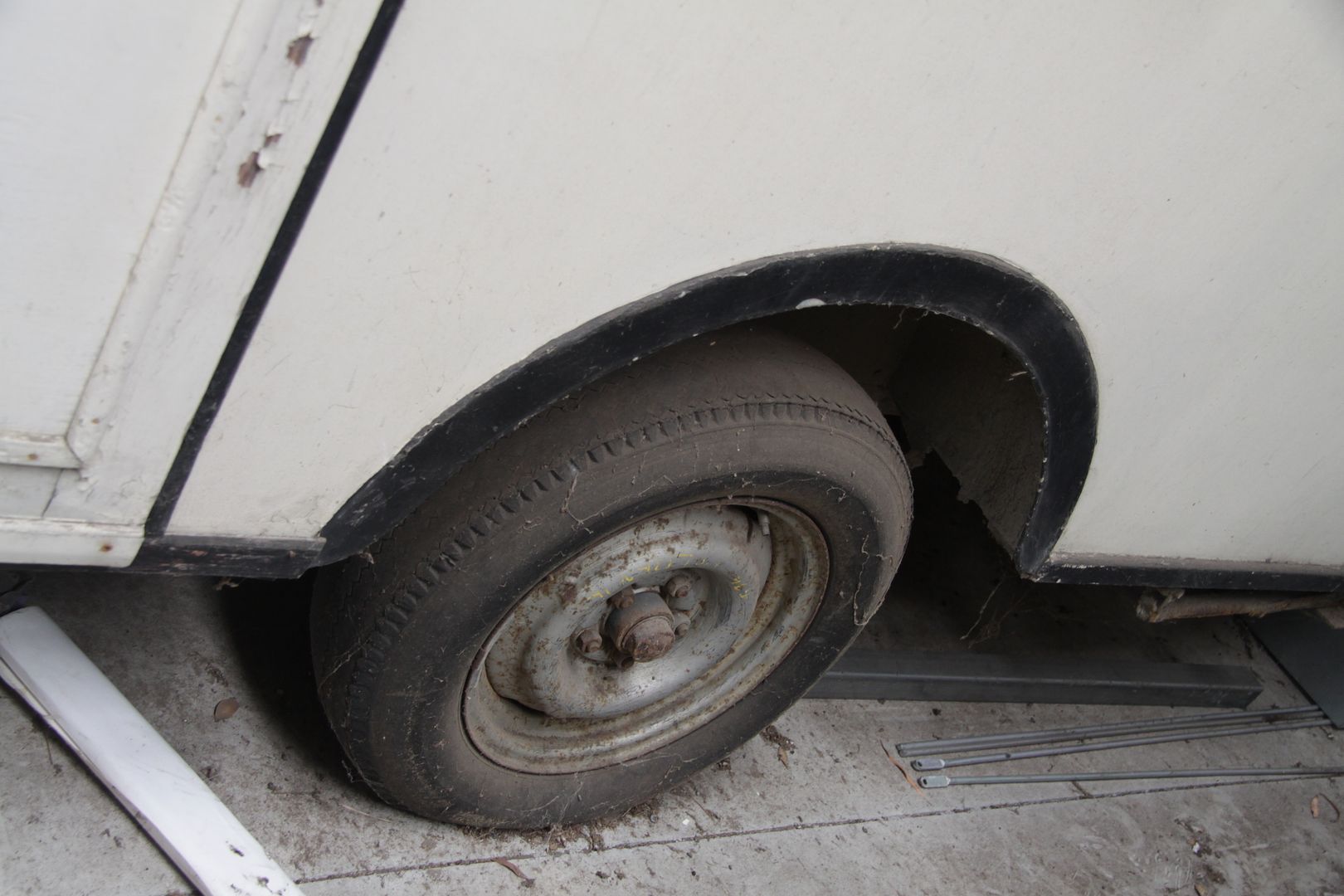 The front window is constructed the same as all the later leadlight window Dons with large size, opening front windows...  ...with 16 panes of glass: 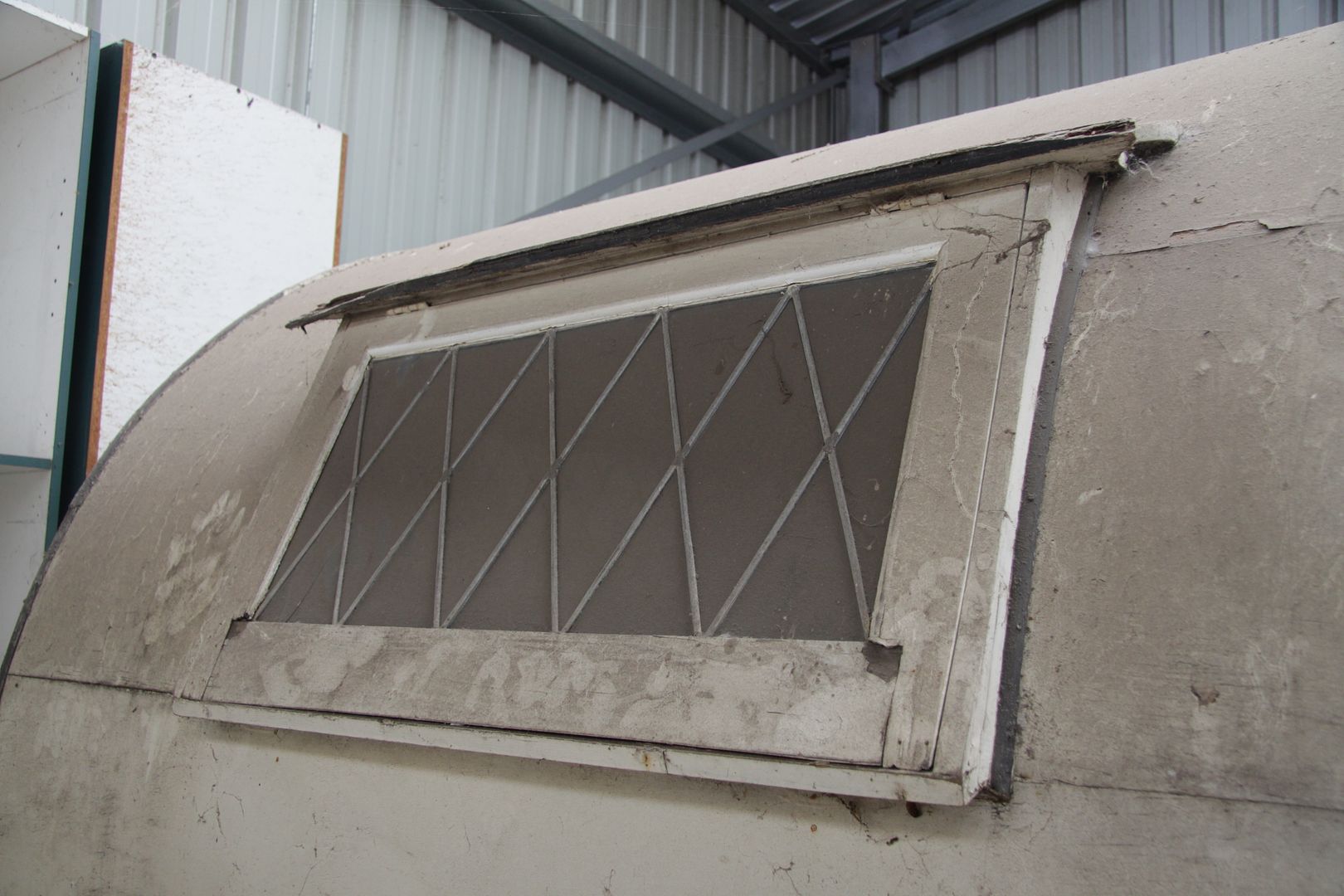 However, the rear non-opening window is larger than those on later vans: 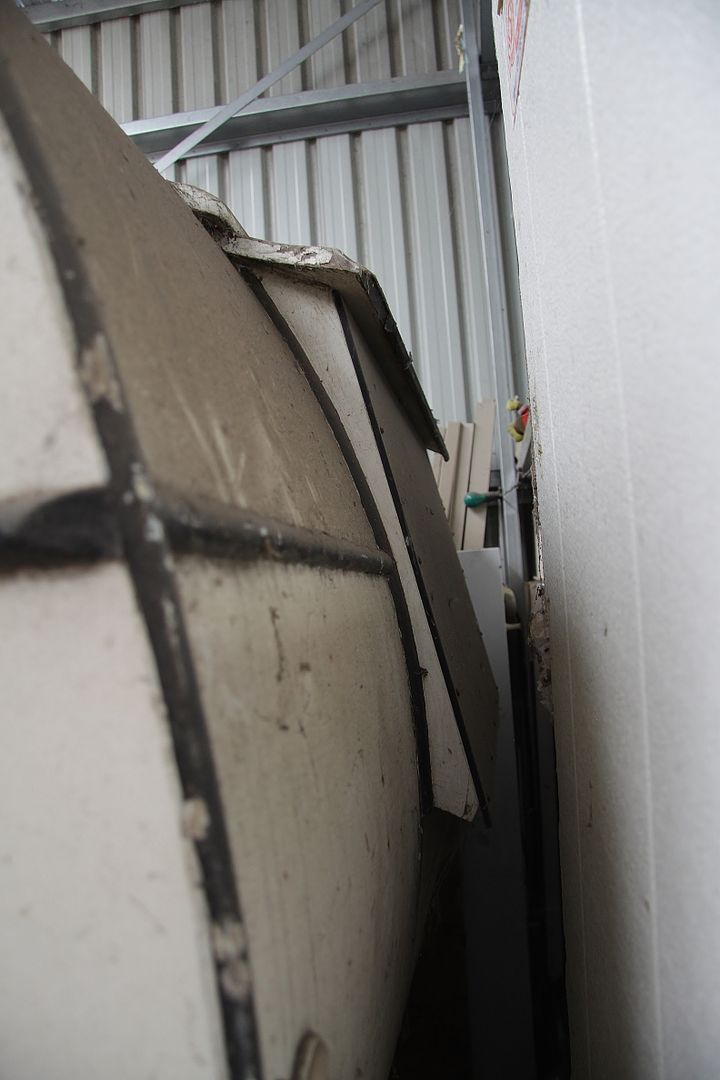 Standard Don leadlight van captive ball tow coupling: 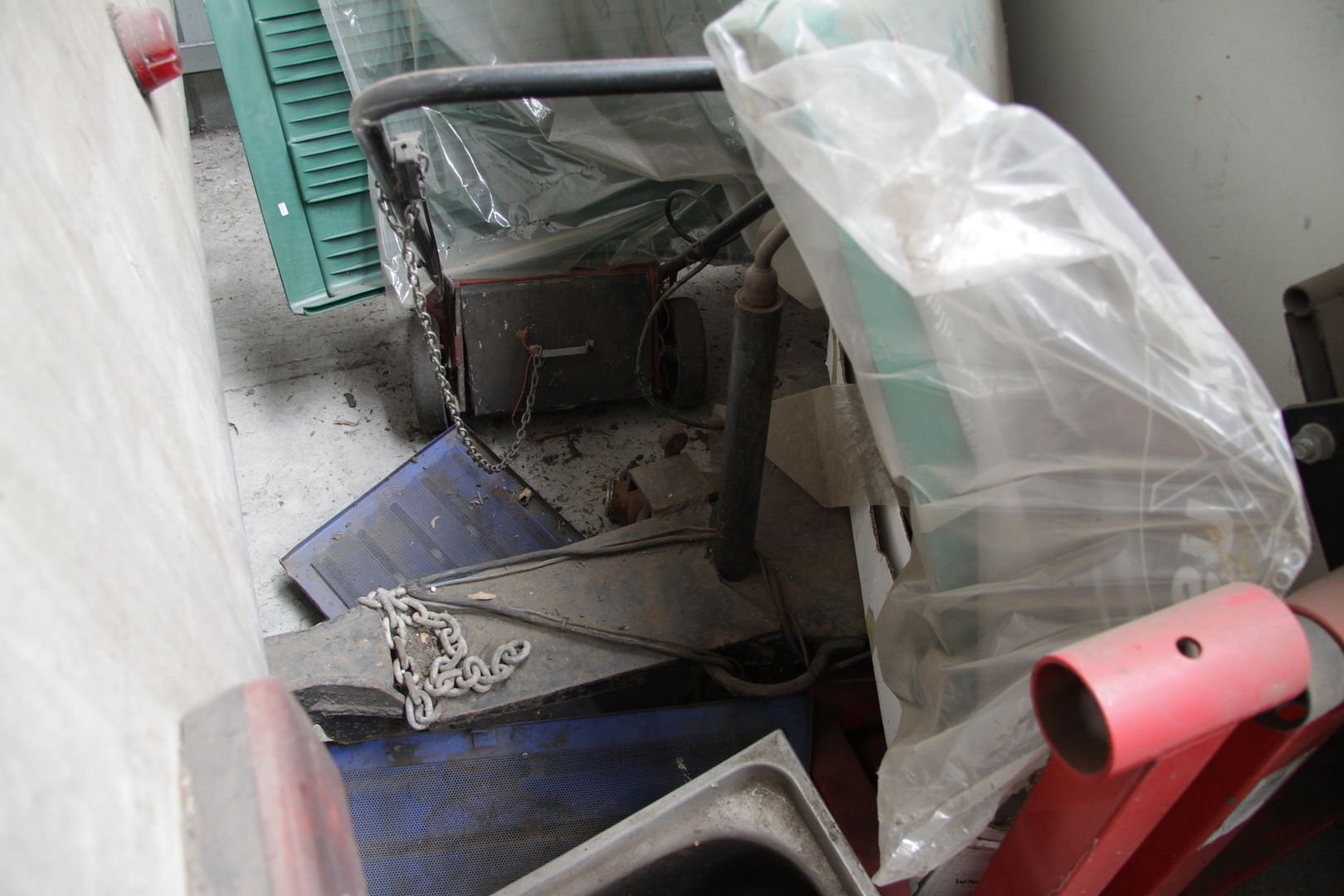 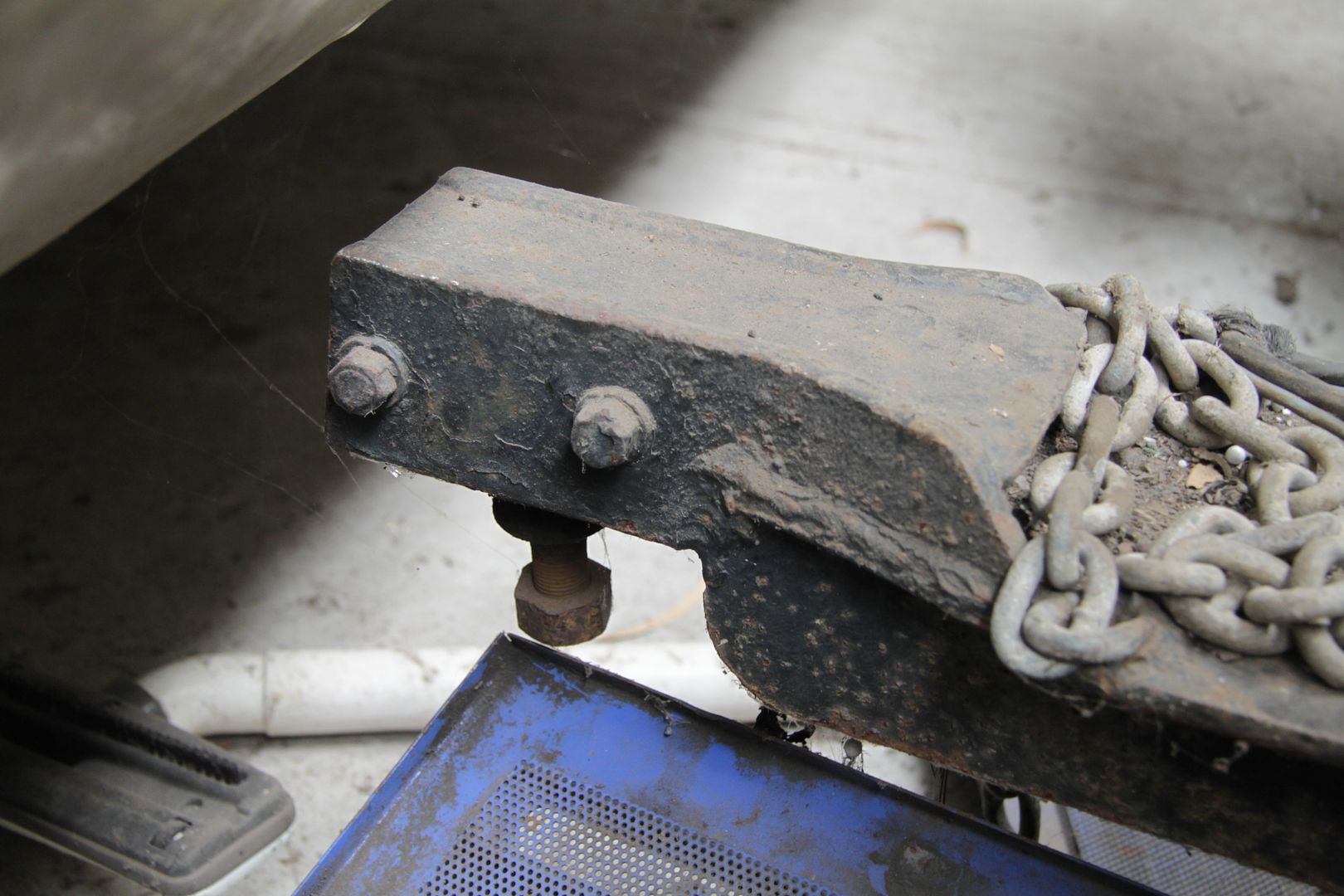 Familiar corner jacks: 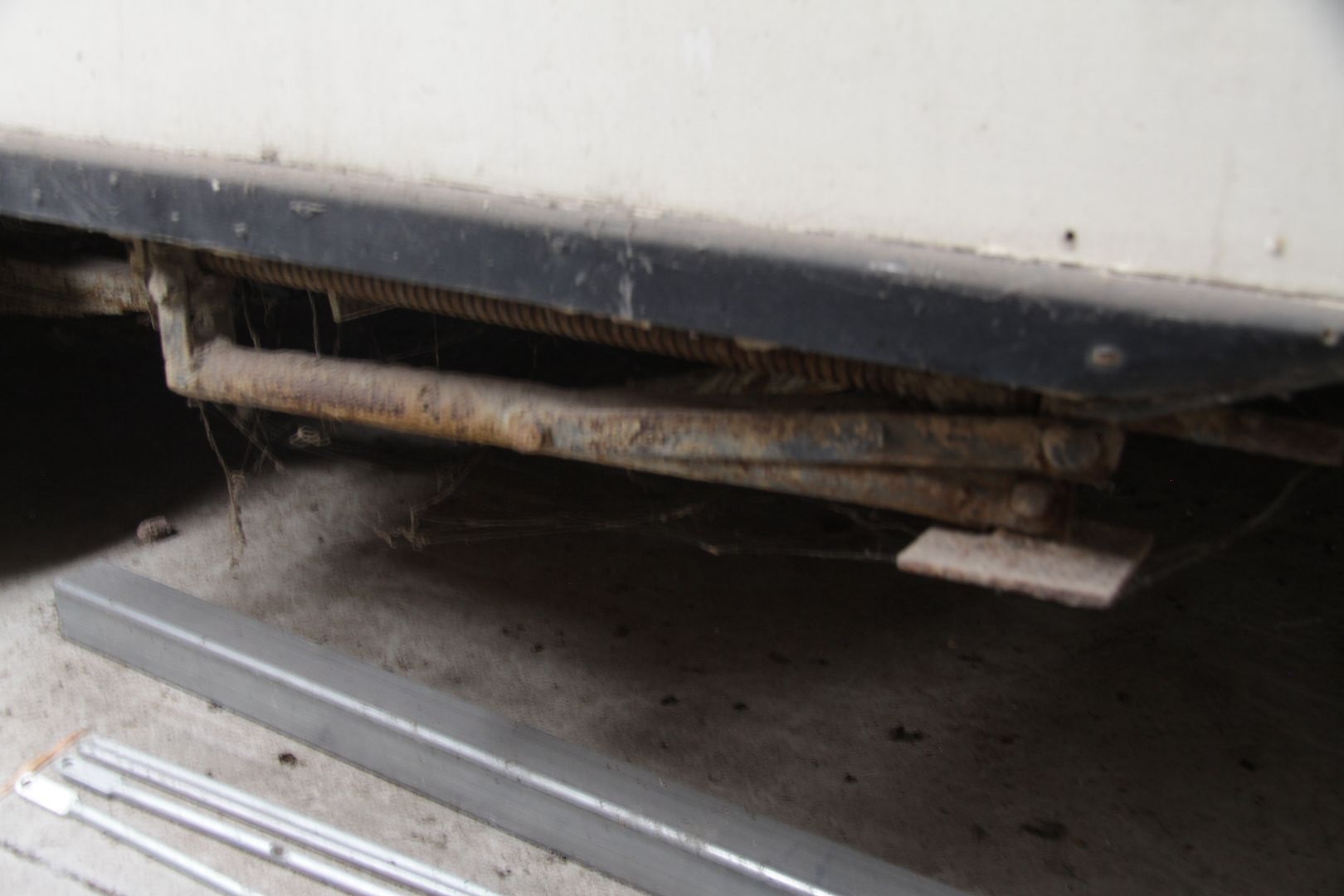 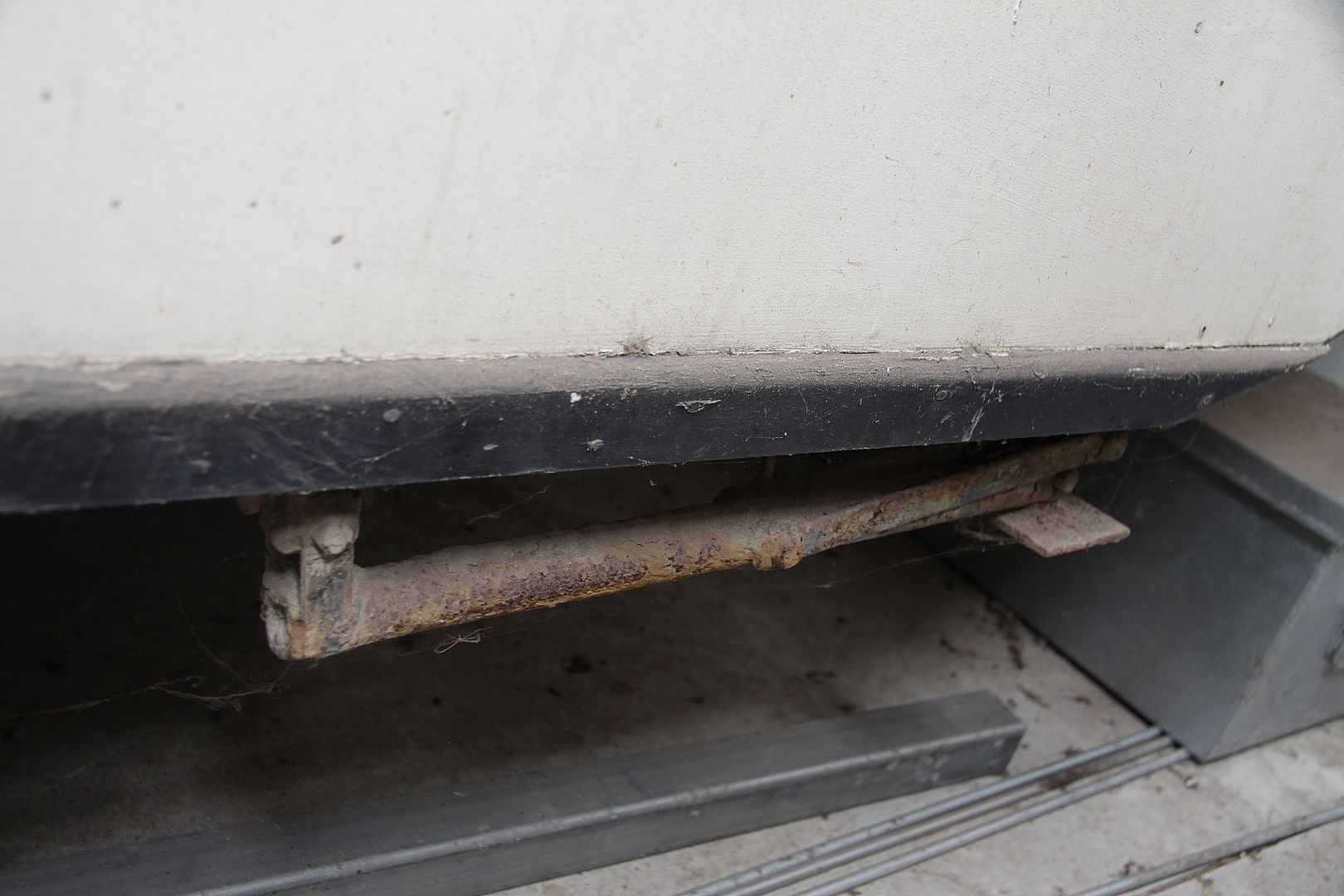 Going inside...bunks to the left of the door that we are familiar with in the 120 4-berth model... 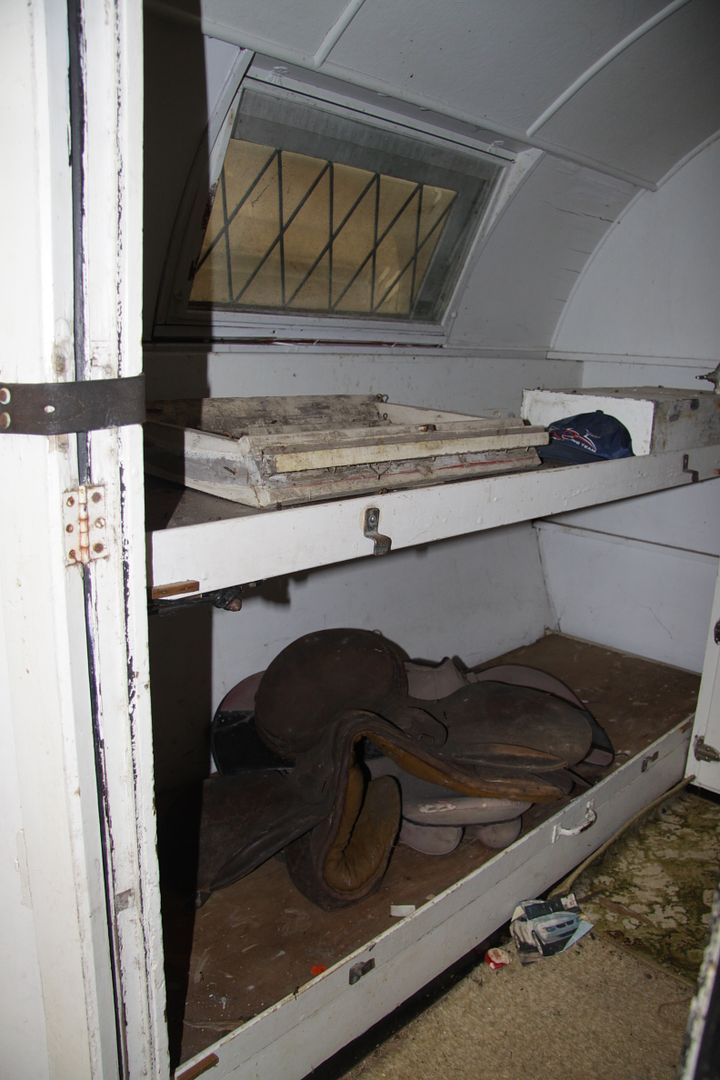 ...with storage underneath the bottom bunk: 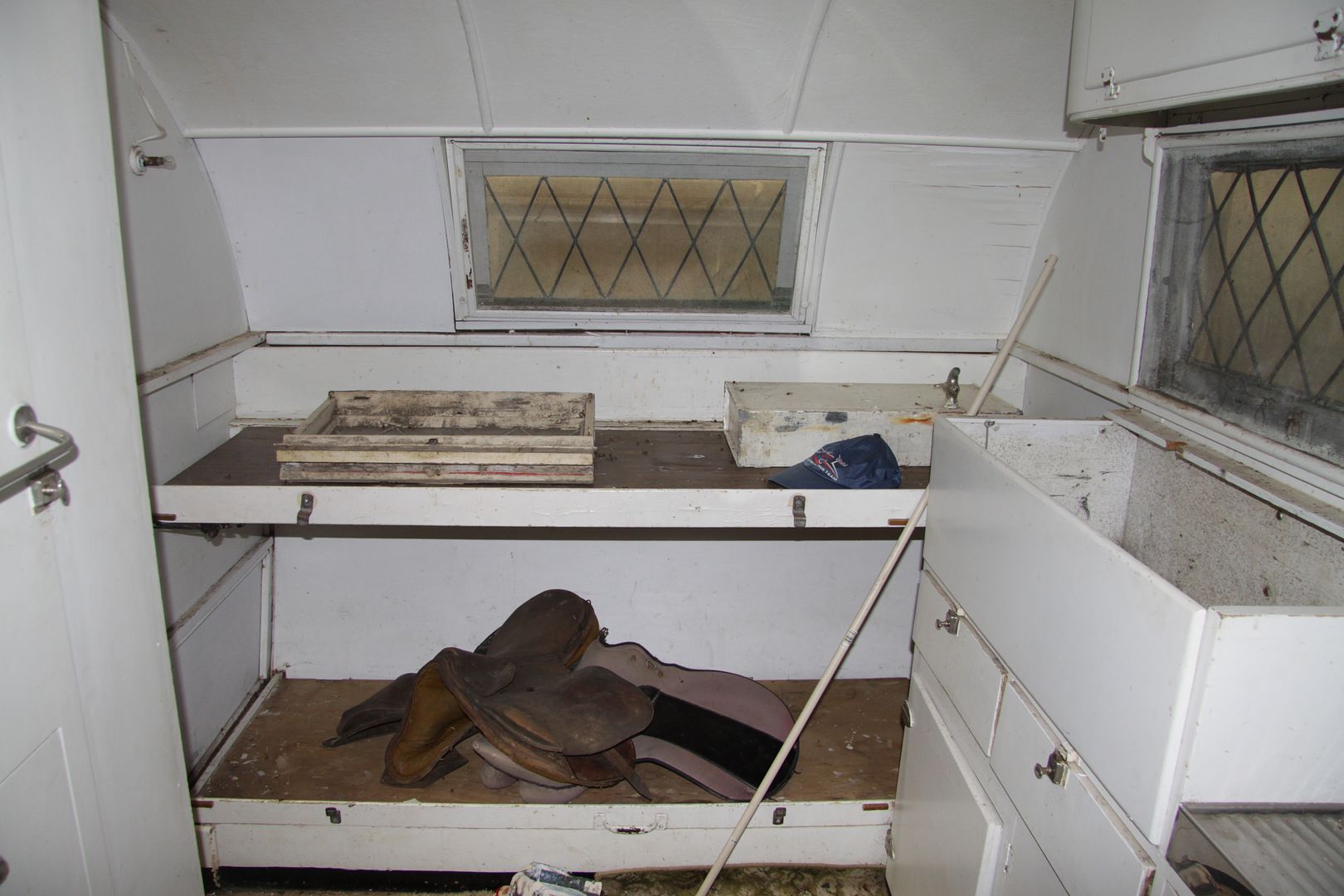 Note the familiar shaped water tank lying on the top bunk above. Galley cupboards... 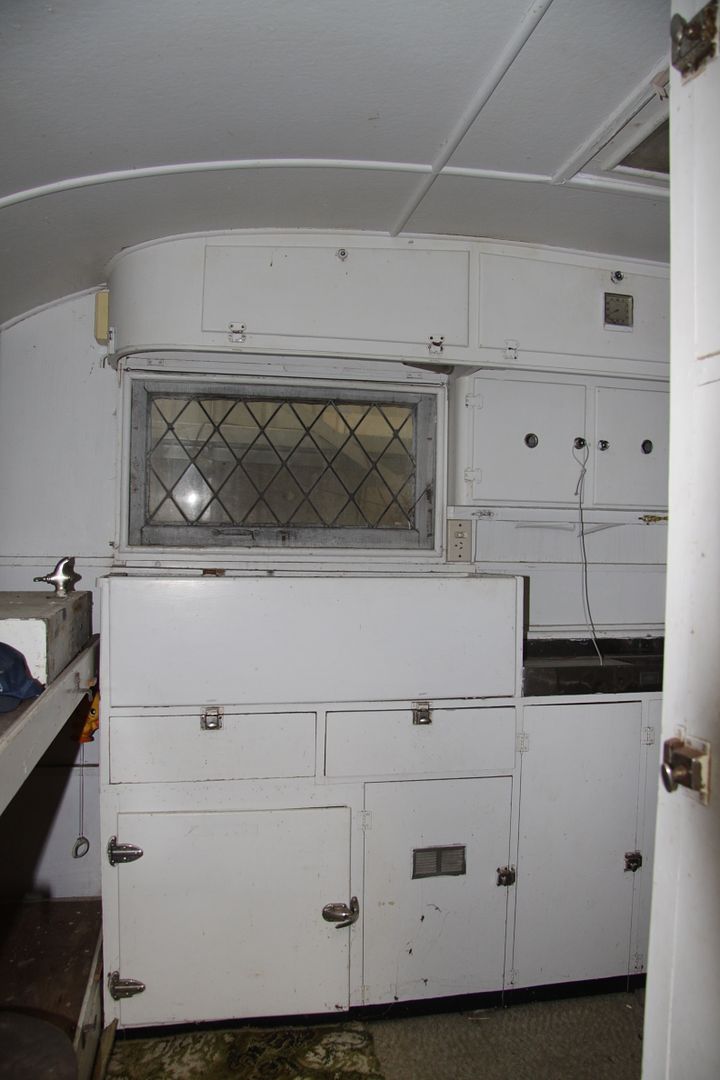 ...with icebox below... 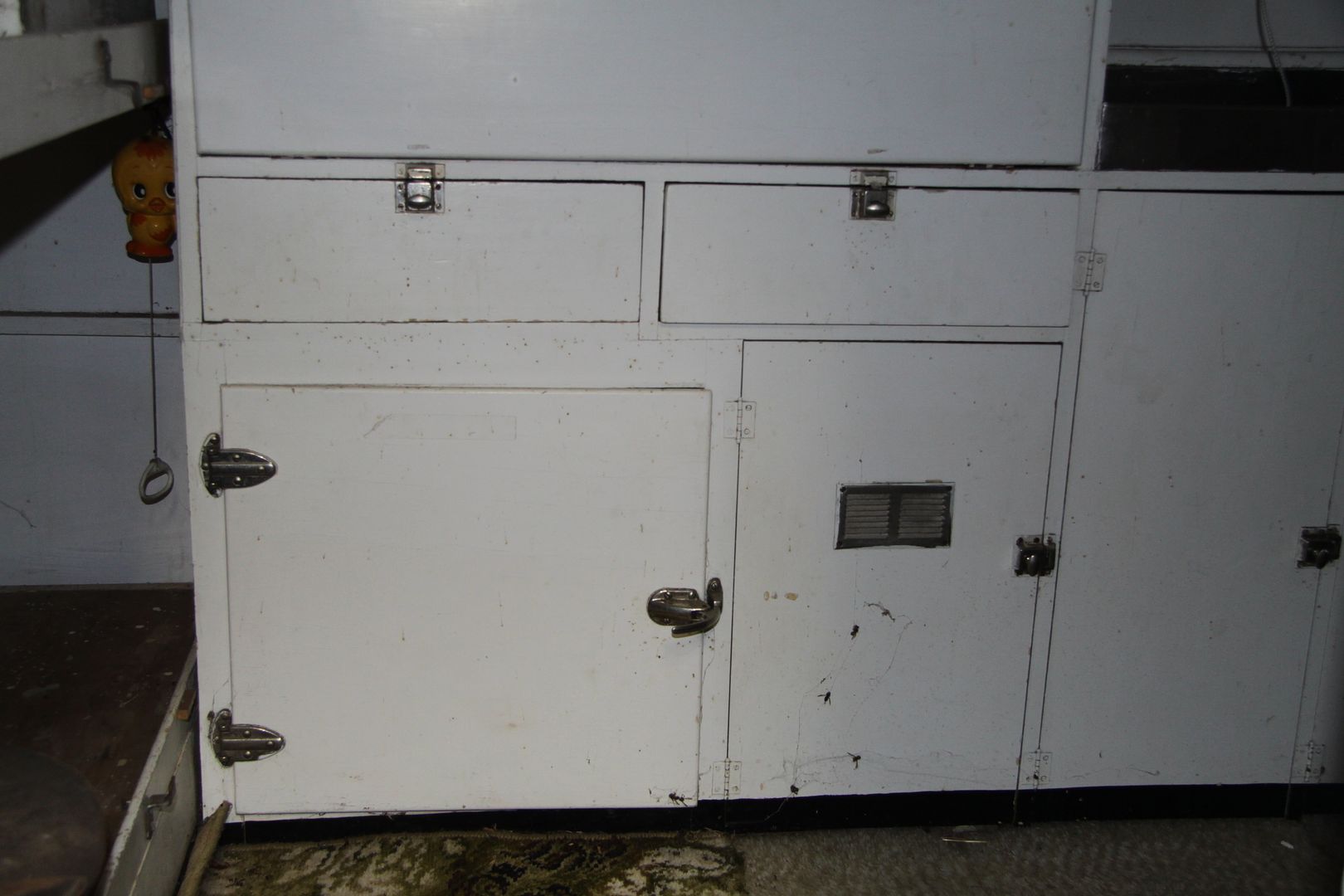 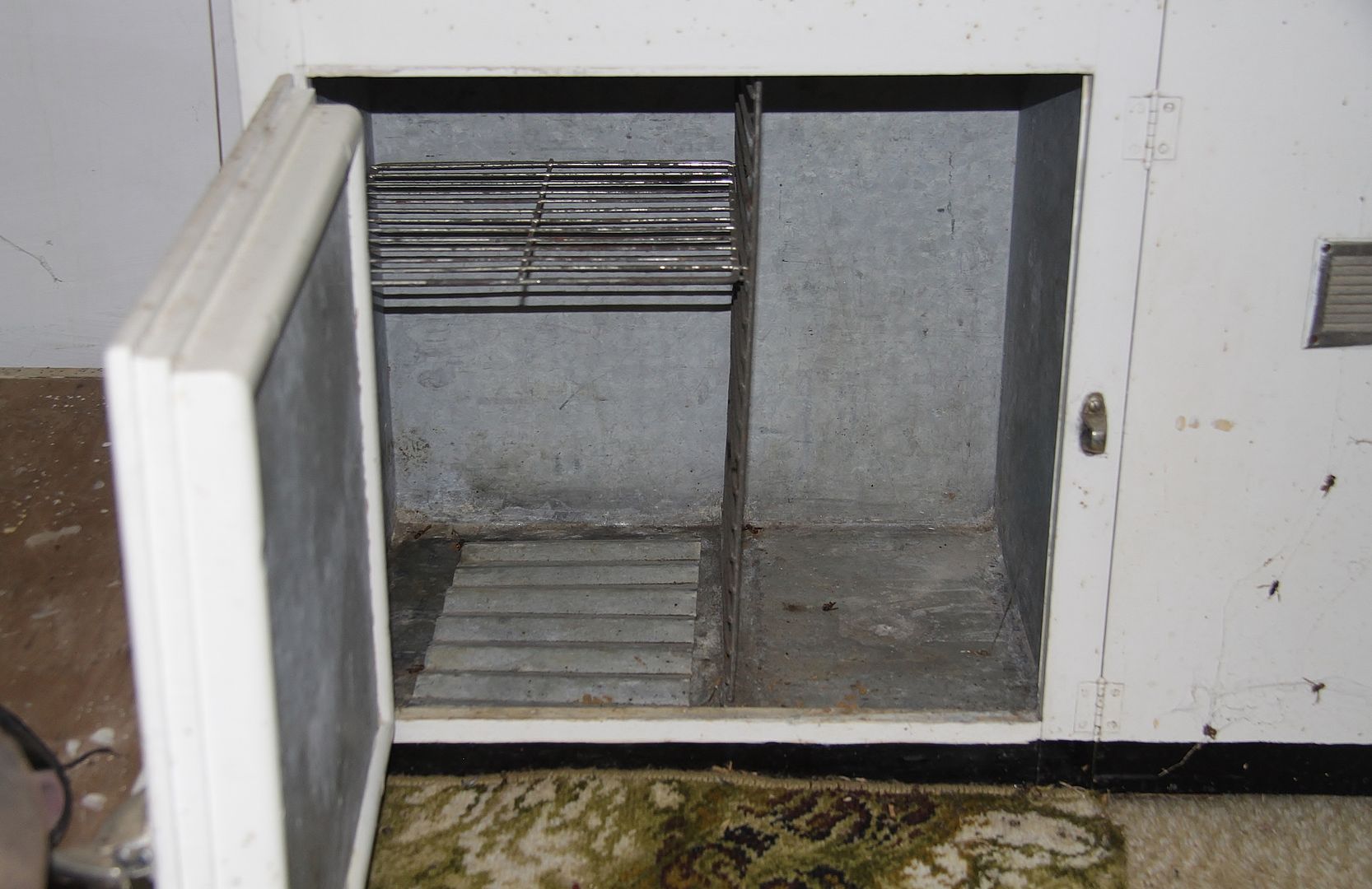 ...stove alcove above... 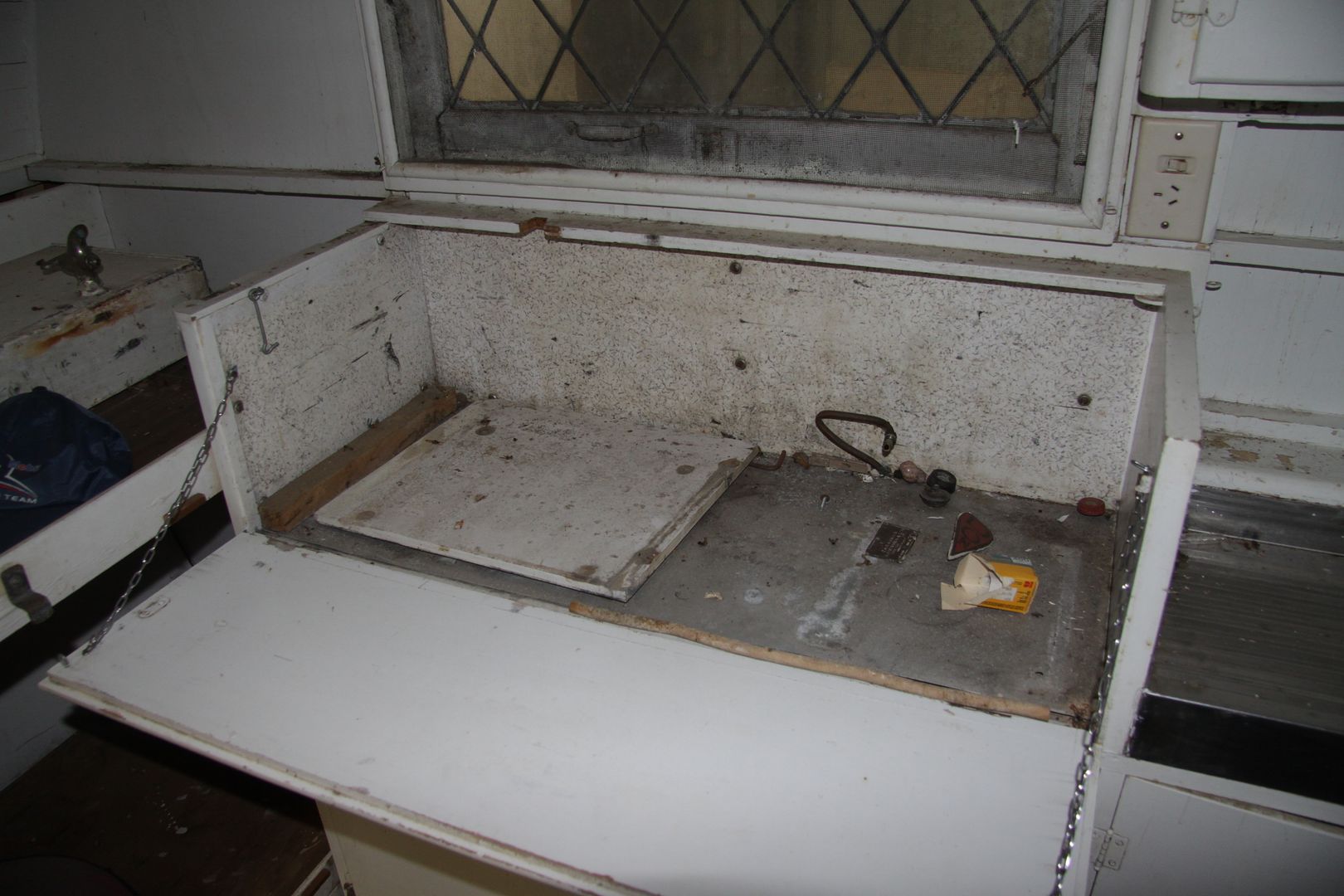 ...and two drawers in between: 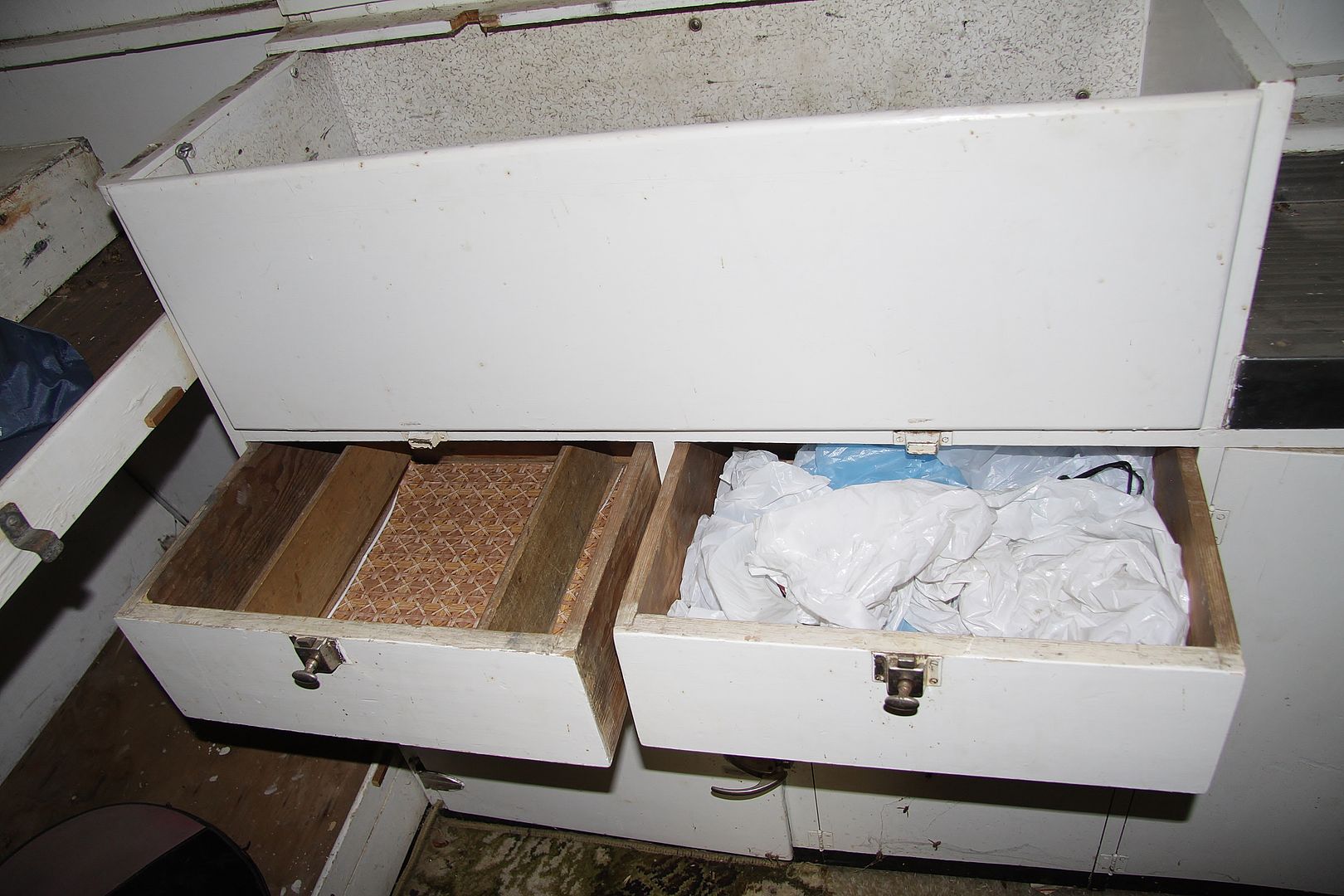 Sink with frame to keep the water tank in place at the rear: 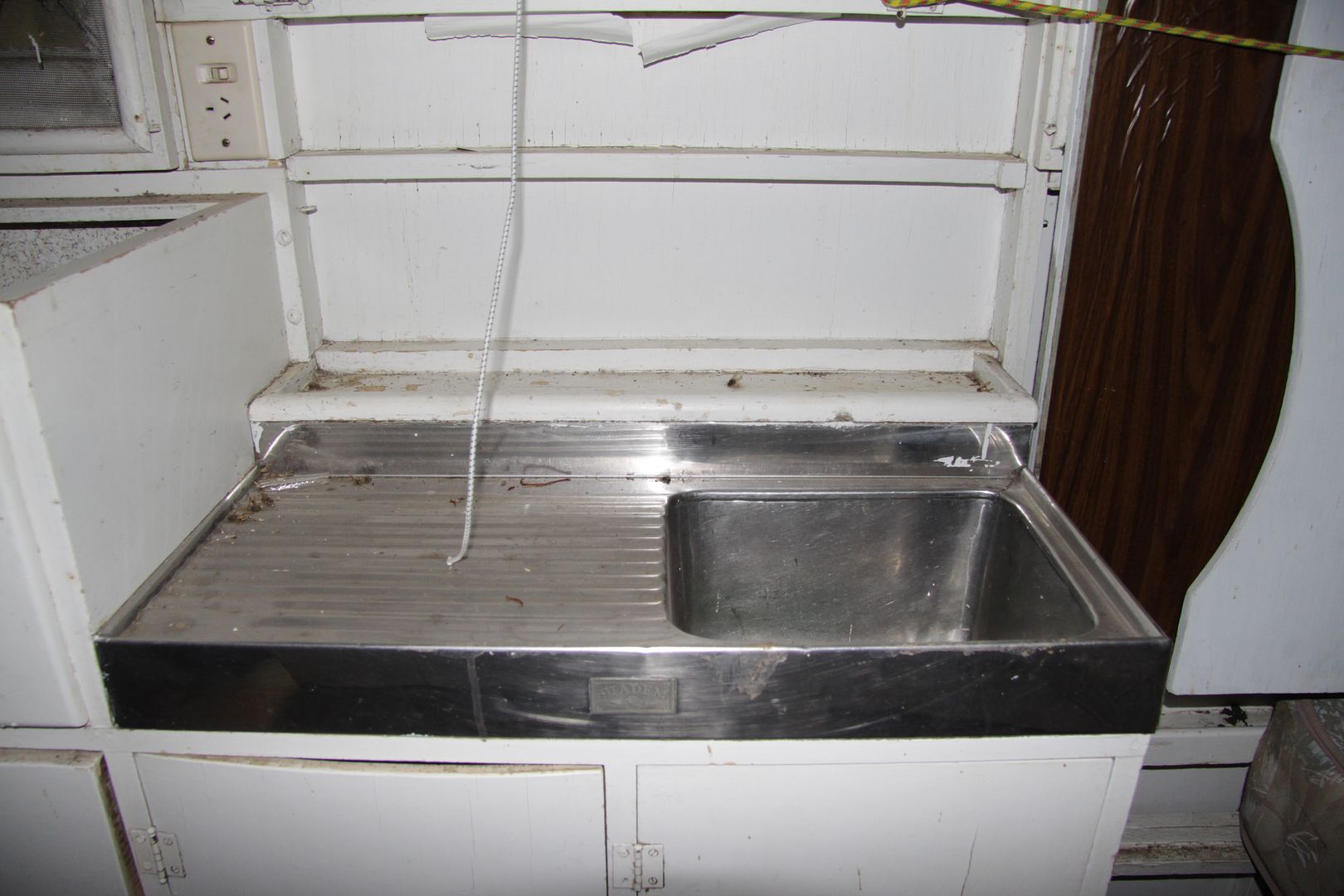 The sink is a Diadem brand... 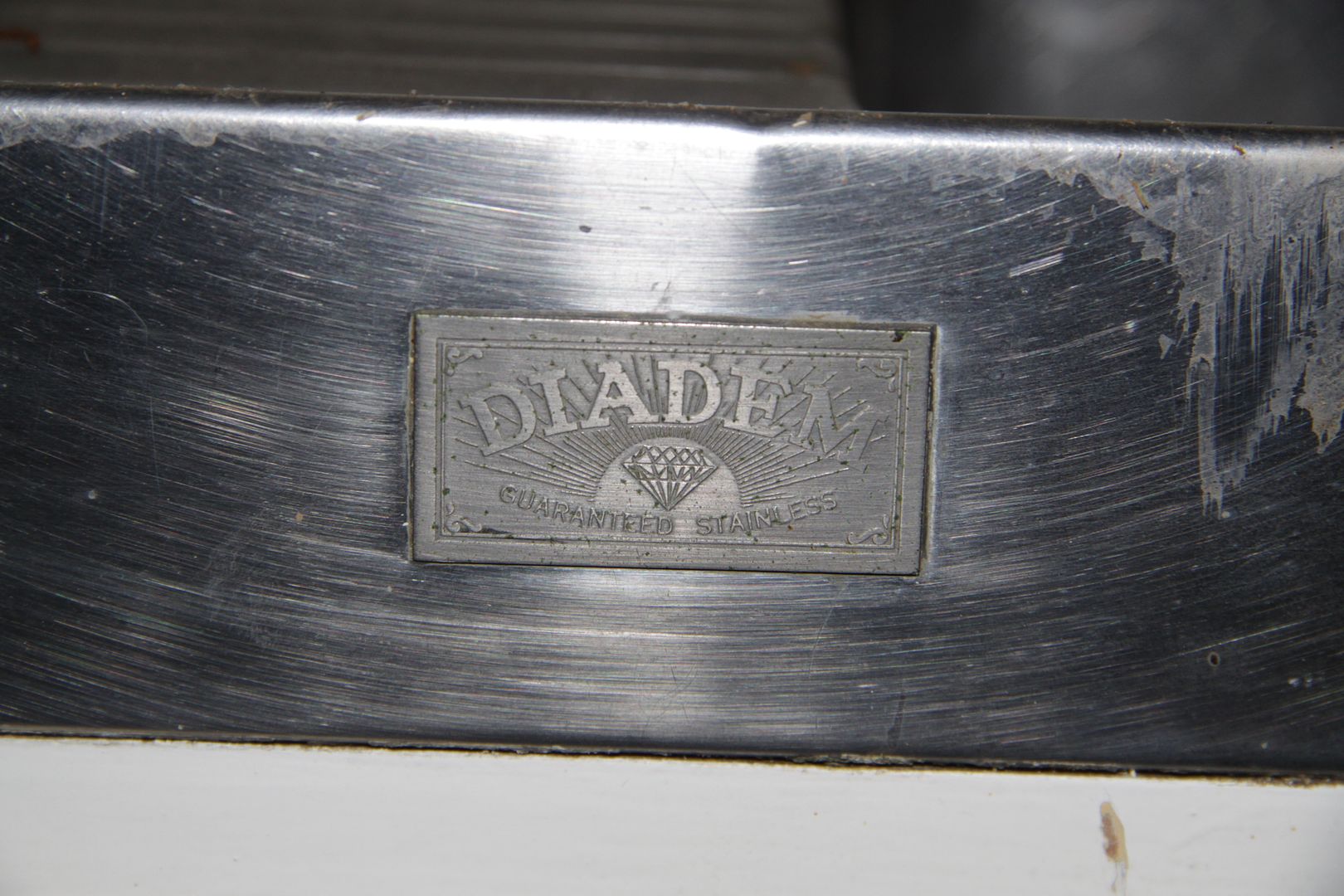 ...and there are cupboards below: 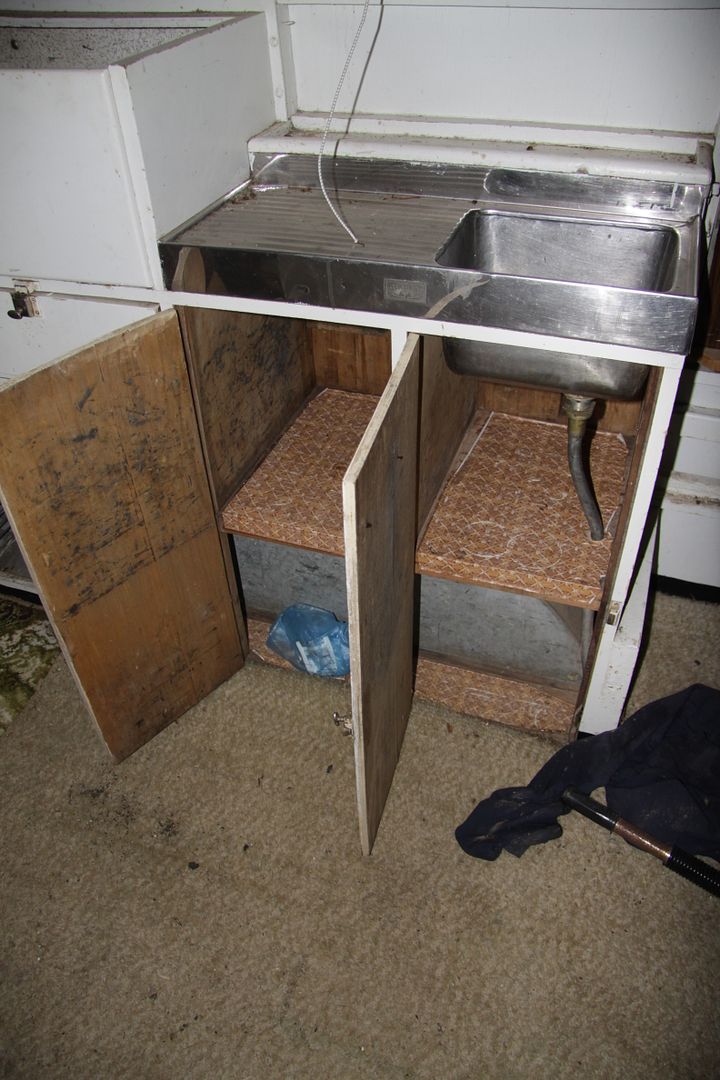 Overhead cupboards...  ...with the doors made of 'solid' ply rather than framed and skinned, as was the case in post-WW II vans: 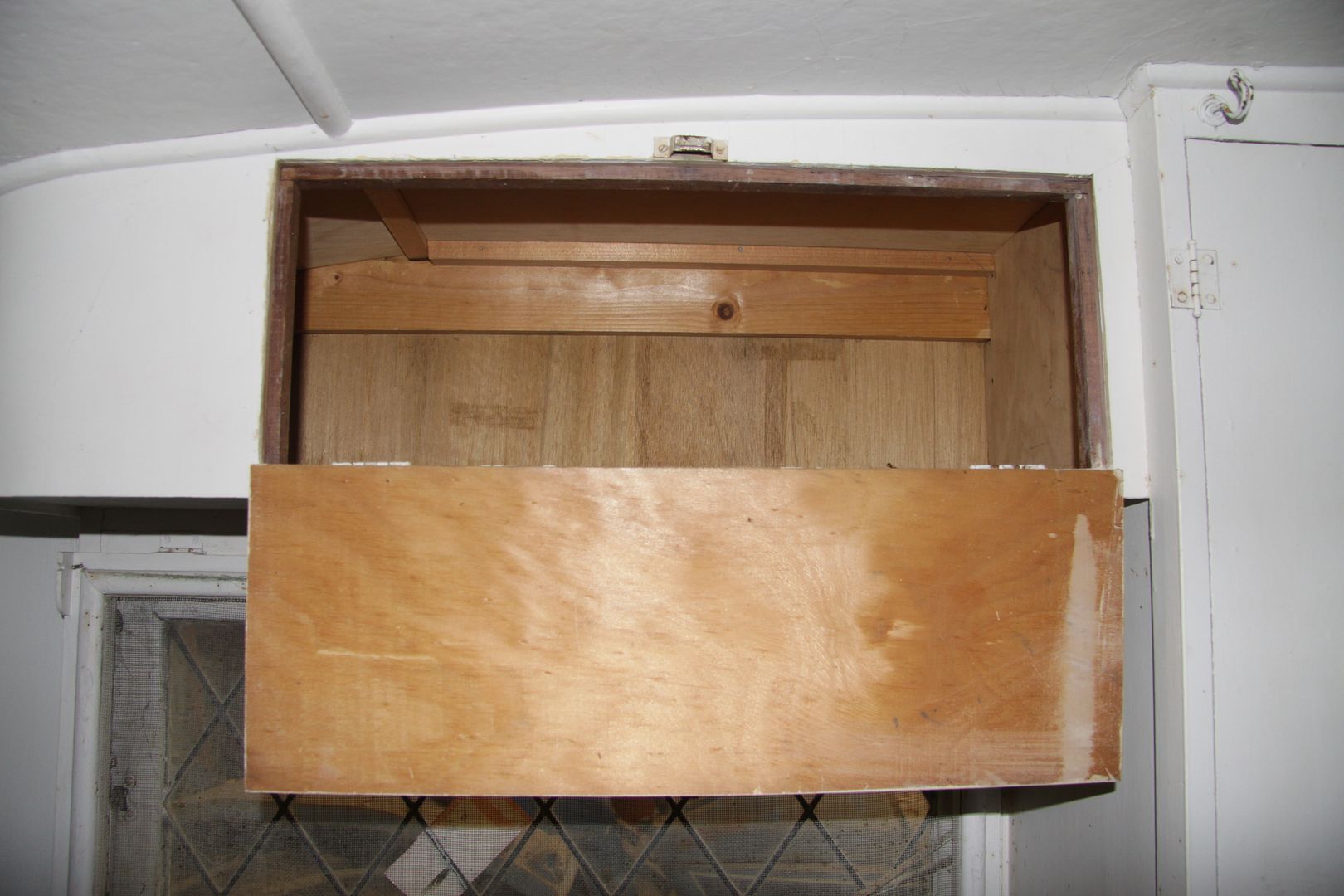 The rear of the van consisted of a day-night slide down lounge which you can see part of in the photo below (can't believe I didn't get a photo of the full lounge!    )... 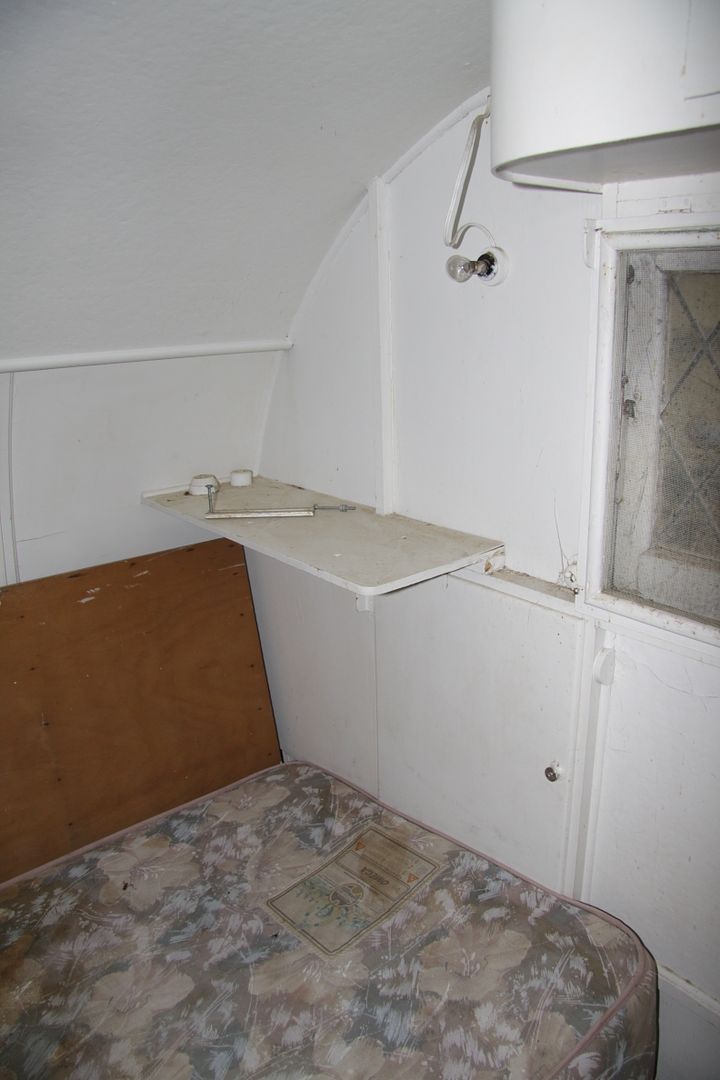 ...with storage underneath: 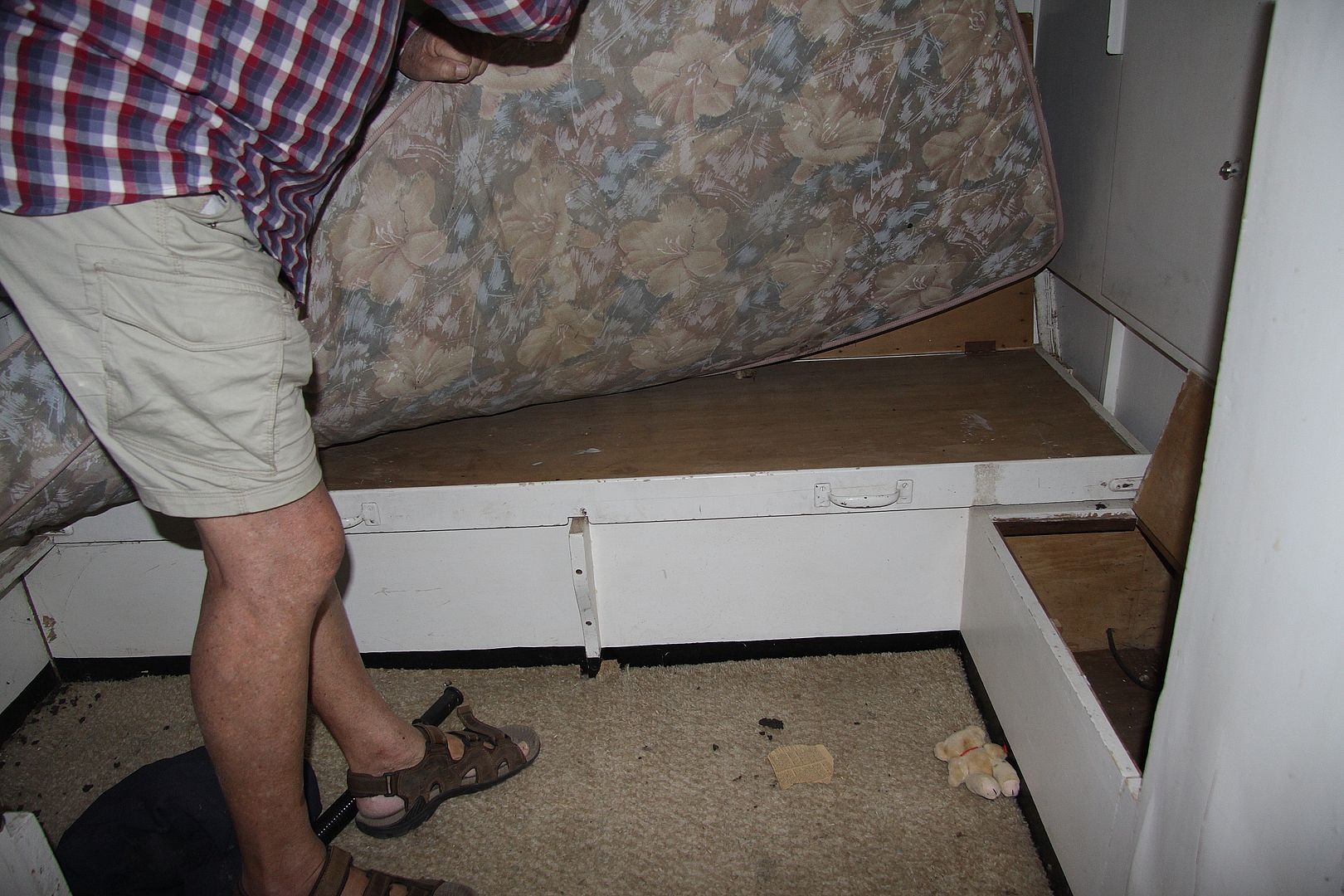 On the near side of the van was a cupboard and drawer, with both opening to the rear instead of towards the middle of the van: 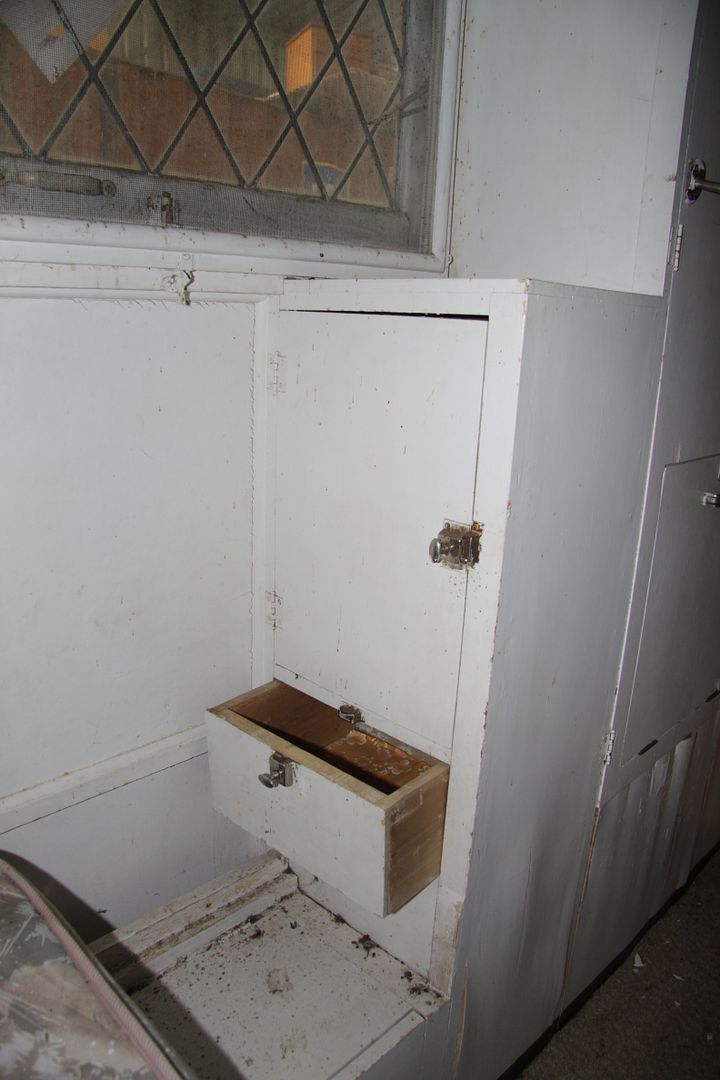 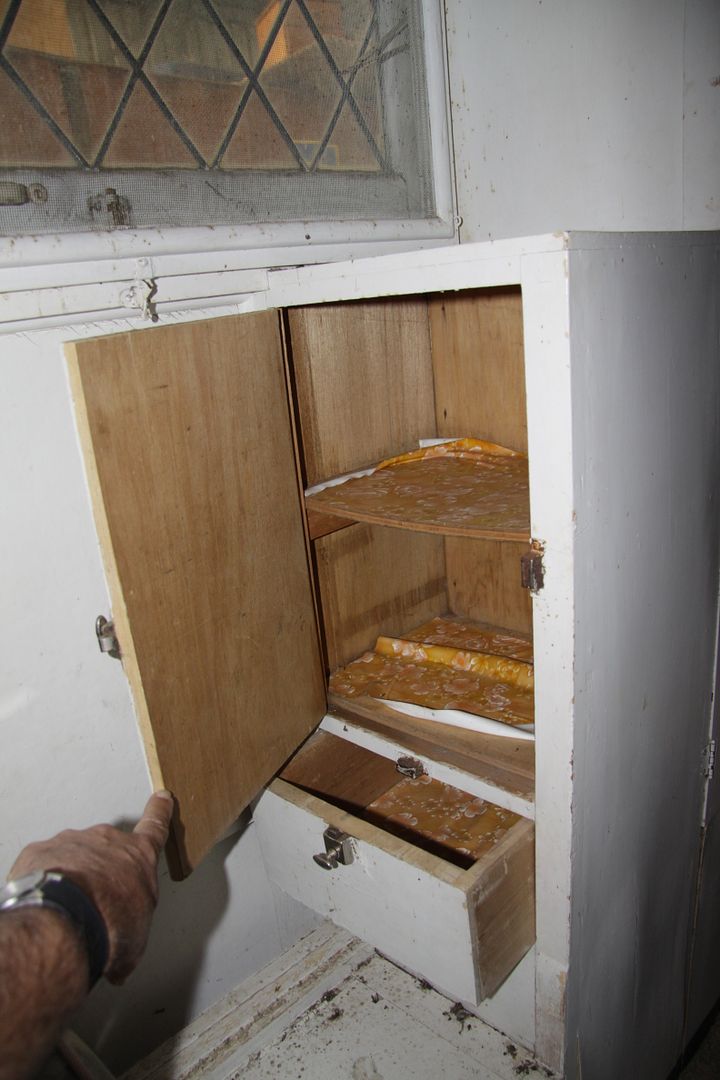 And of course the wardrobe with cut glass mirror... 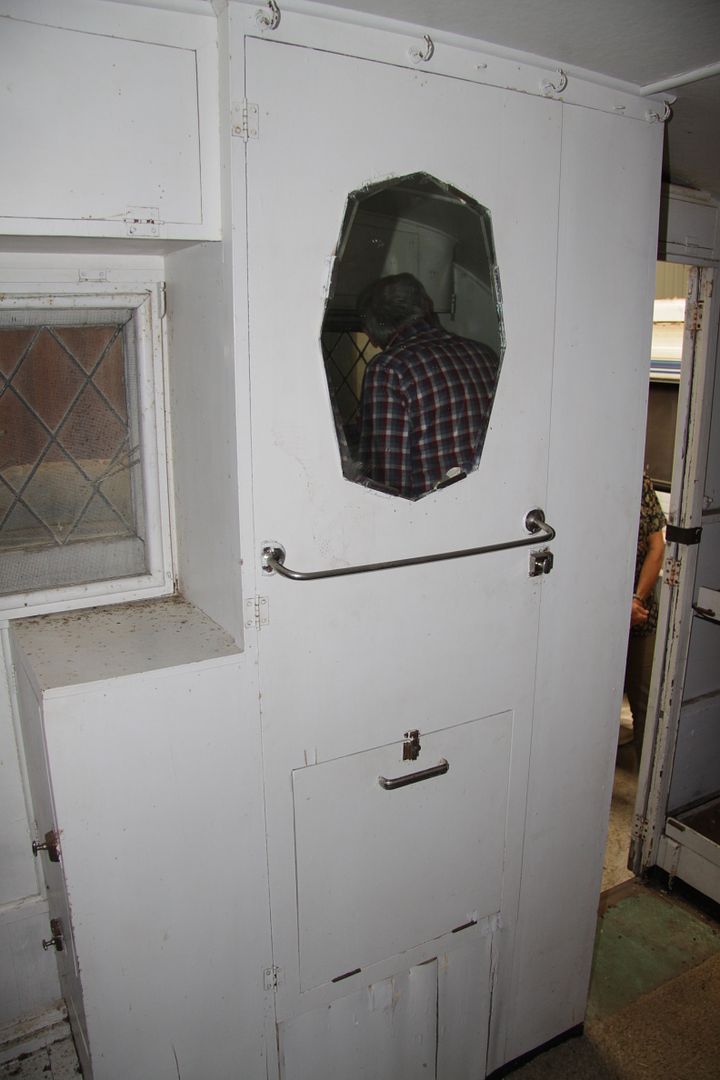 ...drop down handbasin cupboard... 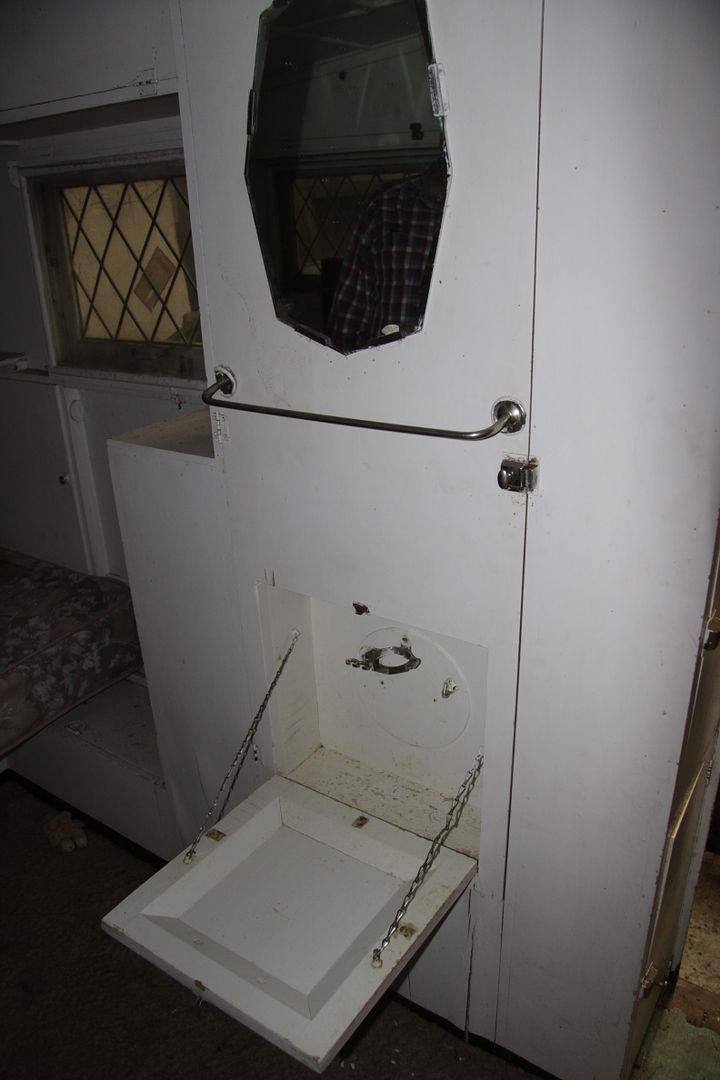 ...and slide-out clothes rack: 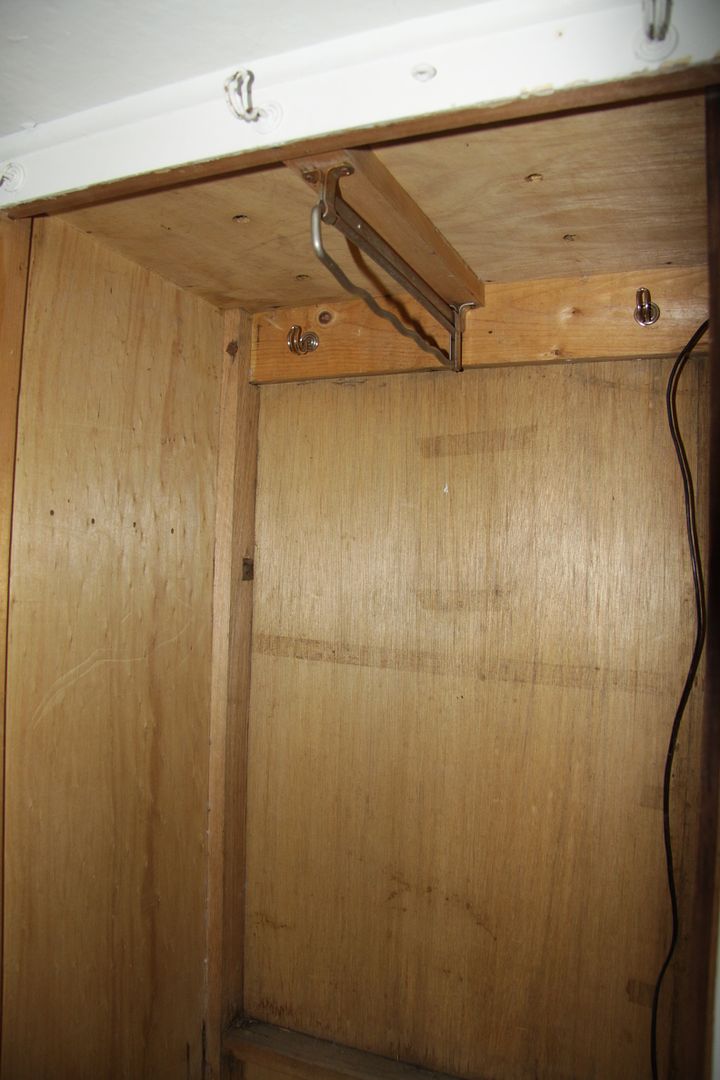 All the wardrobe fittings are familiar Don features. Round from the wardrobe in the doorway, there are the standard three cupboards... 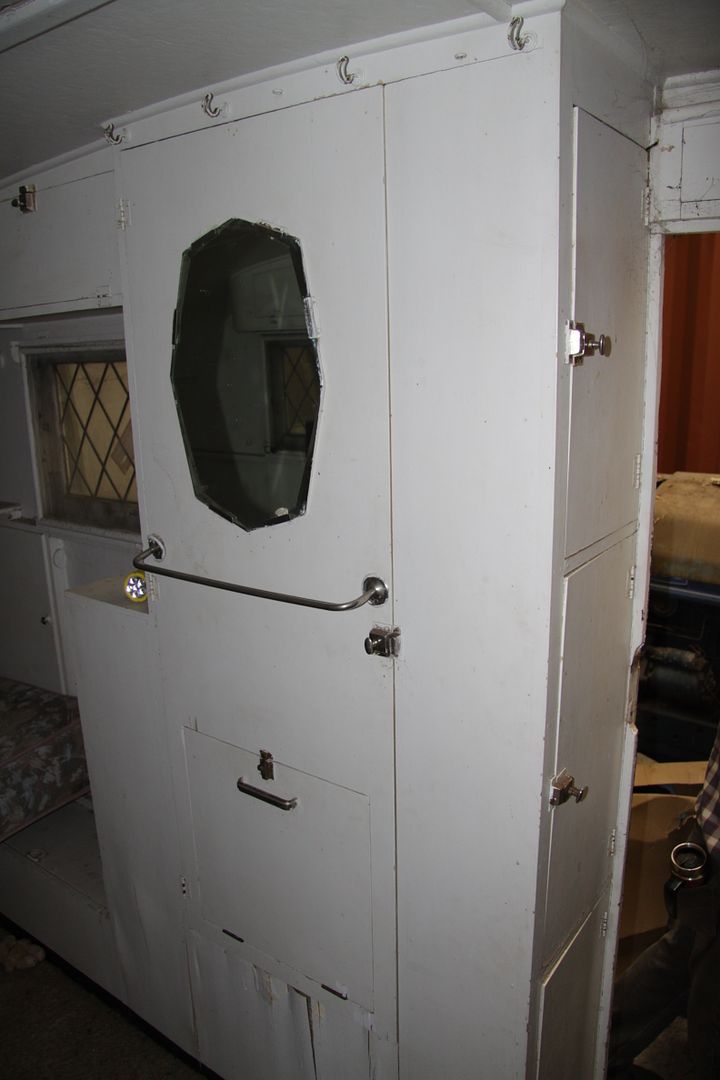 ...with the lower cupboard housing the familiar battery box:  And the table, I hear you ask, where's the table? The table folds up against the offside wall when out of use, and then folds down in front of the rear day-night lounge when in use: 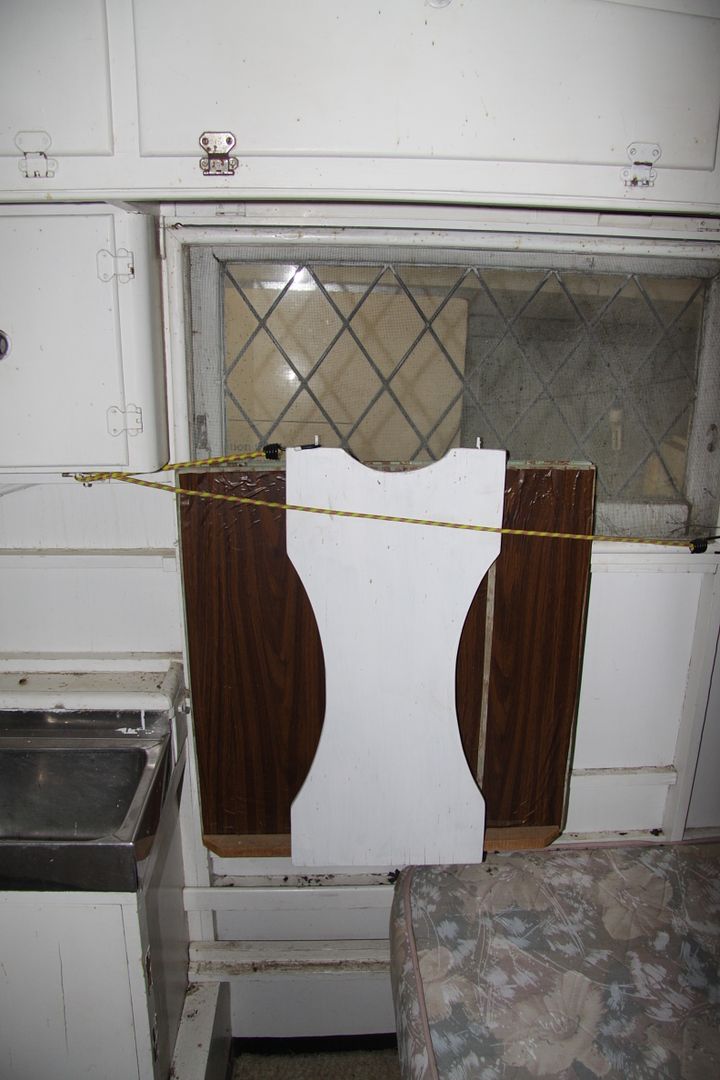 A photo of a Don caravan with the same layout, and the table down ready for use, can be seen in a 1937 article posted above here. This design was later adapted for the Don 10 ft 100 model, while later 120 4-berth models ended up with a dinette at the rear that folded down to a double bed, and the 122 3-berth model ended up with a two seat dinette at the front that folded down into a single bed. Interestingly, Number 30 was single skinned. Neil's grandfather and father utilised that fact to build in some extra cupboards, such as this one beside the rear day-night lounge... 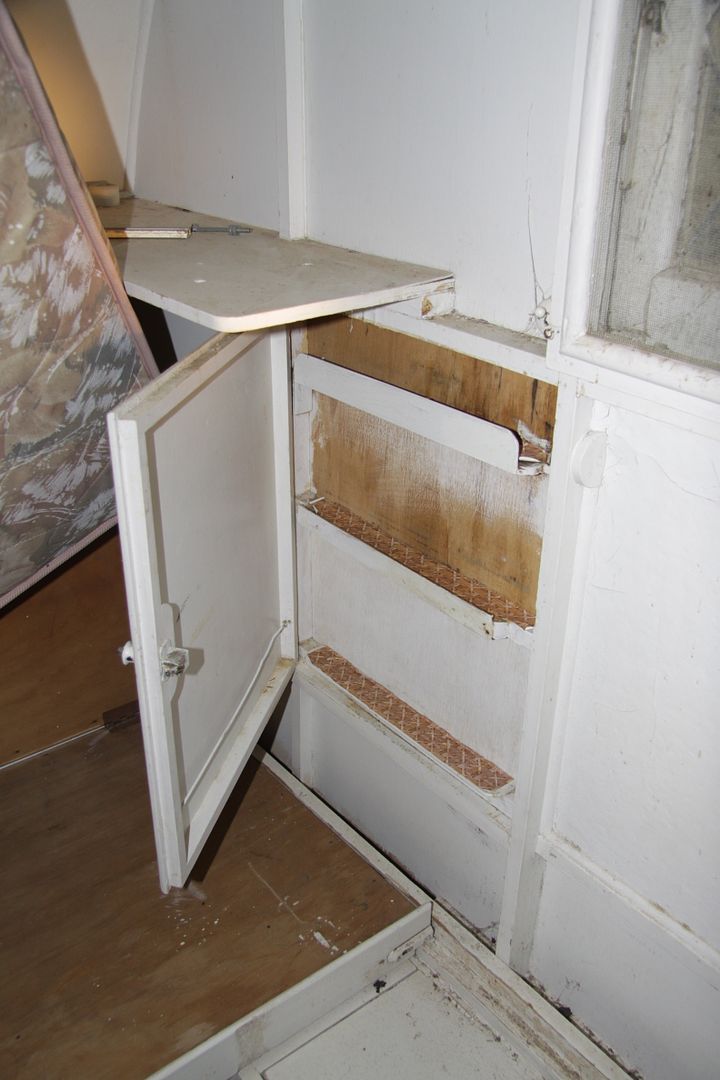 ...and an extra cupboard over the sink and above the water tank. (The clock is also a Walsh addition.): 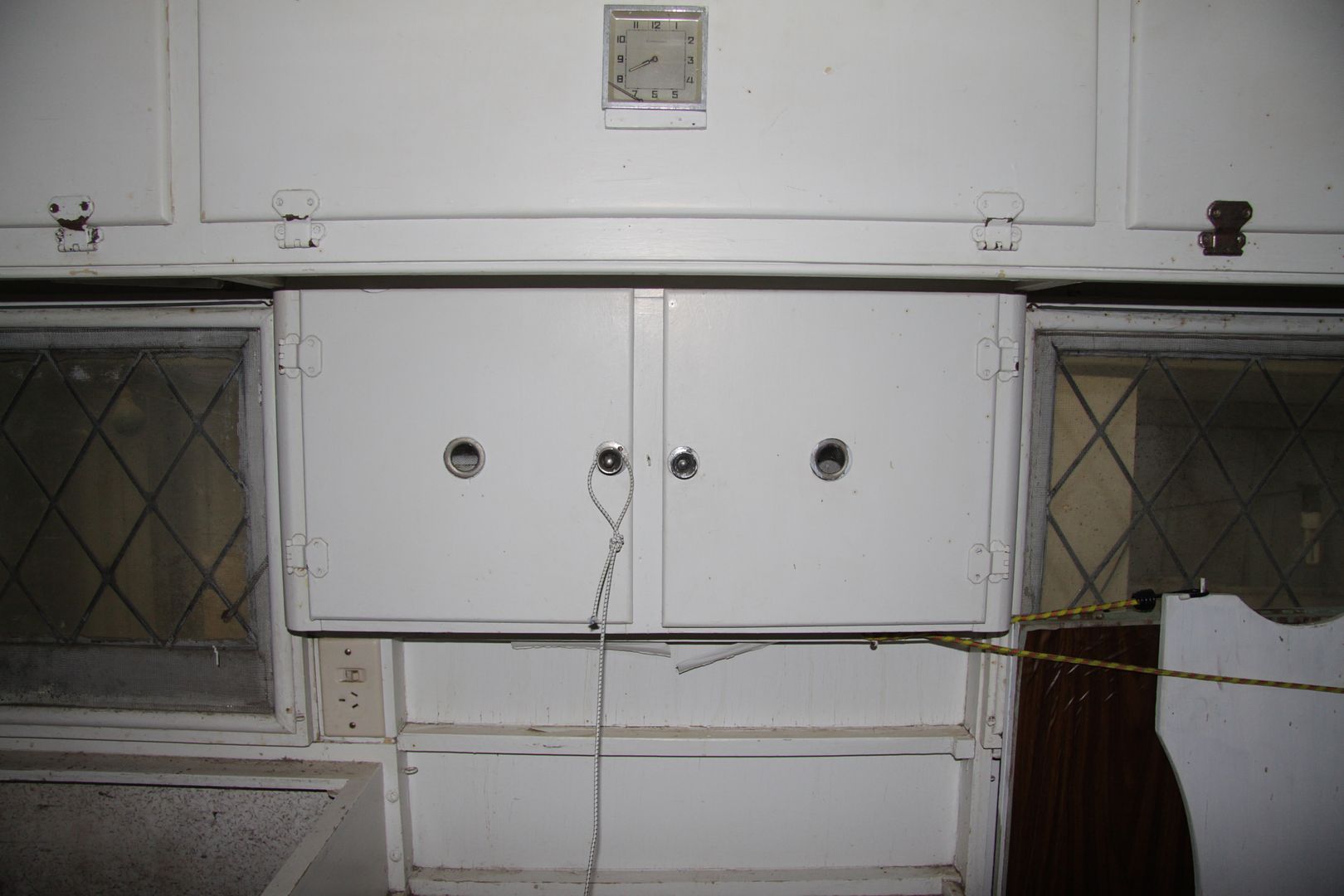 There is one electric light on the wall just inside the door...  ...with the switch just inside the door jamb: 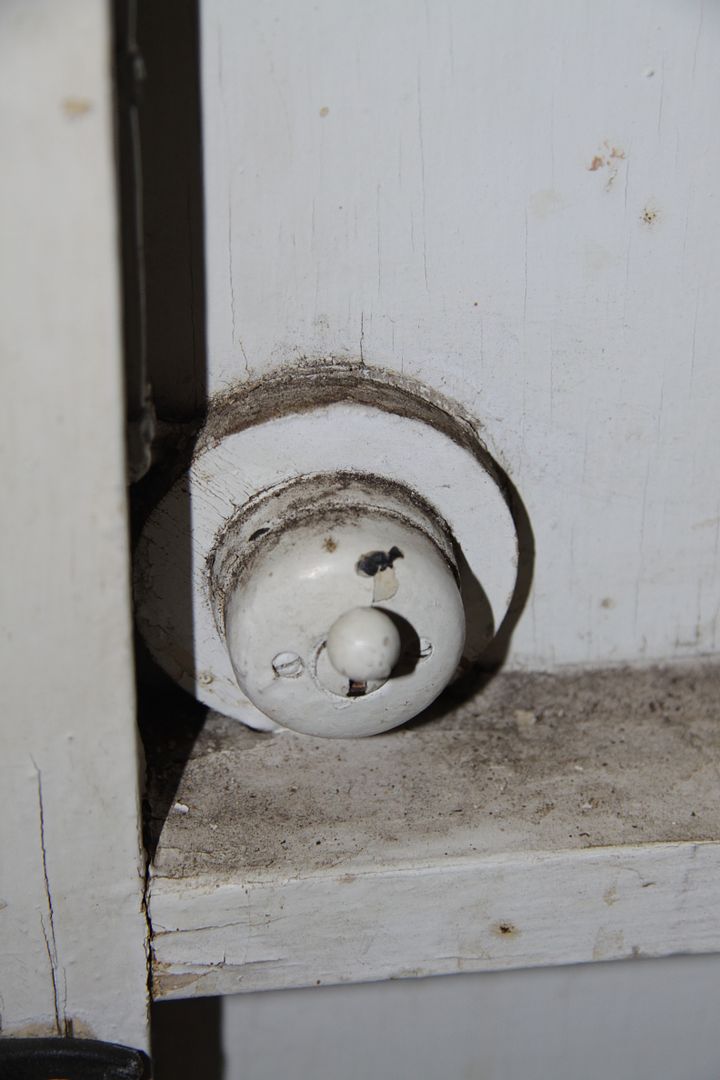 There is also a light at the rear on the wardrobe side above the day-night lounge (see photo above). Flywire catch: 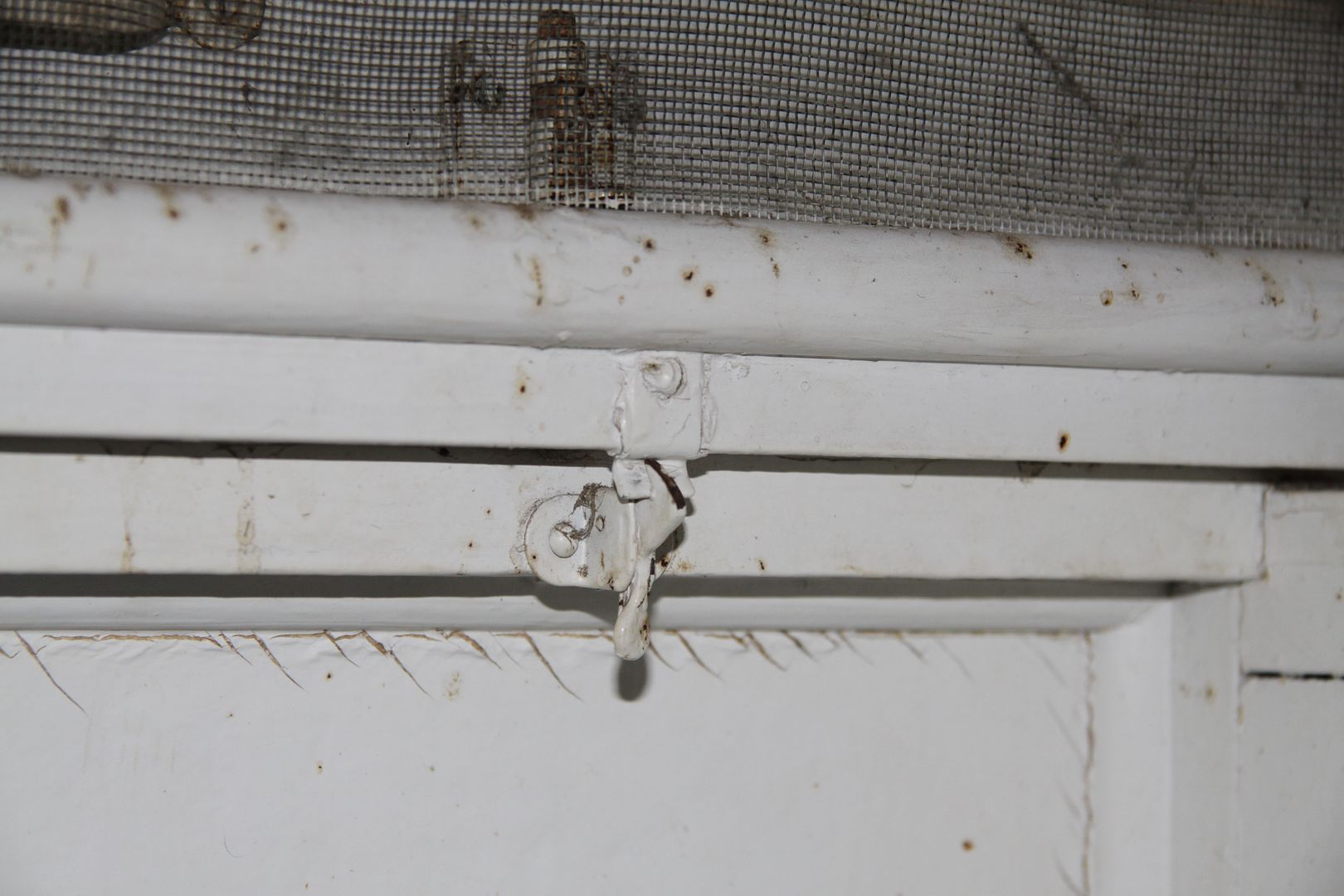 Underneath the carpet on the floor was a remnant of the original lino - green of course! 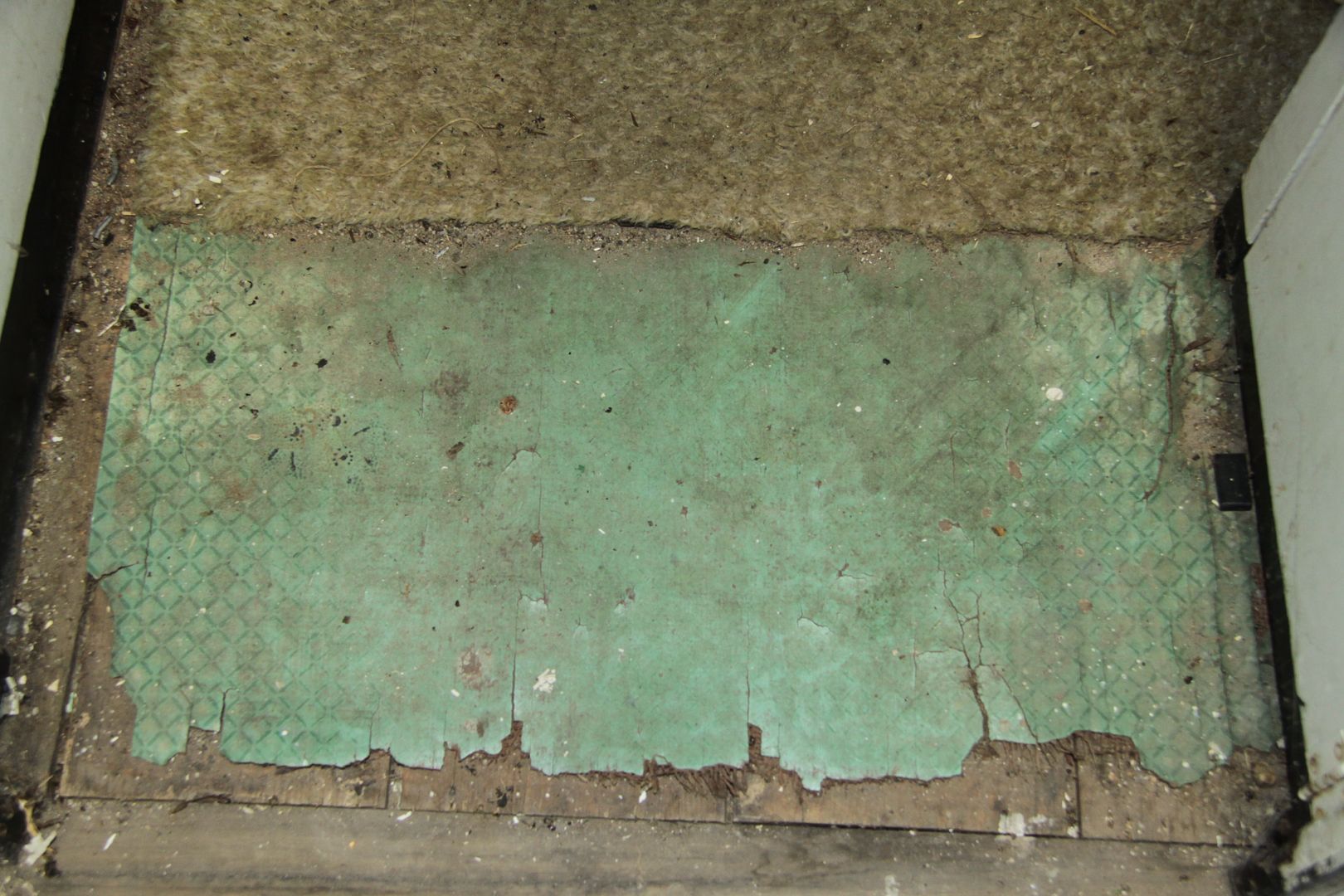 At some point, Number 30 had a gas bottle and gas stove installed. That definitely wasn't a factory option on Dons in the 1930's, in fact it wasn't made available as an option until the early 1950's. The stove installed in Number 30 looks quite modern compared to the van. It's Shields and is sitting on a shelf in the shed ready to boil the kettle: 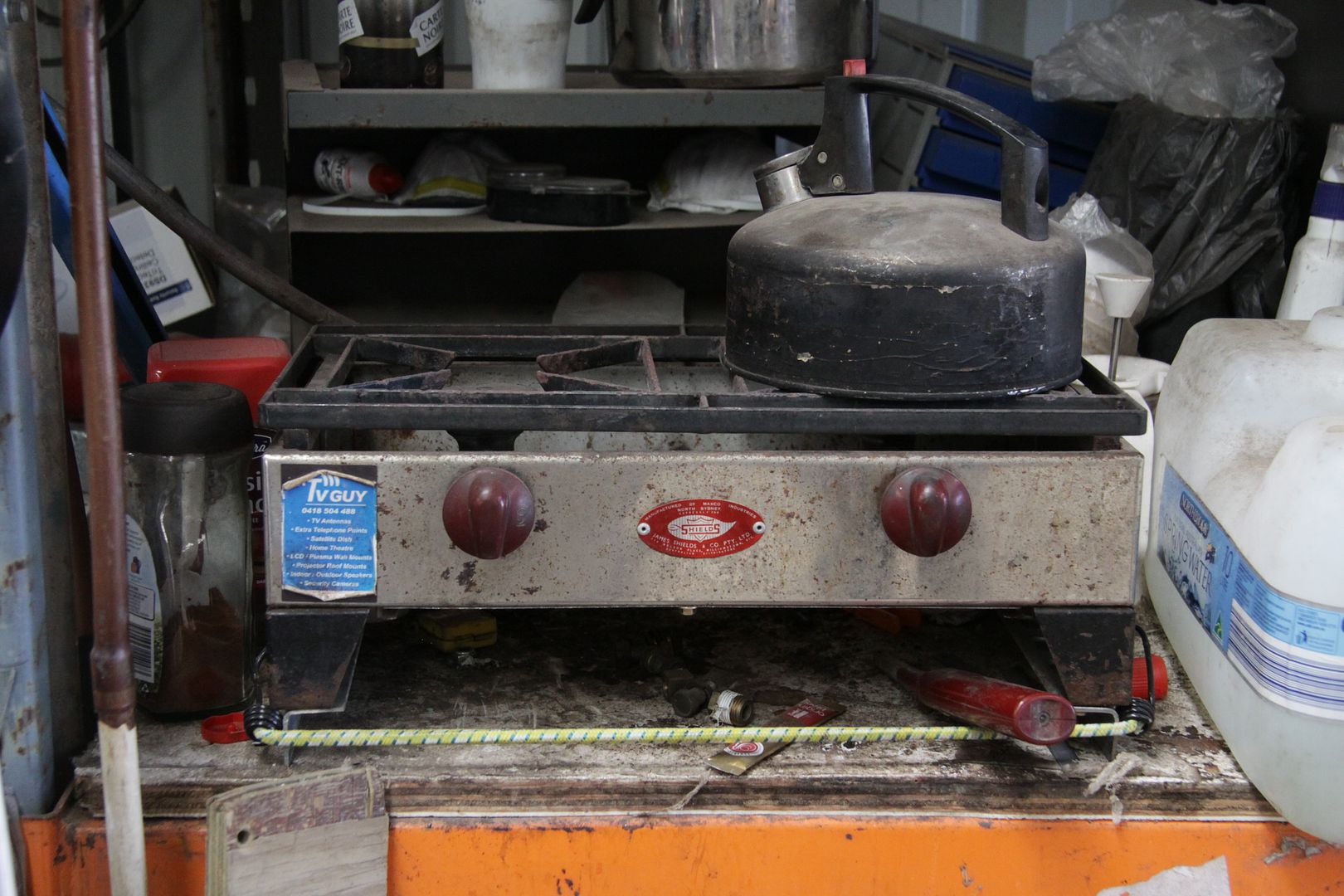 Sharp eyed Don observers will have noted from the Caravan World photo at the beginning of this post, that there is no Don badge on the front of the van. That's not a surprise, because it seems that the badge only began to be put on the front of the van as well as the back in the late 40's. And of course, I couldn't access the back to see if there was a badge...but that doesn't mean there wasn't one. And when Neil showed it to me, the biggest surprise was the colour: 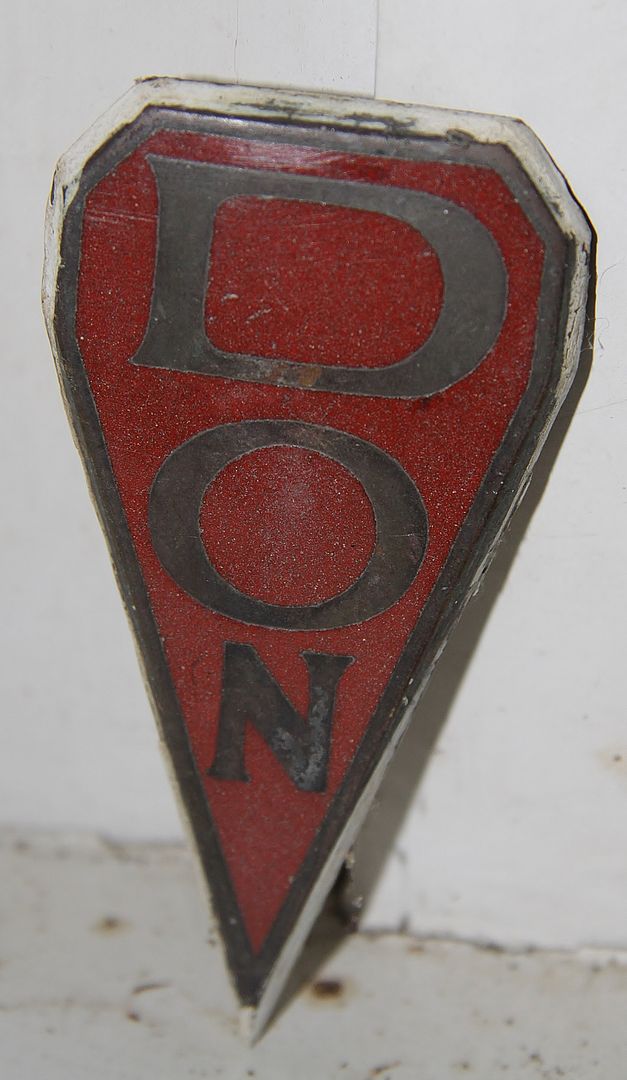 RED! RED! Not green! I hadn't ever seen a Don with a red badge before, and at this point we don't know when the colour changed to green. However, Surf Tragic tells me that he once saw a Don with a red badge at a Victorian beachside caravan park. Must have been another early one? There was another little surprise in Walshs' shed, but this has been a long post, so I'll leave that for another day. Don Ricardo |
|
|
|
Post by Don Ricardo on Sept 19, 2018 15:31:47 GMT 10
|
|
|
|
Post by Don Ricardo on Sept 20, 2018 22:52:31 GMT 10
Evening all, A final little snippet from our visit to Neil Walsh to see his Don Number 30, reported in the previous posts. In between the 1930's Don and the 1960's Don Cadet, Neil's grandfather also owned a 14 ft Don 140. At one point the Don 140 met with an accident... 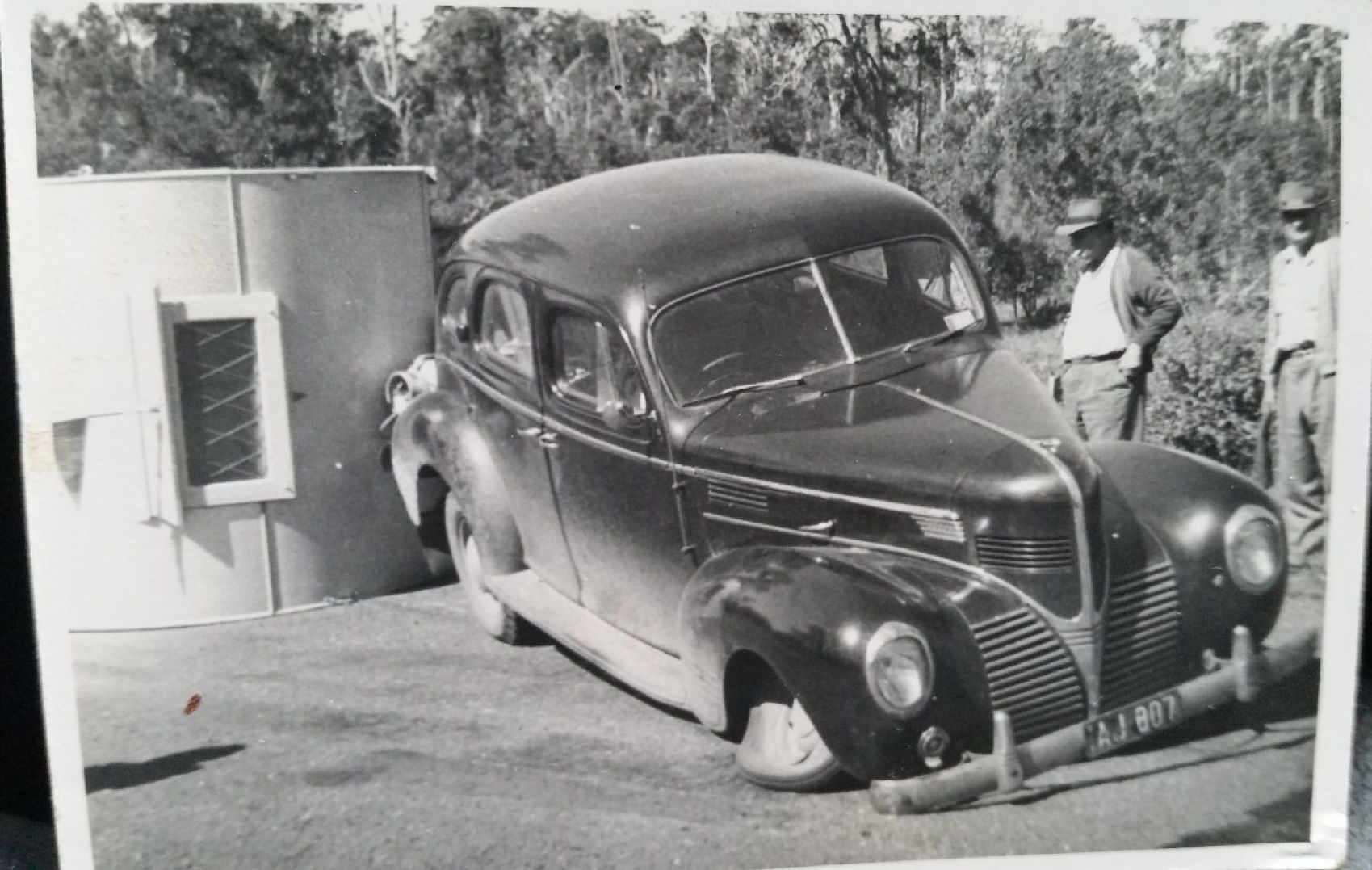 ...turning on its side in the process.    Initially everyone seeing the accident occur thought that that would be the end of the caravan. However, to everyone's amazement, when the van was lifted back on to its wheels, there was no serious damage. Not even many of the cupboards had opened inside, although the contents of the cupboards had obviously been tossed around. The car sustained more damage than the caravan, and Neil's grandparents continued to use the van for some years after the accident. Dons were obviously made of tough stuff!! If I remember rightly, the guy nearest the car is Neil's grandfather. Wal Robinson will tell me if I'm wrong about that. Don Ricardo |
|
|
|
Post by Mustang on Sept 21, 2018 21:12:33 GMT 10
Wow what a photo for the time, wonder if the tow vehicle suffered a front RH blowout?
|
|
|
|
Post by stephen&Julie on Aug 22, 2019 20:32:05 GMT 10
|
|
|
|
Post by Don Ricardo on Dec 10, 2019 15:10:09 GMT 10
Hi all, Recently an interesting photo turned up, posted by Phil Solomon on the Vintage Caravan Facebook page: 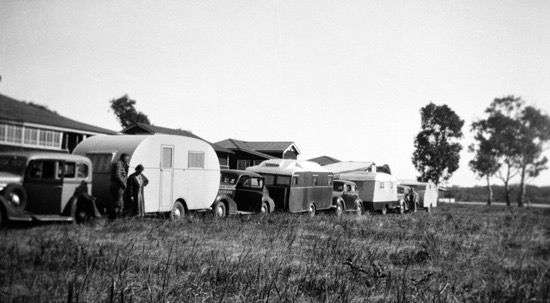 The photo is quite a significant one in terms of Australian caravan history. The lead caravan in the convoy is a Don owned by Dick Robinson and Mrs Robinson, who were the parents of Don Robinson, the designer and manufacturer of Don vans. Mr and Mrs Robinson can be seen standing near their caravan. In 1939 the Robinsons took their caravan on a trip north to Queensland. You can read about the journey higher up this thread here. On their way north the Robinsons met up with some other caravanners who were traveling independently, and they all ended up traveling in a convoy for part of the trip. This photograph shows the convoy. Given the style of housing behind the vans, I am guessing that the photo was taken somewhere in Queensland. The third caravan from the left is a Windsor. The second caravan from the left has a really interesting roofline, which I've never been able to properly see until now. At this point we don't know what type of van it is, but it looks to be well constructed. I would love to know who took the photo. It might tell us who else took part in the caravan convoy with the Robinsons. Unfortunately Phil doesn't remember where he found the photo. It's amazing what fantastic photos turn up from time to time. Thanks to Phil Solomon for taking the trouble to post this one. Don Ricardo
ADDENDUM - November 2022: This same photo was posted by Kenny here on 28 November 2022. His post (and the label for his photo) provided some more information about the photo: - It was taken at Munna Point in Noosa, Queensland, confirming that it was indeed taken in Queensland.
- Further inspection of the second caravan with the unusual roofline suggests that it may very possibly have been a late 30's Brindle caravan.
- The source for the photo was Sunshine Coast Regional Council Library.
Don Ricardo |
|
|
|
Post by Roehm3108 on Dec 11, 2019 7:01:33 GMT 10
That second caravan is reminiscent of the early English Eccles. I reckon cobber will have the answer!!
|
|
|
|
Post by Don Ricardo on Dec 11, 2019 22:18:21 GMT 10
Hi Roehm,
That’s an interesting comment about the Eccles. However, I’ve had a look at my books about English caravans and those from the 30’s all seem to have standard lantern rooves. The van in the photo doesn’t seem to have a regular lantern roof with the little windows down the side. It is a much more complex shape than that, and there seems to be a vent or something in the hump at the front of the roof. The complexity of the shape is what makes the van so interesting. I can’t find any pics of an Eccles or other British van with a roof like that. In addition, while there’s been suggestions over the years that British vans were brought to Australia in the early days, I can’t think of any evidence that they were. So it’s quite possible that the second van in the photo was “home grown”.
Don Ricardo
|
|
|
|
Post by Don Ricardo on Jul 31, 2020 19:51:50 GMT 10
Good evening to all those of you are are dedicated to understanding the minutiae of vintage caravans construction...    One of the items of optional equipment listed in the sales brochure for late 1940’s Dons was a “Radio (latest vibrator sets)”. Then in the ‘General Specifications’ section, under the heading ‘Electrical’, the brochure says: “Battery, aerial, and earth leads wired to radio shelf, with 50 feet of aerial wire built into roof. (All models except ‘Utility’).” [The ‘Utility’ model was the 12 ft 121 commercial/work van model.] At the beginning of 2019, friends of the forum Sandra & Dennis acquired a 10 ft Don 100 with the serial number 373 which was built just before, or more likely just after World War II. Restoration of the van required replacement of the bondwood roof, which when opened up revealed the aerial wire laid out above the caneite ceiling and threaded through the roof struts. 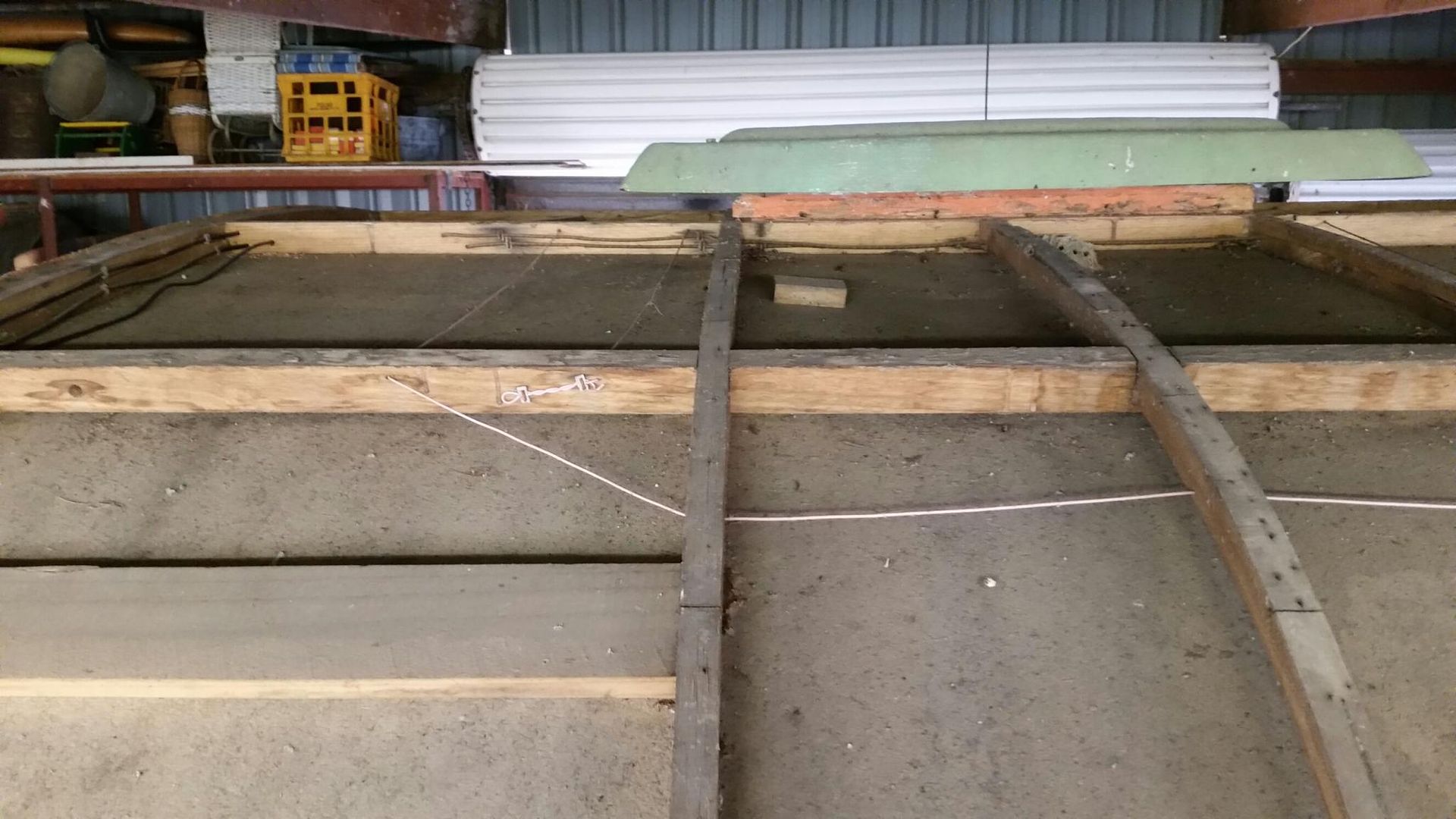 Note that the hatch on the van when the photos were taken is not original and was installed by a previous owner. Thanks to Sandra & Dennis for providing these photos. Don Ricardo |
|
|
|
Post by Don Ricardo on Apr 5, 2021 19:55:59 GMT 10
G'day all, Don536 recently posted about her 12 foot, ex-Victorian Public Works Department Don 121 here as follows: Hi, I have a Don caravan no 536, it’s originally a Public Works Department van and I purchased it back in about 1982/83 for $125 when the government were selling them off.
My dad and 3 other men used to go away in them in the early 50’s and beyond ( all worked for Public Works) for weeks on end...
In the late 70’s early 80’s they were used for site sheds and lunchrooms on construction sites I worked on, still Public Works.. Because of my interest in the history of Don caravans, I expressed interest in hearing about Don536's van and was bowled over to discover that we live less than 2 kilometres from each other! Don536 invited me around to see her caravan and she and I spent an interesting couple of hours examining her van, looking at her collection of 'Don photos', and sharing stories. My visit to Don536's house to see her van was followed by her visit to our place to see our caravan. The discussion with Don536, together with her photos, told us quite a lot about some of the distinctive features of the Don 121 model, and I have chosen to post some of that information on this thread because it relates to the history of Don caravans, but some of Don536's photos about her specific caravan have been posted on the thread she started here. The Don 121 model was a commercial caravan which the Don Caravan Co. called its "utility" van. The 121 was 12ft 10in long and you can find Don's specifications for the model here. 121 models vans were used extensively by a number of government organisations including the Victorian Public Works Department (PWD) and the PMG, and were relatively stripped down, spartan vehicles (compared to the recreational models) as perhaps befitted a worker's utility caravan. The serial number of Don536's van, as indicated above, is number 536 and my best estimate is that it was built in 1950. As Don536 told us, her father worked for the Victorian PWD and the department's vans were used both to provide on-site accommodation for workers, as well as lunch rooms, etc. Don536's father was a photographer and took photos of the places around Victoria where he was working, and some photos included some of the Dons they were using on-site:  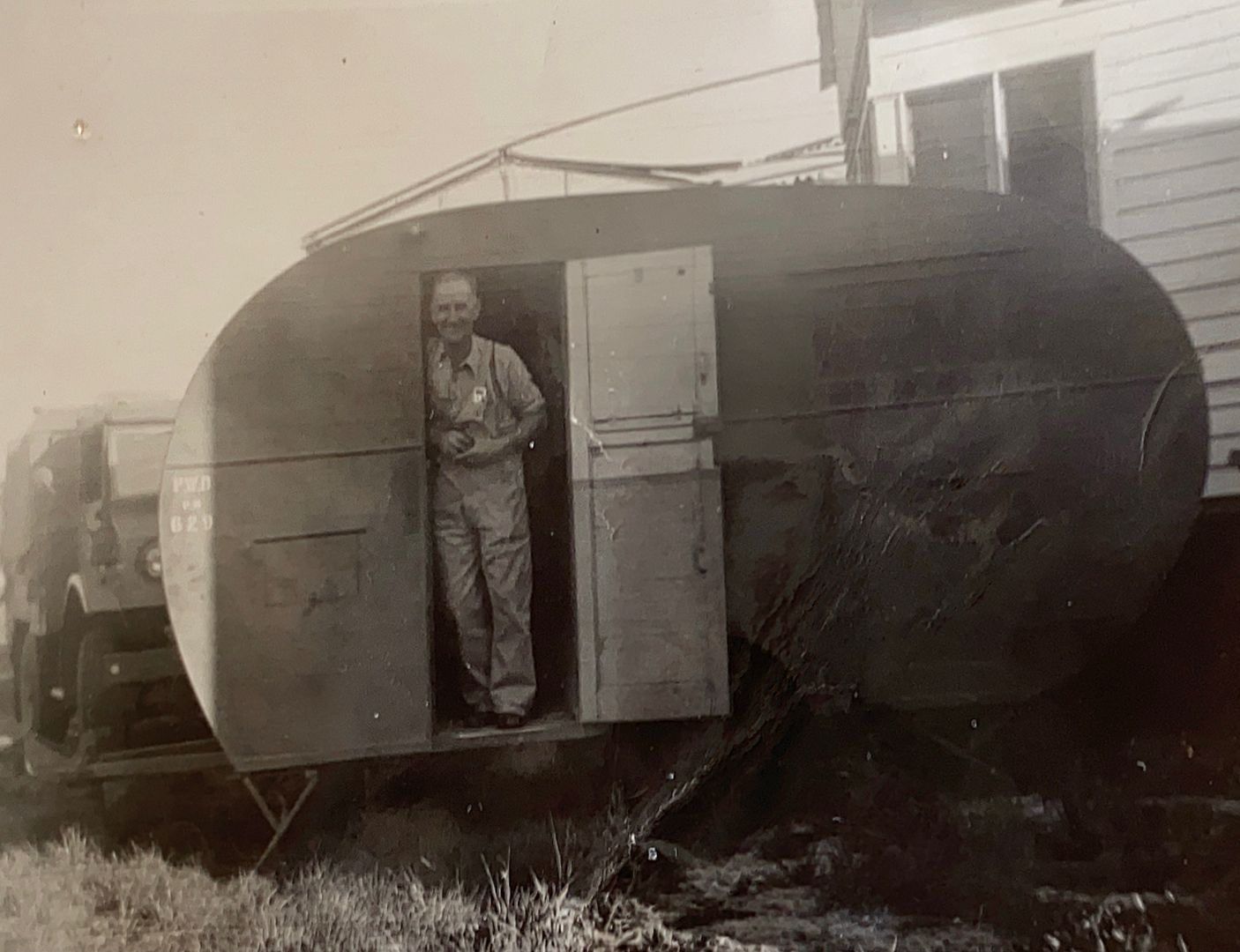  These photos show that the 121 models were to a large extent standard Dons in terms of shape and many of the fittings. For example, the vans used standard 120 series doors and standard Don corner jacks. As can be seen from the second and third photos, the 121 vans used the standard leadlight Don windows. However, these last two photos also show something very unexpected, and that is that the vans not only had a bottom bunk ventilation hatch for the front bunks (just to the left of the door), but they also had a bottom bunk ventilation hatch for the bunks that were installed at the rear of the vans (see below the rear windows). Another interesting feature of the 121 model compared to the other 12 ft models is that they had small fixed front and rear windows, instead of the larger and/or opening front windows installed in the recreational Dons (depending on the model). One side benefit of working for the PWD back in the day was that the workers were permitted to take their families away for holidays and use the Don 121's for family accommodation wherever the vans were located at the time. Don536 remembers a number of happy holidays away in different places with her father and family, and developed a great affection for the vans, even though they provided spartan accommodation. After finishing school, Don536 also began work with the PWD as a painter, sometimes using a Don 121 as a lunch room or storage shed. Therefore when Don536's father told her in 1982 that the PWD had decided to dispose of the vans by auction, she determined to acquire one for her own holiday use. Don536 says that when they went to the auction there were hundreds of caravans for sale, and her father inspected some of the Dons for possible purchase. He recommended three vans for her to bid on and she was successful in winning serial number 536. The following photos show number 536 as purchased, with the first photo showing the reference number for the auction on the front panel below the window: The above photo also shows that the PWD Dons did not use the standard Don 'captive ball' coupling, but instead used a modified coupling head (see later photo) and a simple tongue which was attached to the tow vehicle with a pin.
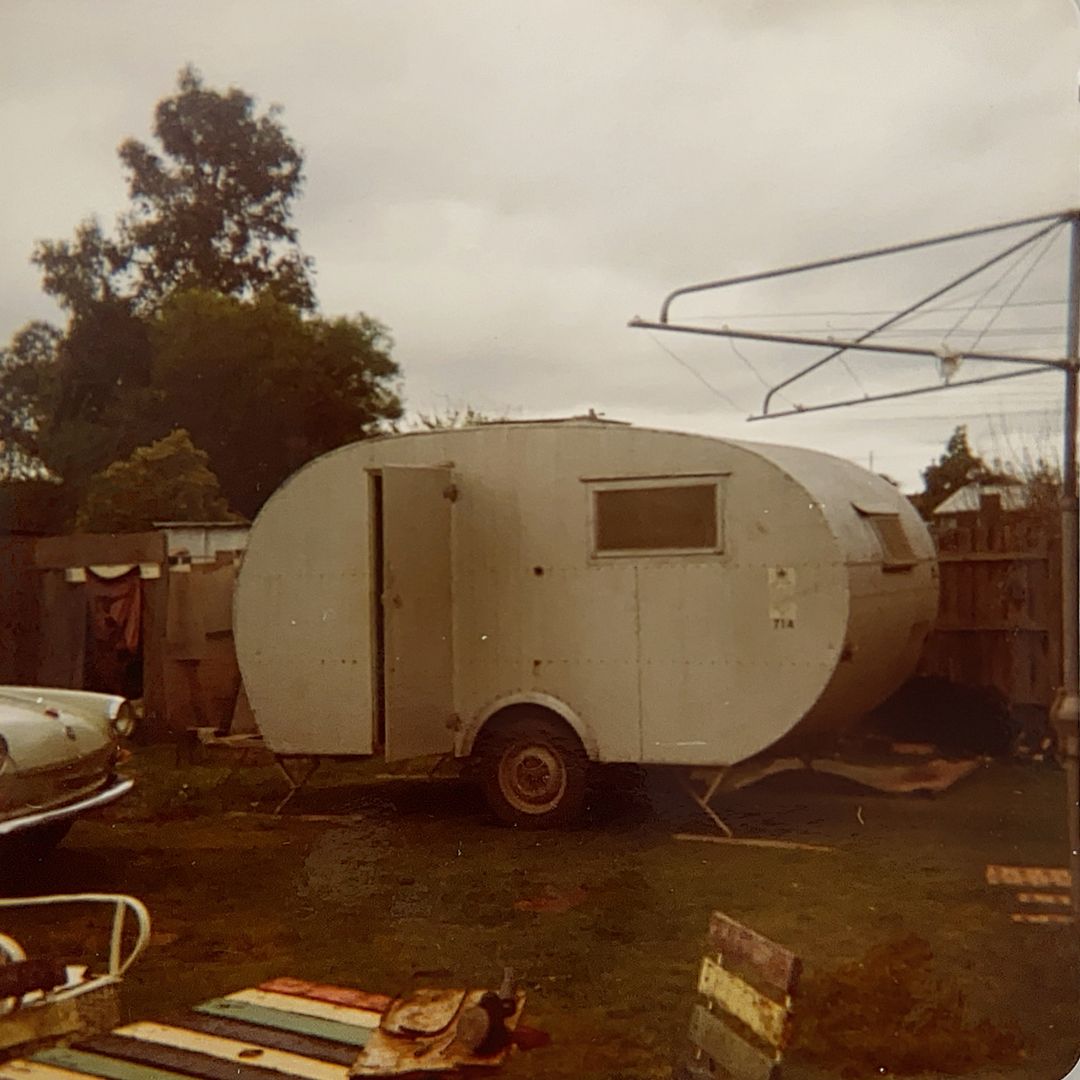 [/div] The above four photos of Don536's van just after purchase show that at least some of the vans had been modified over time by the PWD. The original door with hatch had been re-clad with a single panel on the outside, and the leadlight windows had been replaced by plain glass. In addition the van had been clad in aluminium sheeting. The sheet on the roof is plain, flat cladding, and although it is not very visible from these photos the van front, rear and sides of the van had been clad in multi-strand ribbed cladding with the ribs running vertically rather than the usual horizontal orientation. The first photo in the series also shows that the van had been fitted with a holder for a gas bottle. It is unclear whether this was original equipment from 1950, because Don's recreational vans were not plumbed for gas until a year or two after 1950. The second and third photos of Don536's van also shows a PWD sticker and a number '712' which was probably the PWD asset number for the van. Don536 has an example of the sticker:
Don536's 121 van had a lot of use for holidays and as a study space for her children over the years, and some photos of the van between 1982 and the present have been posted on Don536's original thread. The van is currently temporarily covered by a tarpaulin, so I wasn't able to get a lot of photos as it is now, but Don536 did very kindly move the tarpaulin sufficiently for me to look inside, and to photograph some further features of the 121 utility model. This photo shows the Don serial number plate which has been moved from its usual position on the external wall adjacent to the left hand corner of the door to a location mid way up the wall (the 'B' was added by Don536's daughter): The front of the van originally had two bunks placed across the front wall. These were removed by Don536 to allow a study desk to be installed in their place. Note also the floorboards:
If you look carefully in the ceiling panel immediately above the front window, you will see a small bracket that was used to hold the top bunk up in a vertical position when not in use.
Two bunks were also installed at the back of the van, allowing it to accommodate four men. Don536 has installed a single bed in their place. This photo also shows a bracket above the rear window which was used to hold the top bunk in vertical position, the same as at the front. The current wardrobe was installed by Don536 and is not as deep as the original: The offside galley cupboards in the van appear to be original and show the standard Don fittings from the period, however the current bench top is Don536's installation. There was apparently no ice box provided in the PWD 121 vans, nor is there any sign of a standard Don stove alcove although there is a range hood and flue, and a small gas stove was included in Don536's caravan, sitting on the bench top. There is no sign of head high cupboards on either side of the van: .JPG?width=1920&height=1080&fit=bounds) The splashback is not original. Note also in the above photo that the clips holding the flywire screens in place are the cheaper sprung hook type rather than the chromed latches used in Don's recreational caravans. The range hood and flue is quite substantial: My first guess was that the range hood was identical to the enclosed hoods used in the 14 ft recreational Don 140's, however on comparison this is not the case. The hood is both wider and longer than the 140 hoods, and the flue longer and hood lower than on the 140. The flue connects with a 'chinaman's hat' chimney cap on top of the van, similar but not identical to the chimney cap on the 140 model: I forgot to check whether the flue has a mechanism for closing it when travelling to keep dust out, however if it does, it has a different mechanism to the system used in the flue on the 140 model. The sink in Don536's van is a simple enamel bowl set into the bench top, not the stainless steel sink and draining board that are found in the recreational vans: If you look carefully at the following photo you can make out the original thin ply bench top sandwiched between the edge of the sink bowl and current bench top, which has been overlaid over the original: Don536 installed a pump tap over the sink that connects to a 10 litre plastic water bottle in the cupboard under the sink to provide water for the van. One would think that the van might originally have had a water tank and tap operating by gravity over the sink like the recreational vans. However if this the case, no signs of it are now visible, and Don536 does not remember any arrangement of this type. Lighting appears to have been provided from light bayonets attached to the walls: This is one of the light switches. Note that the van is double skinned throughout: After Don536 purchased her van, her father replaced the original tongue used for towing (shown in one of the photos above) with a regular coupling for use with a tow ball as seen below. However this photo also shows the modified coupling head used on the 121 models, which has a lower profile and a different shape to the captive ball coupling head used on the recreational vans: This photo shows one of the standard Don corner jacks used on the utility caravans: The bunk beds used in the utility vans were pretty rustic, but at least they were sprung! This is one of them: The bed frame in this photo is perfectly straight but looks bent because of the angle I took the photo from. As is evident, the bed frame is quite narrow. Don536 told me that one of her father's co-workers was 6ft 5in, and given that the body of the van is 6ft 4in wide, including the double skinned walls, she wonders how he ever could have got comfortable on the bunk bed. In addition the van is 6ft 1in at its highest point, so the co-worker must have always been bent down when he was inside the van. Don536's caravan has provided a lot of valuable information about Don's 121 utility model, so I wish to thank her for sharing her photos and allowing me to look through her caravan. Don Ricardo
|
|
|
|
Post by Don Ricardo on Sept 30, 2022 15:43:11 GMT 10
Article from the February 1955 VR News Letter (pages 4-5) posted by Rodericksmith on 4 June 2022 here:.png?width=undefined&height=undefined&fit=bounds)
After examining the photos of the caravans, Don Ricardo commented the same day:...That’s a fascinating article on the railway caravans. I hadn’t heard of them before. But I’ve got a strong feeling that the four squarish caravans in the middle were built by Don. The construction and design of the doors, the A-frames with the lifting handles, the couplings, castor wheels, stabiliser legs, steps, and front window all say “Don” to me. Similarly some of the cupboards and clasps in the internal photo on the first page of the article look like they’ve been done by Don. I’m imagining that I can see a triangular Don badge under the front window of the first caravan too, but that may be pushing things too far! I’ve never seen a Don with a roof like the one on those caravans, but I know they did some one-off work for commercial customers. I’ll contact another forum member, Surf Tragic who has restored a number of Dons and knows therm inside out, and see what he thinks...
On 5 June 2022, Surf Tragic responded:Don Ricardo, you have a discerning eye ! I wouldn't have given these vans a second look because of the shape, but now you have brought to our attention some interesting points, also that Don did make some unusual "One Offs". The door is an exact replica of the general Don door, the fold down internal door flap, it's bumper & elbow catch, handle & top bolt. Wind down legs look same, Chassis would appear to be 75mm on these 4, whereas general was 2 / 5ox50x5mm angles welded to make a box which is 55x55. The captive ball appears to be missing, with a flat (not so deep) portion possibly with a large hole that would hook over the towbar attachment. (just guessing) but would be typical of railway vehicle couplings. The first chassis is shaped different to the next 3, the angled plates on the tow part of the "A" frame are quite different, and the cast wheel is not directly under the jockey wheel shaft, the others are like original Don cast wheels & winder shafts exactly, so one odd one ! I really feel convinced they are from the Don Factory, I can't imagine Don allowing his patent mechanical designs & wooden designed windows & doors be used by others. I've sent photos to George Brown who was in the factory since his start as an apprentice to when the factory closed, & asked if he recalled a batch like this going through, and do hope he is well enough to answer my letter, as he wasn't in good health last time we spoke...... George was the leading Joiner. I notice the cupboard doors have "D" handles with the catch button in the handle & have never seen any Don joinery in any other van with hardware like that. I guess you are waiting to hear from Wal Robinson also, we had a short chat but he was out visiting & it wasn't suitable. Interesting !.......Surf Tragic
Rodericksmith also commented on the same day:The lack of a ball would be standard for industrial trailers: trucks towing machinery to worksites. I am not sure of the procurement process, and tracking tenders would be tricky. If VR had to call for competitive tenders, they must have been advertised somewhere. Seeking concepts from different makers would have been in keeping with decades of loco procurement. VR was notorious for obtaining sample locos from well-known makers, then producing its own copies. In 1955, how many makers would have been in a position to respond? Don was well established. Did the variety in styles result from selecting different makers, each putting up their concept? One possible contender would be Commonwealth Aircraft Corporation. It was desperate to keep its team together, and switched its emphasis to bus bodies, using aeropspace techniques. Responding to such a tender would be in character... I have just tried Trove...  (Source: Melbourne Argus, Wednesday, 17 March 1954 (page 12) nla.gov.au/nla.news-article26597072Actual advert substituted for text from original post.) That morphed into 24. If there were three of a kind from Don, that hints at three each from eight makers. Or, there were more Dons in the next row. 'Four types' hints at six vans from each of four makers.
For those interested in details, I have just noted the water tank and tap above the sink in the second photo on the first page of the VR New Letter article. It is 100% a Don gravity feed water tank and to my mind provides further definitive proof that the four vans in the centre of the first photo were built by Don.
Don Ricardo
|
|
|
|
Post by Don Ricardo on Feb 8, 2023 12:56:21 GMT 10
|
|